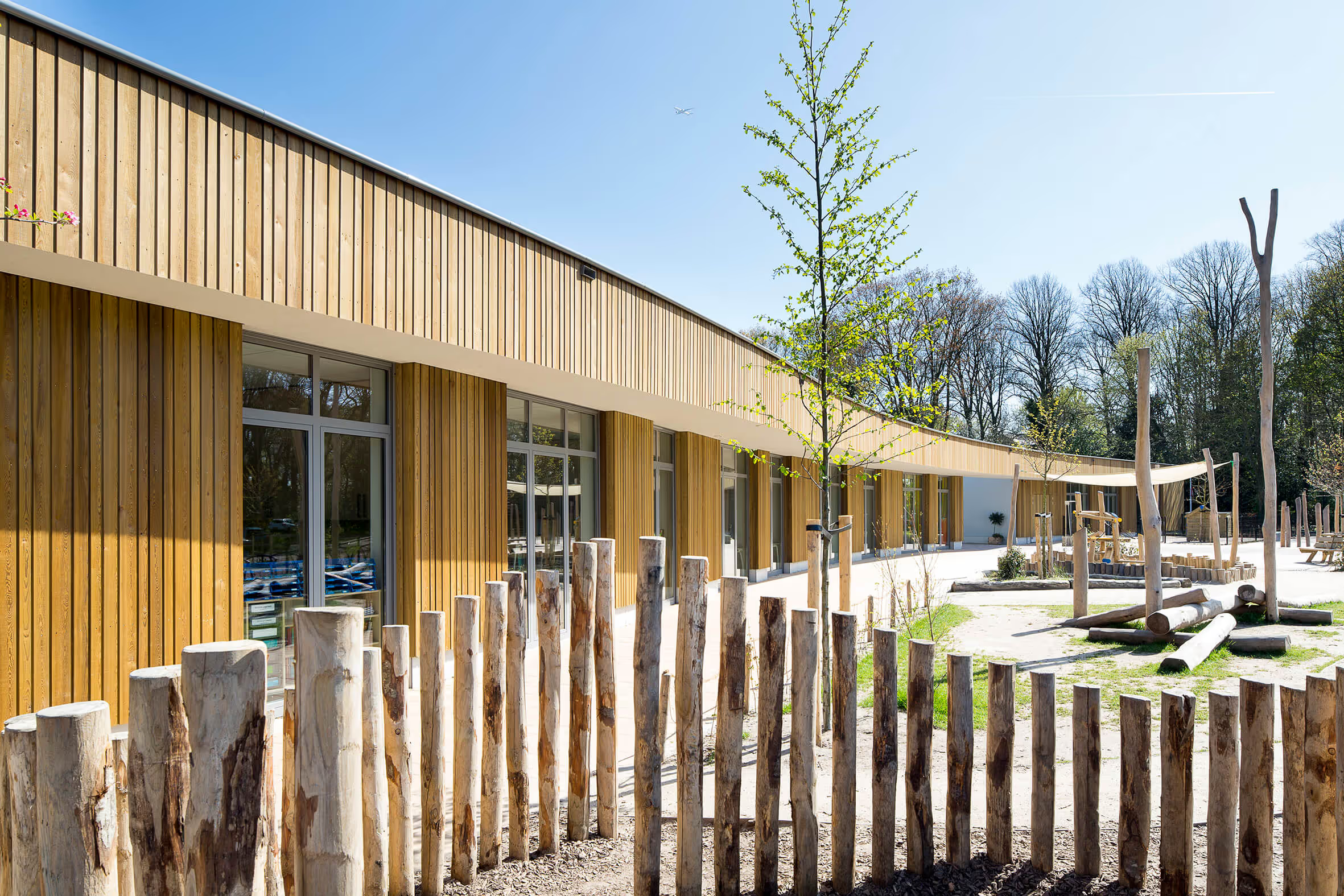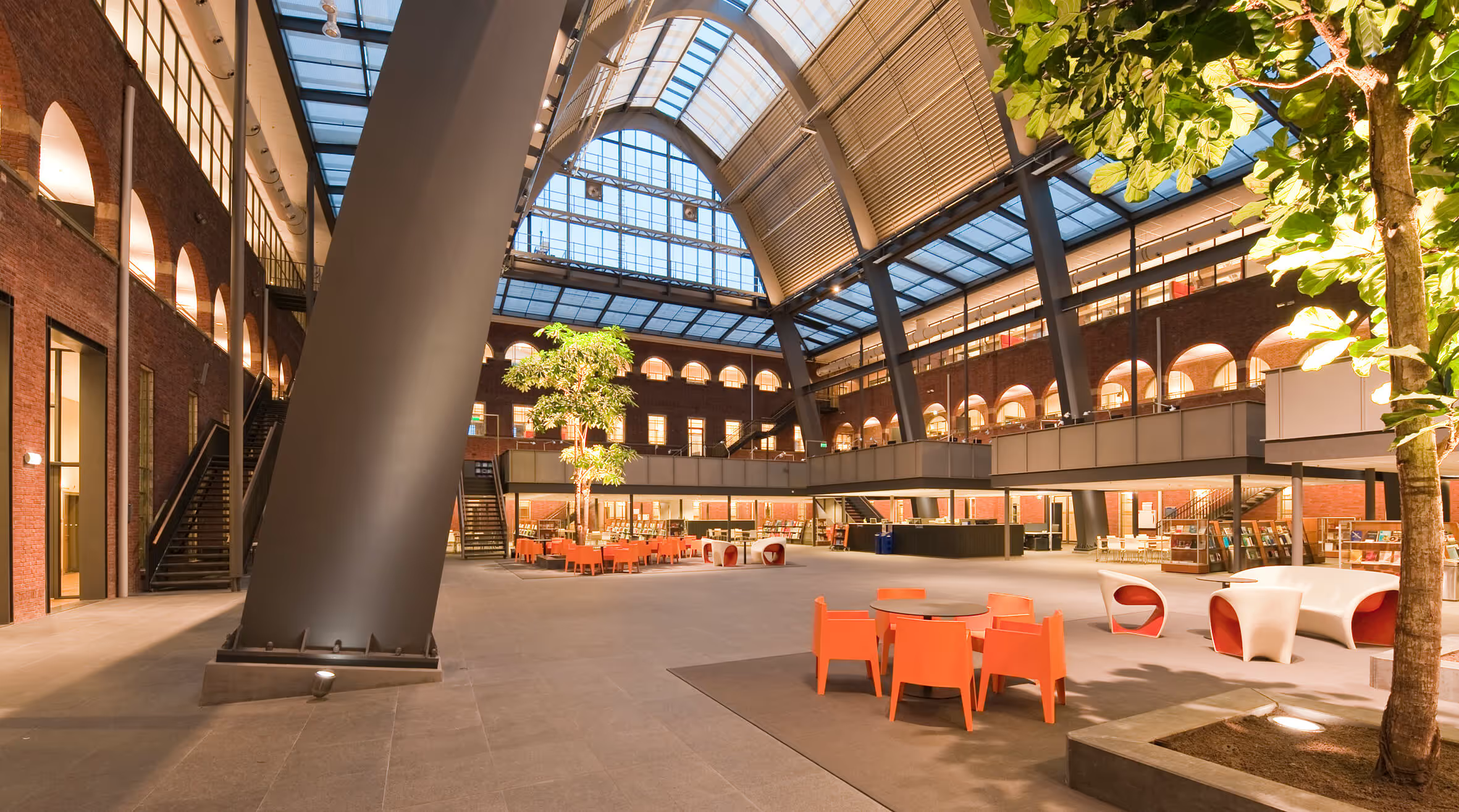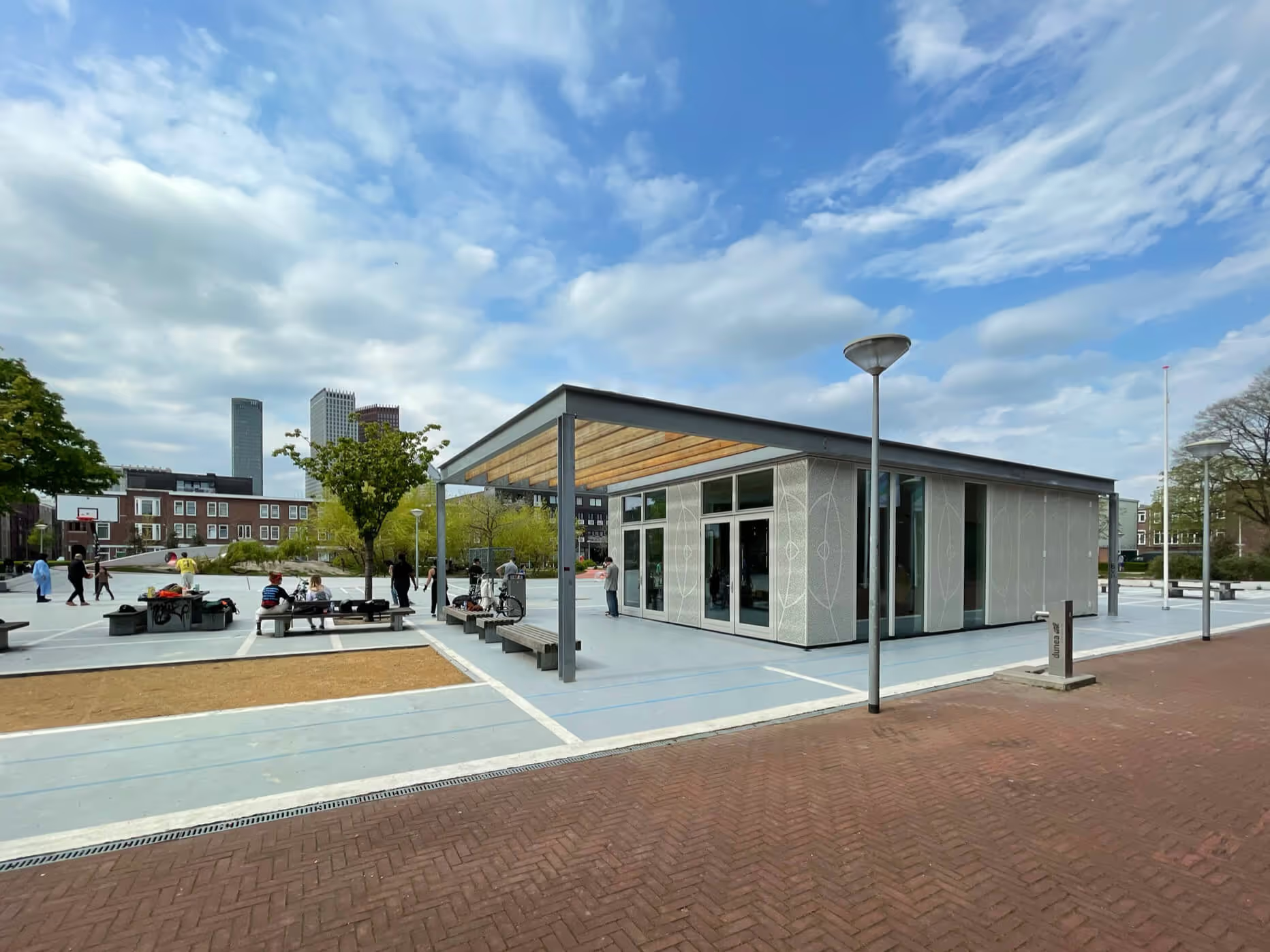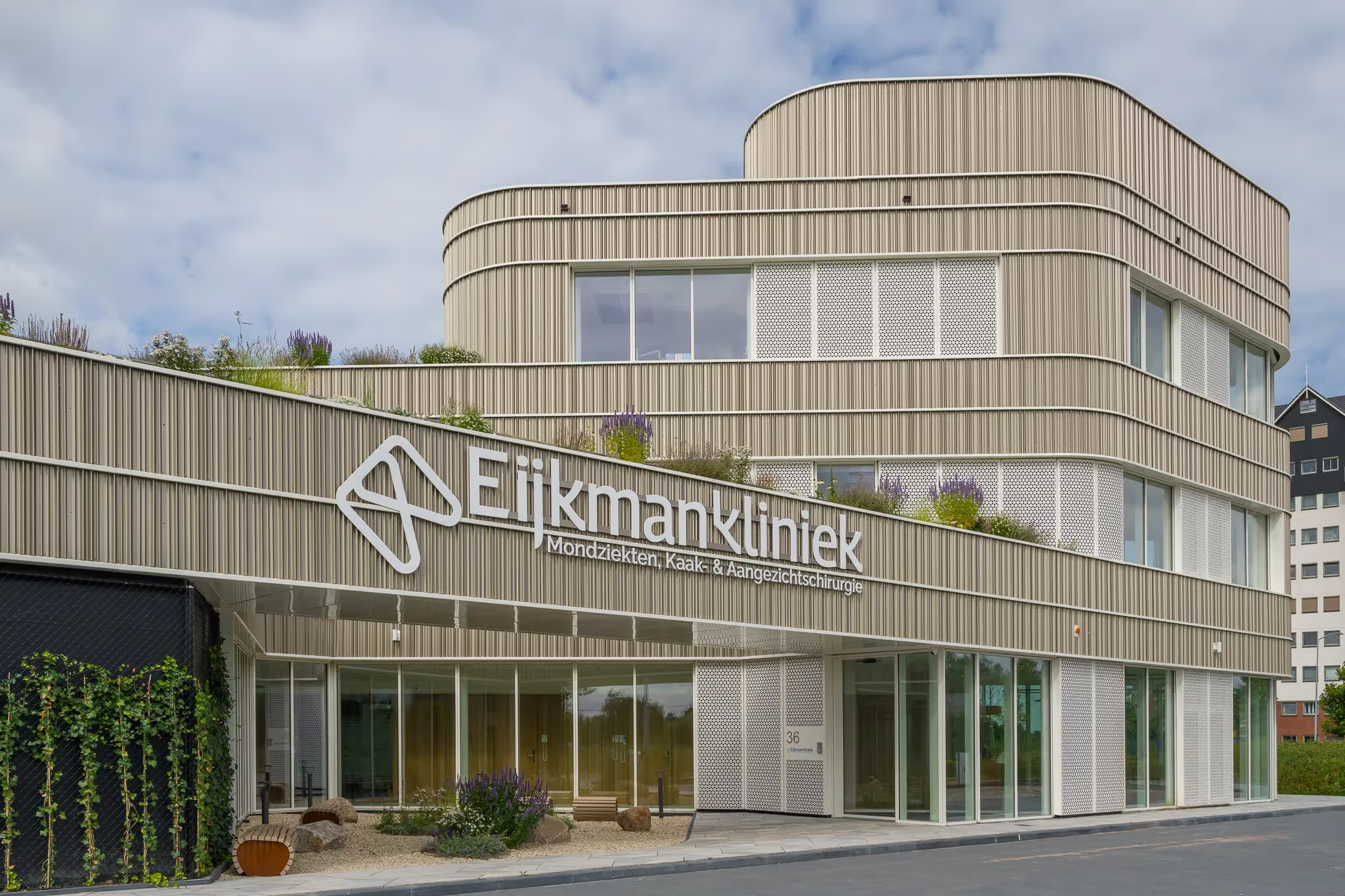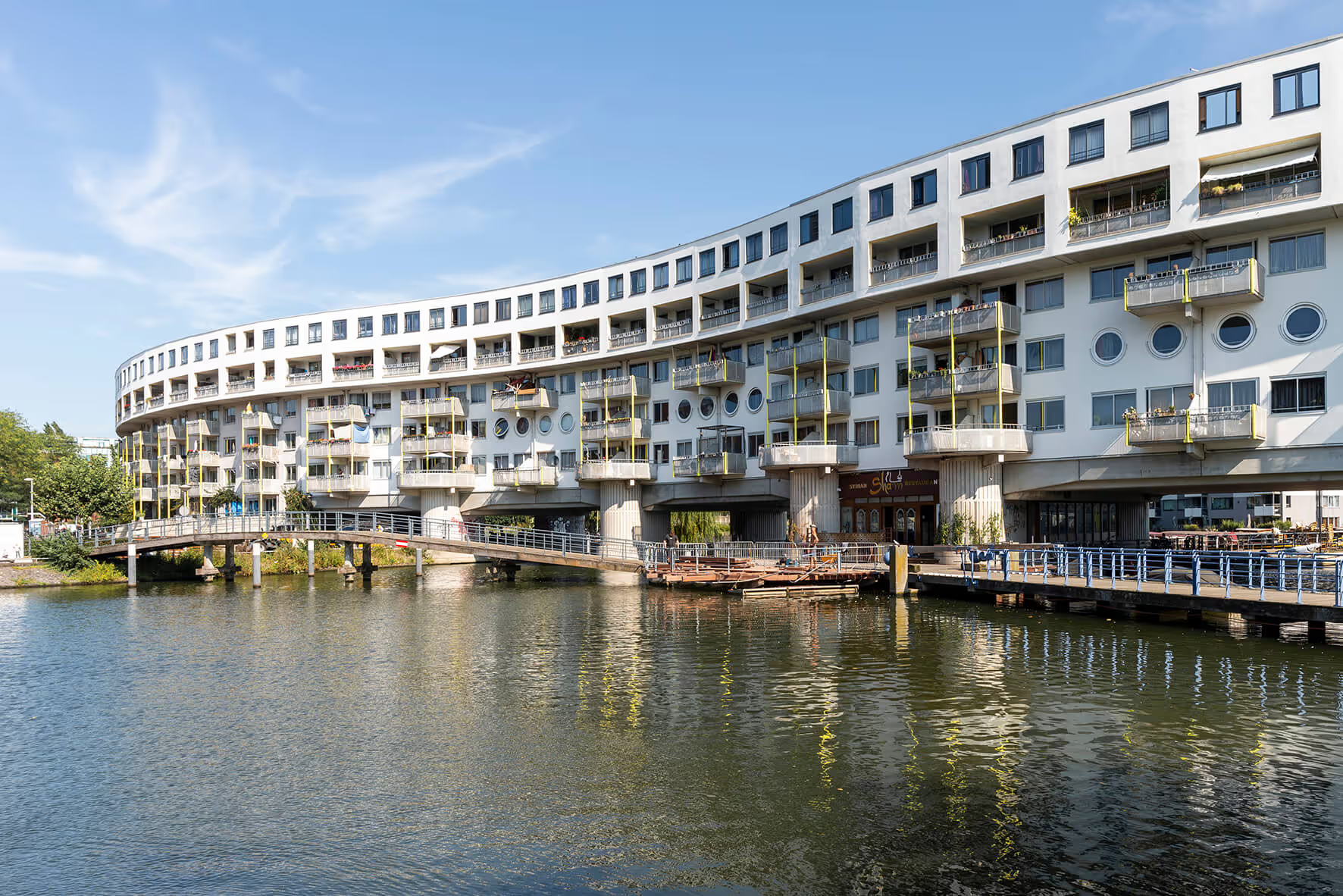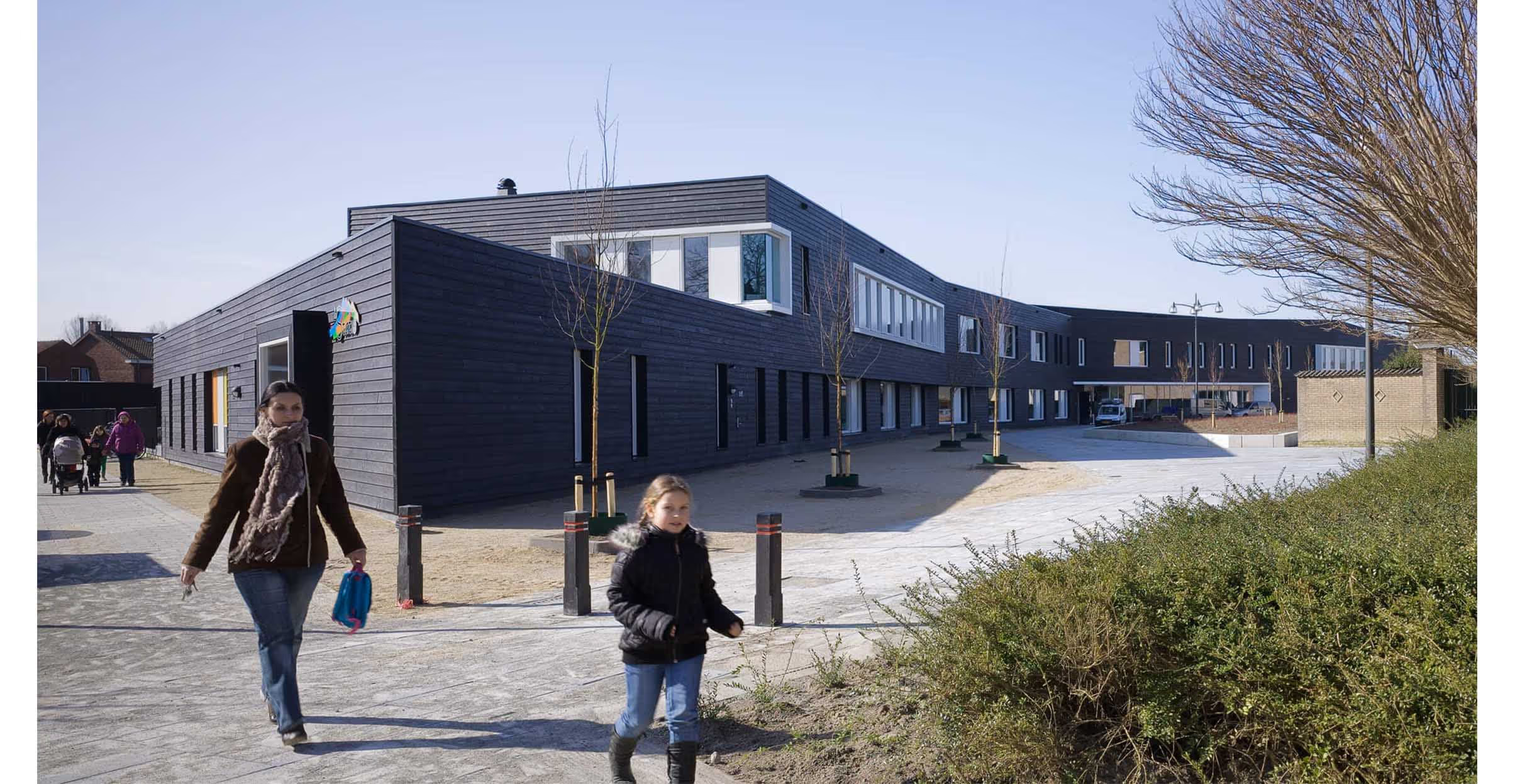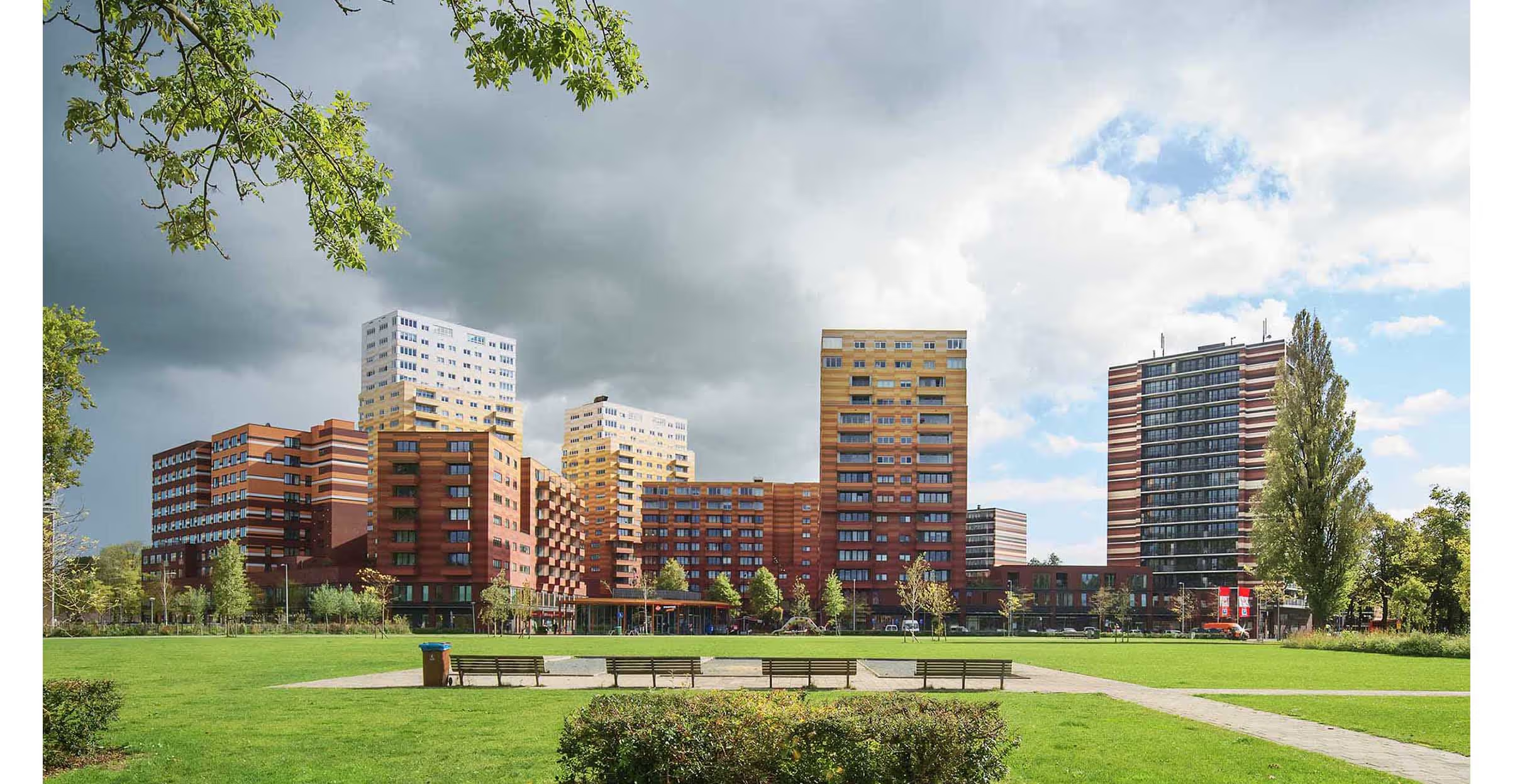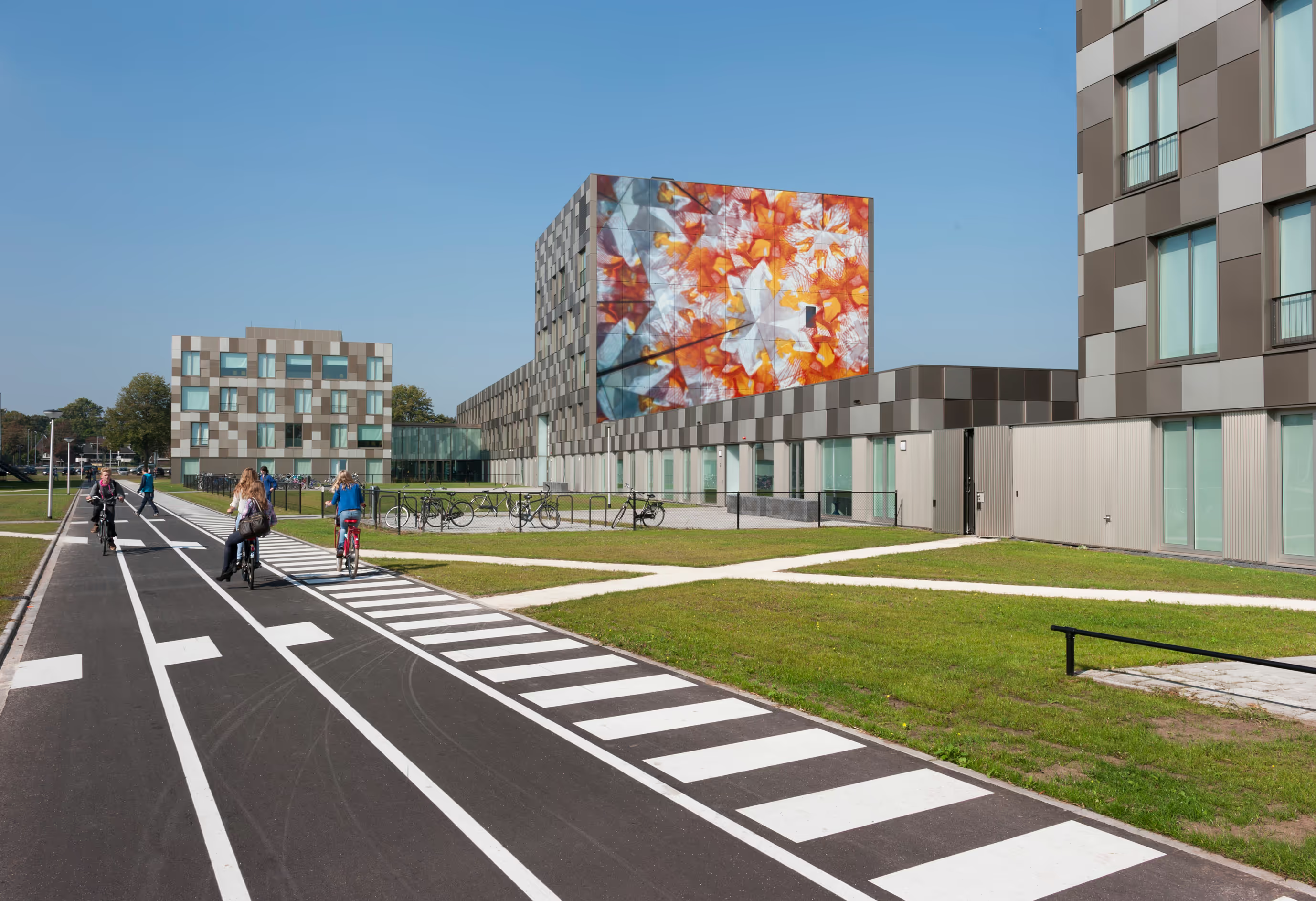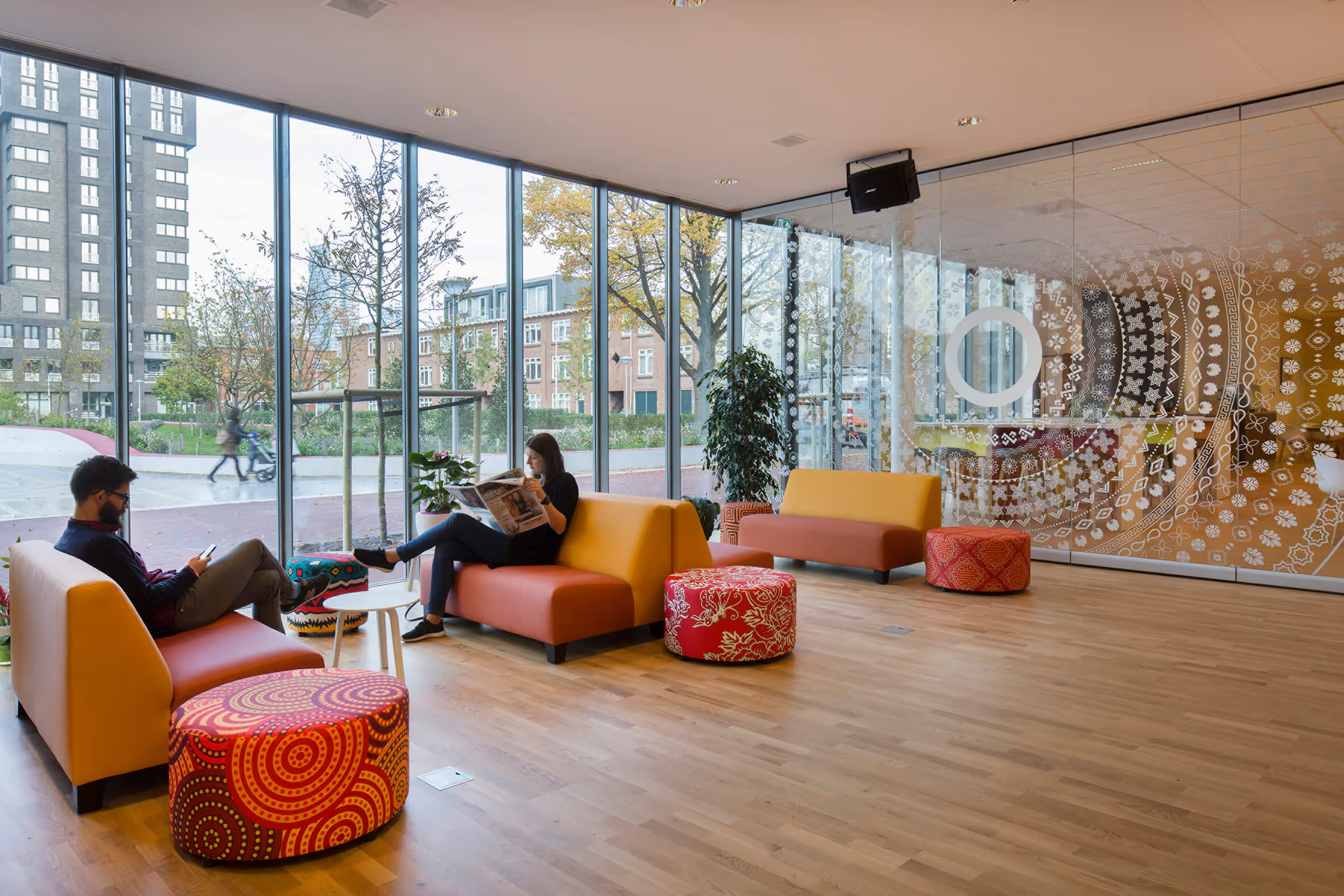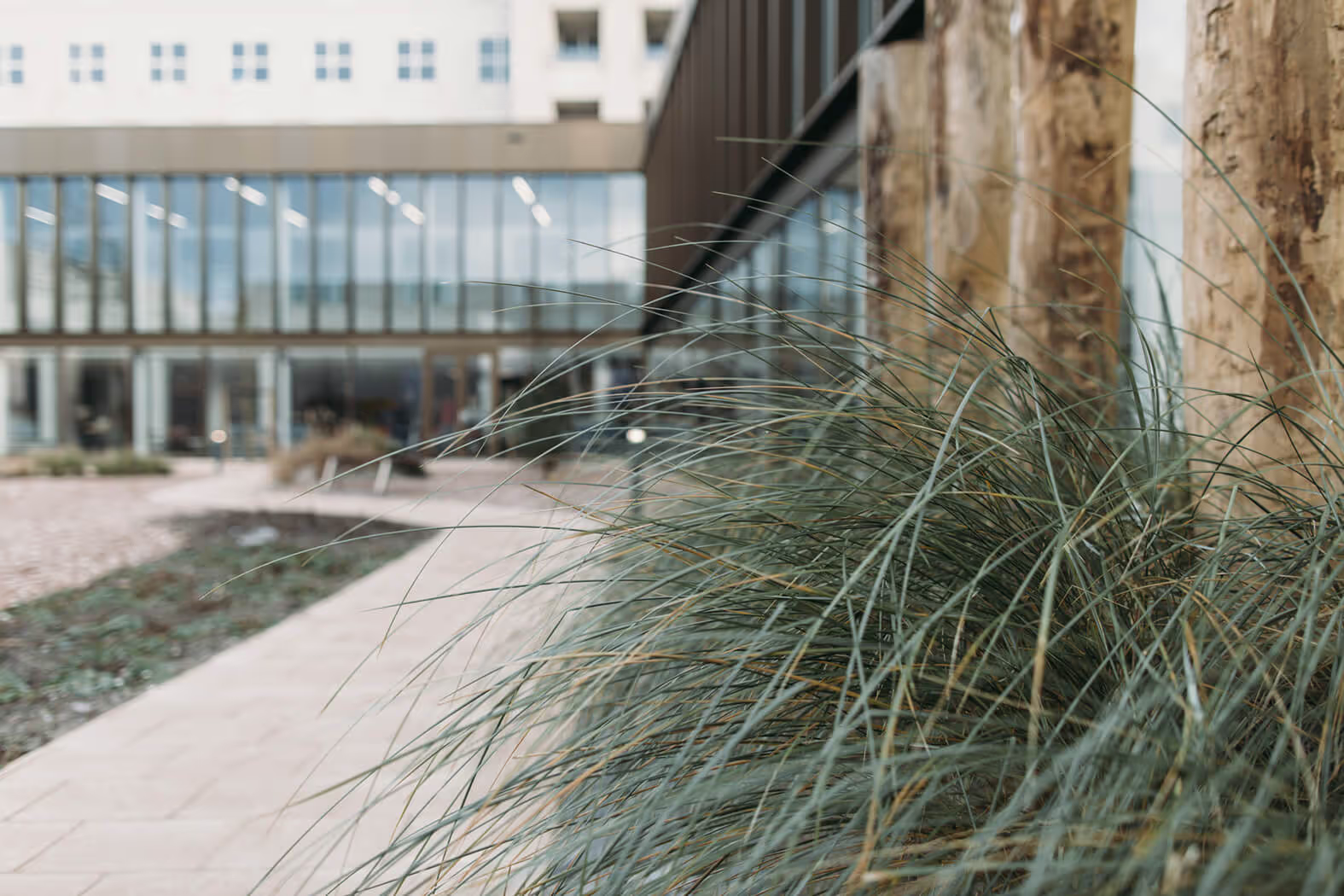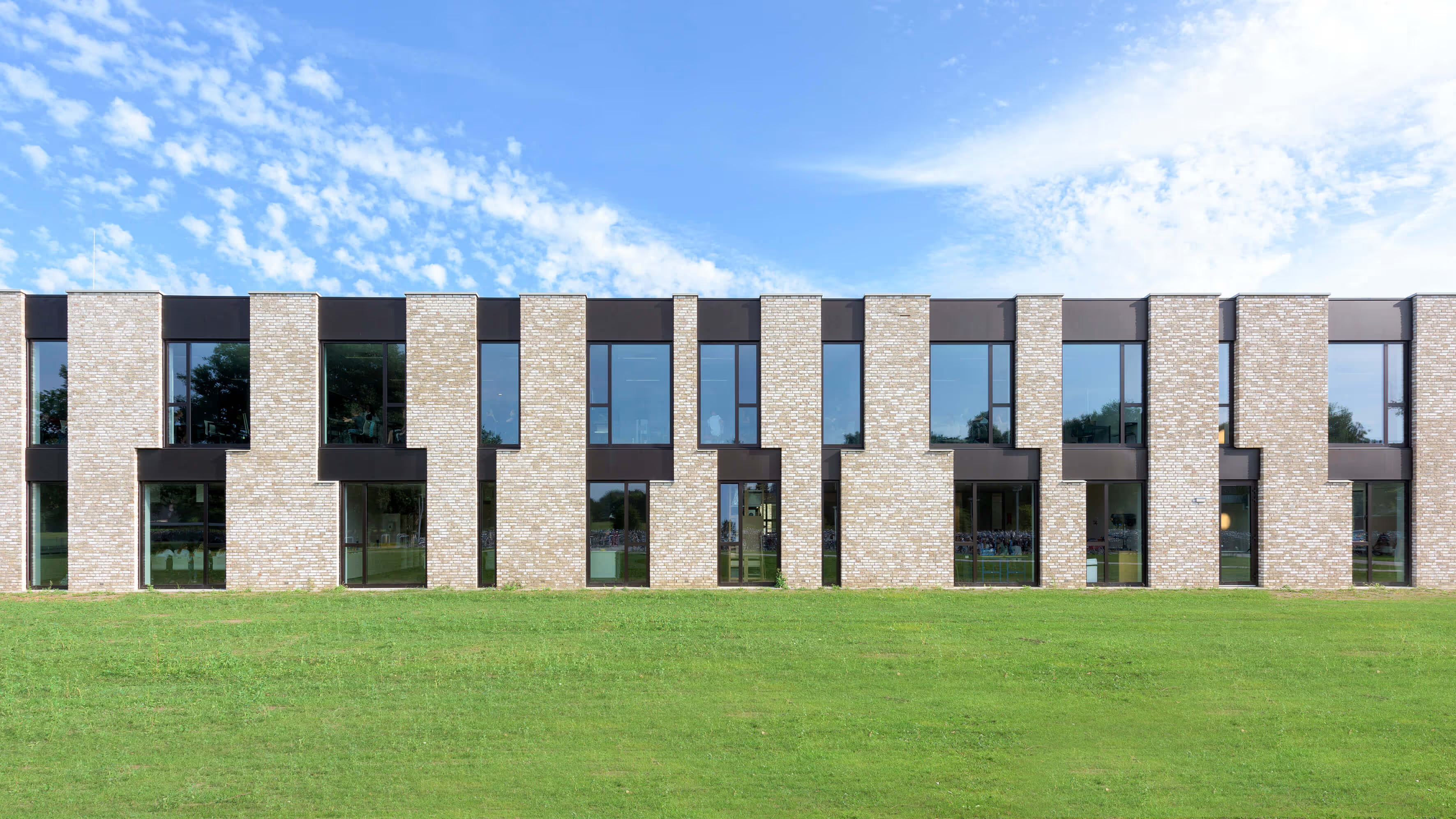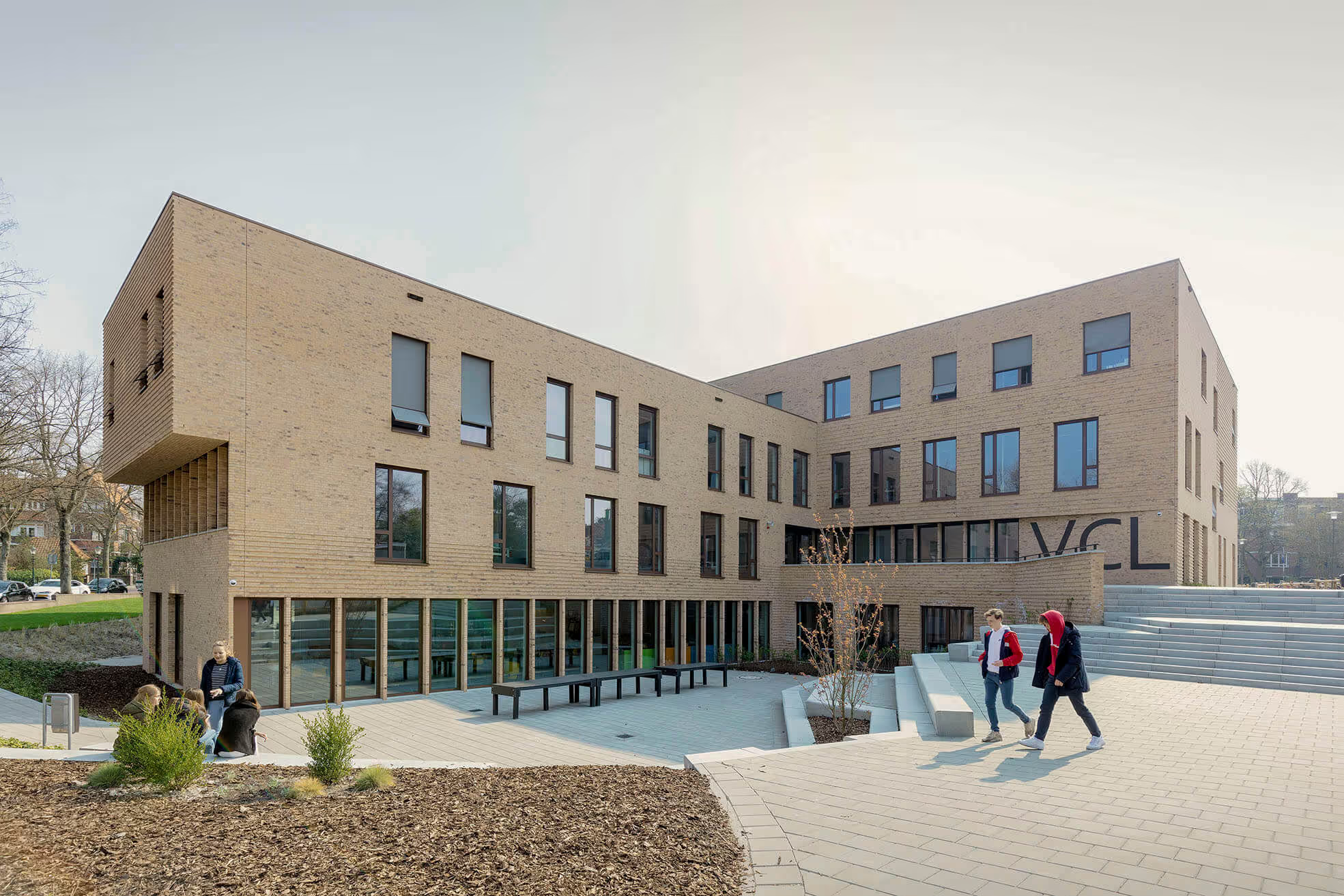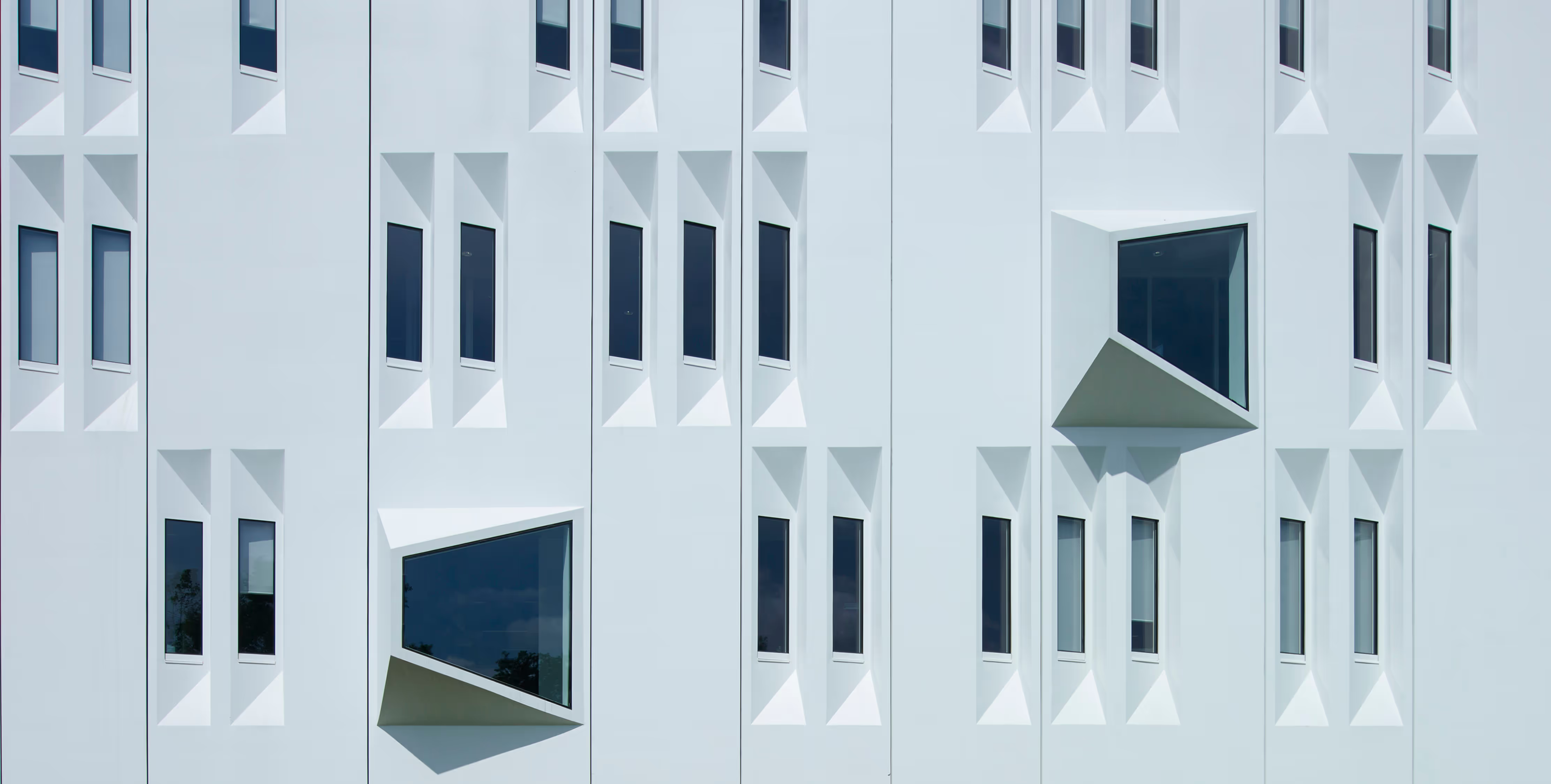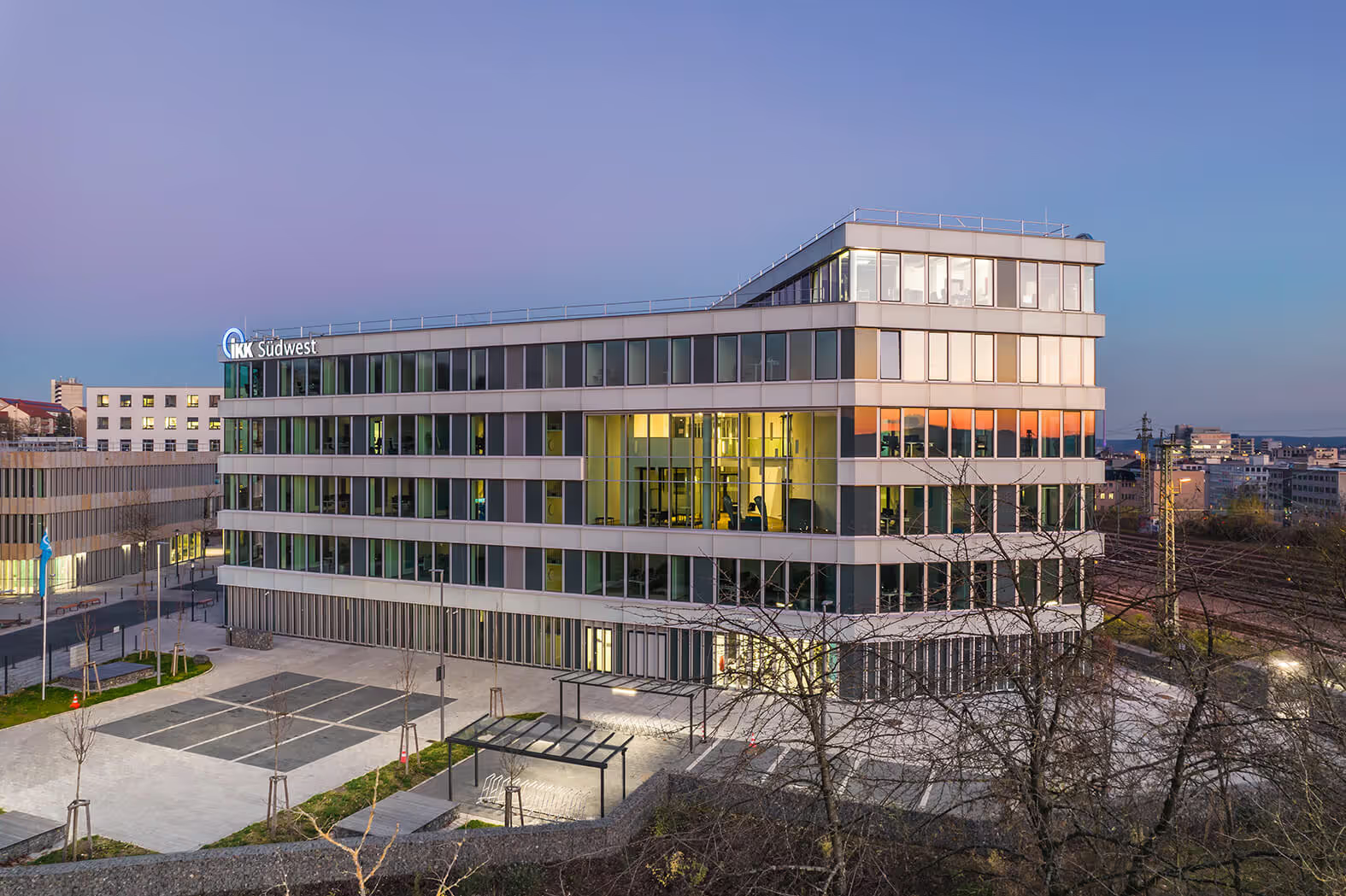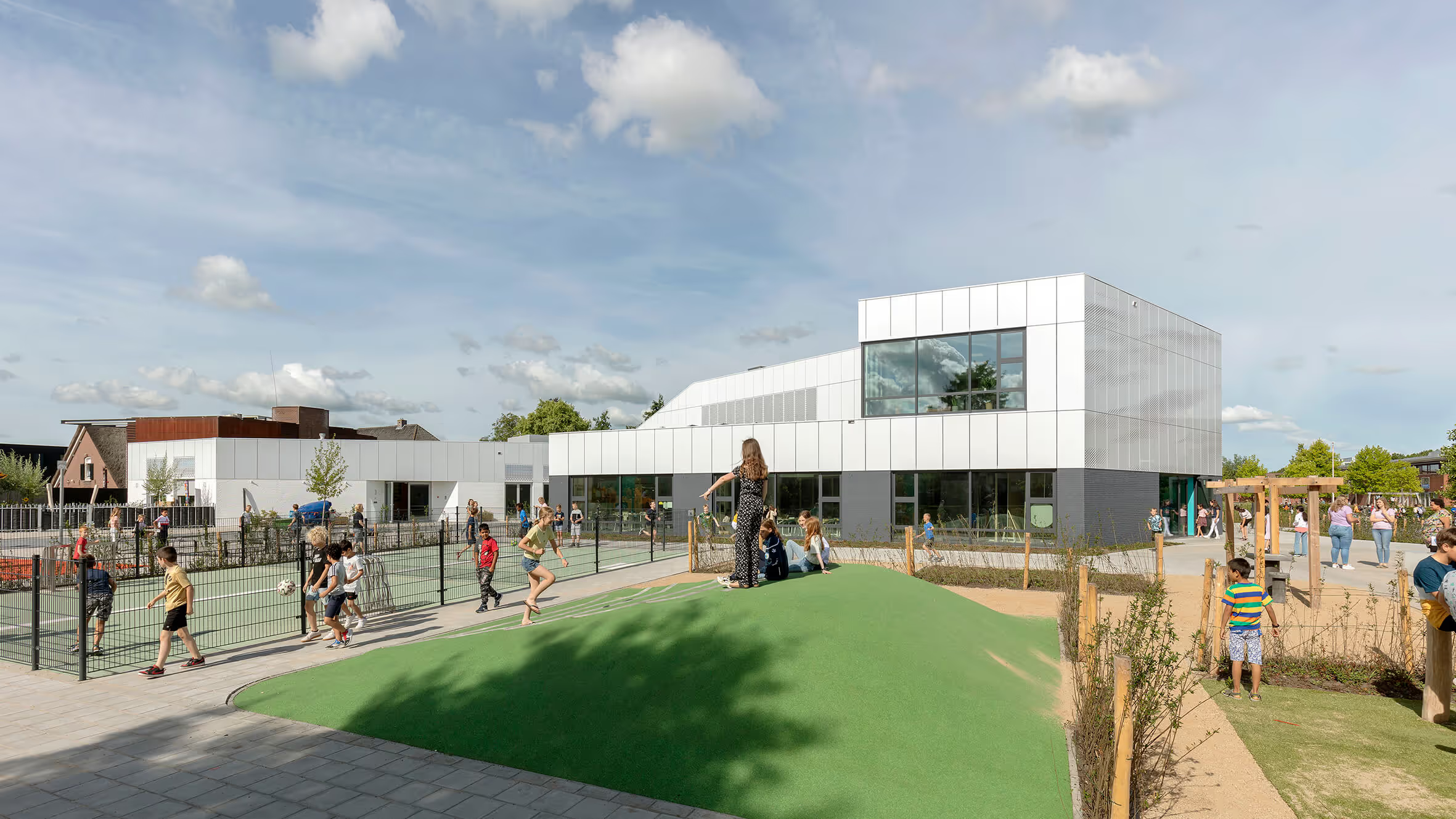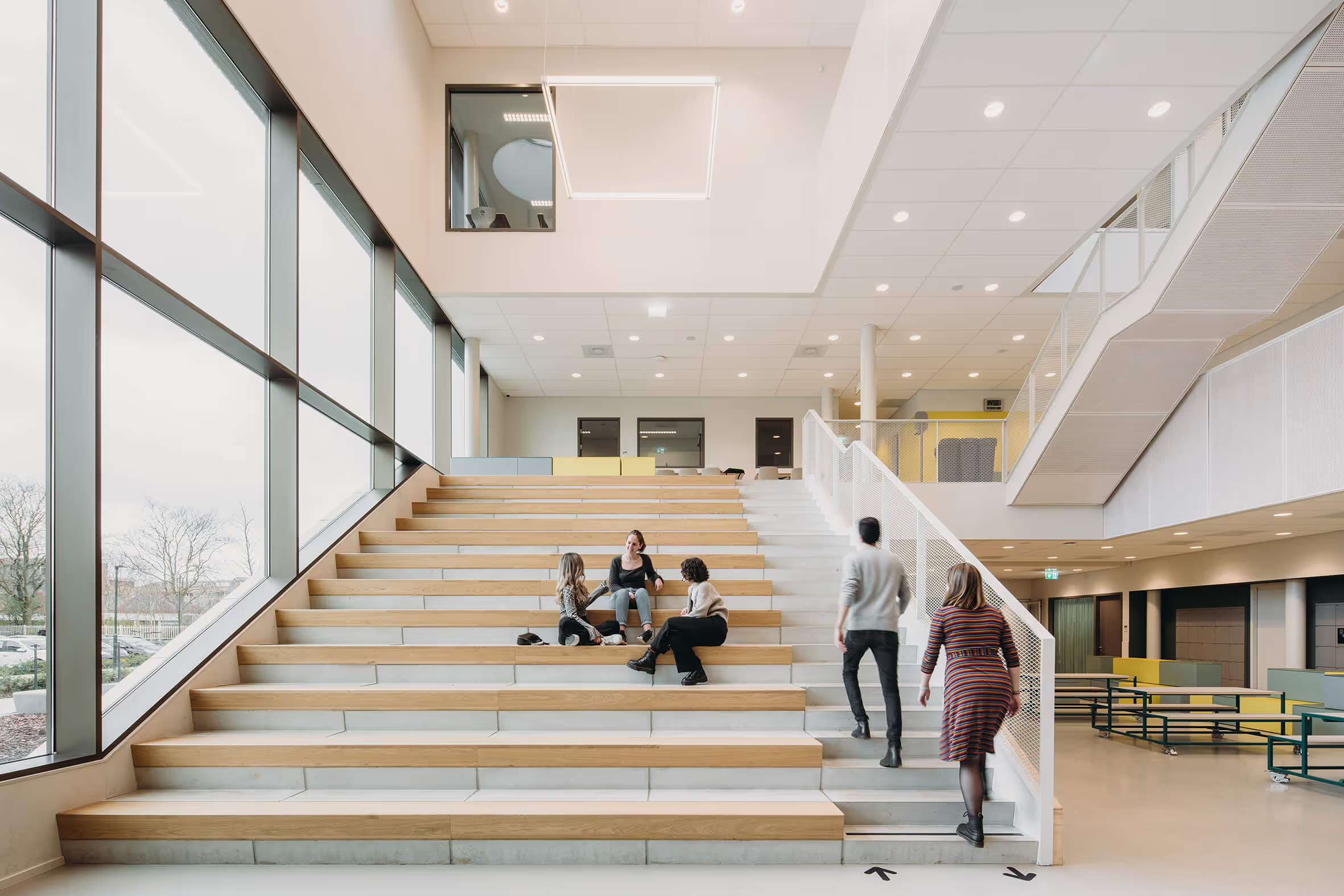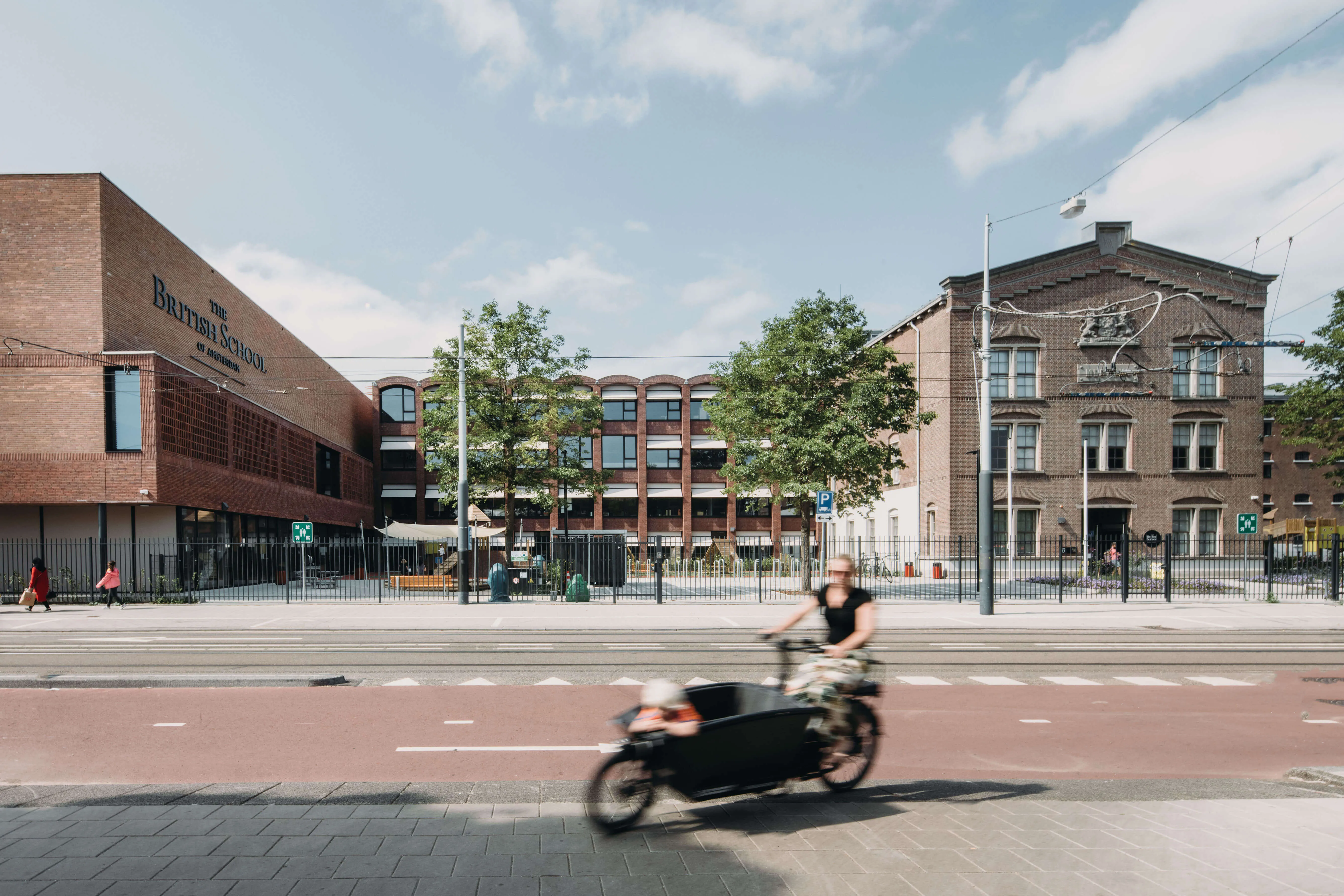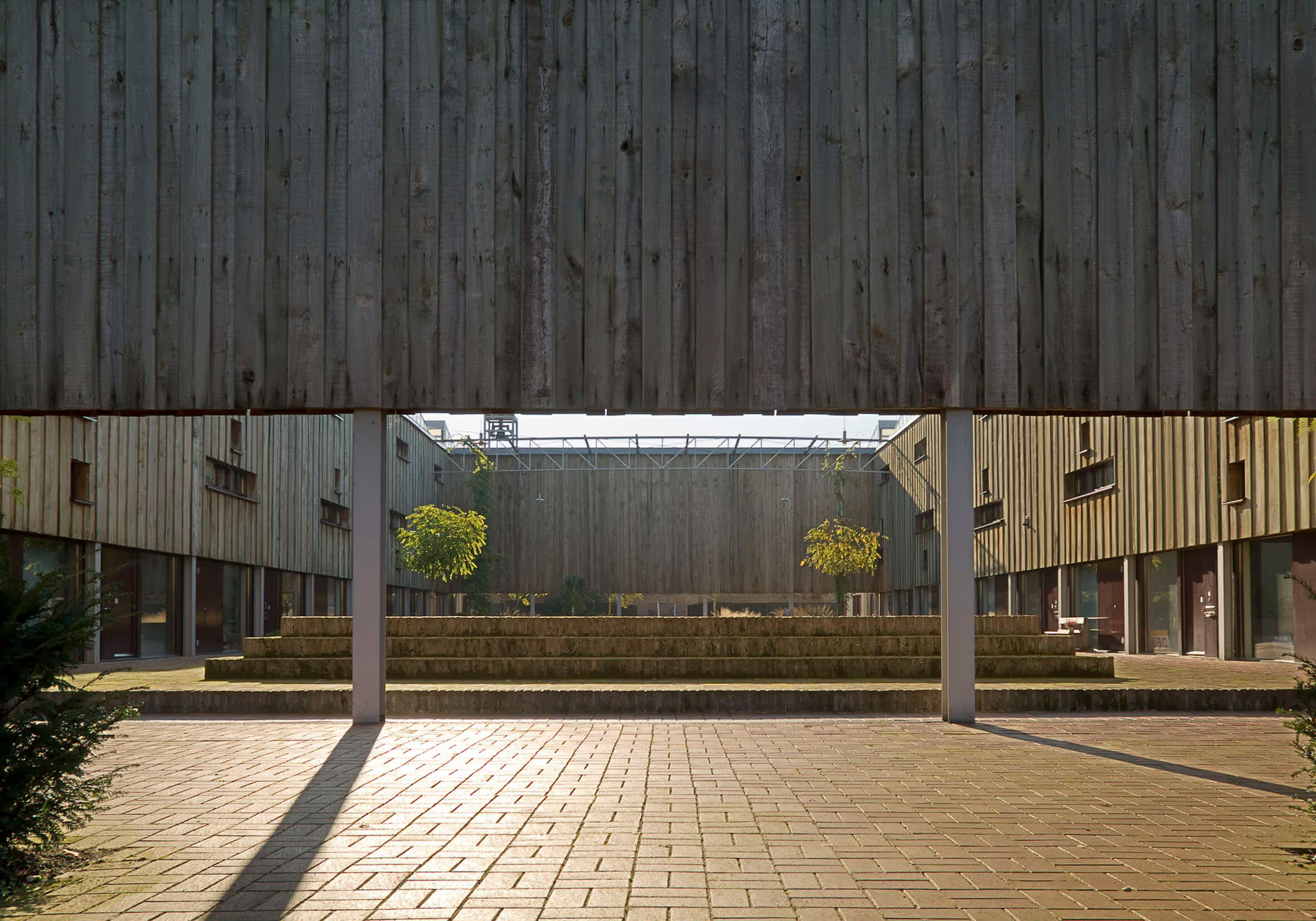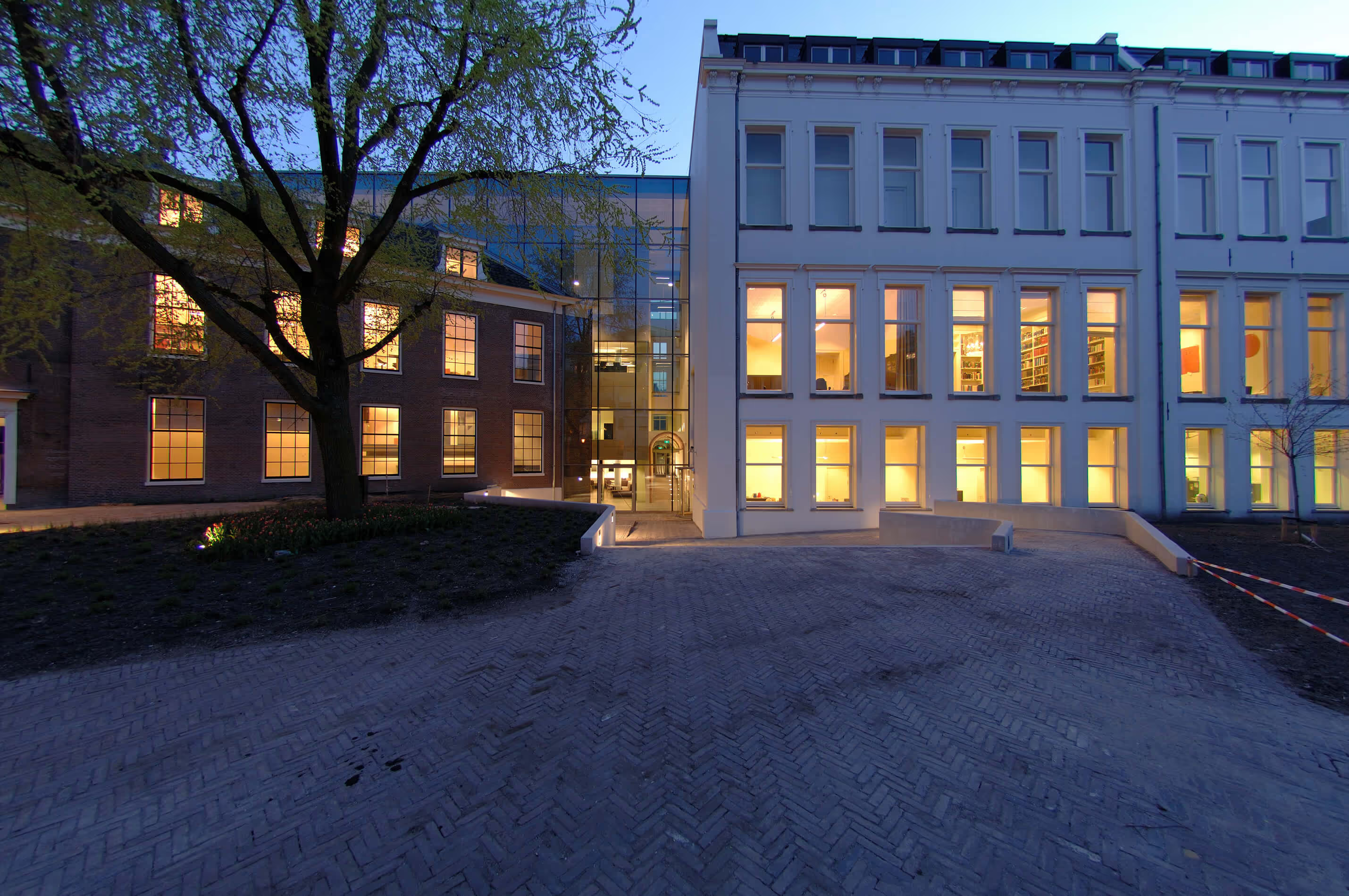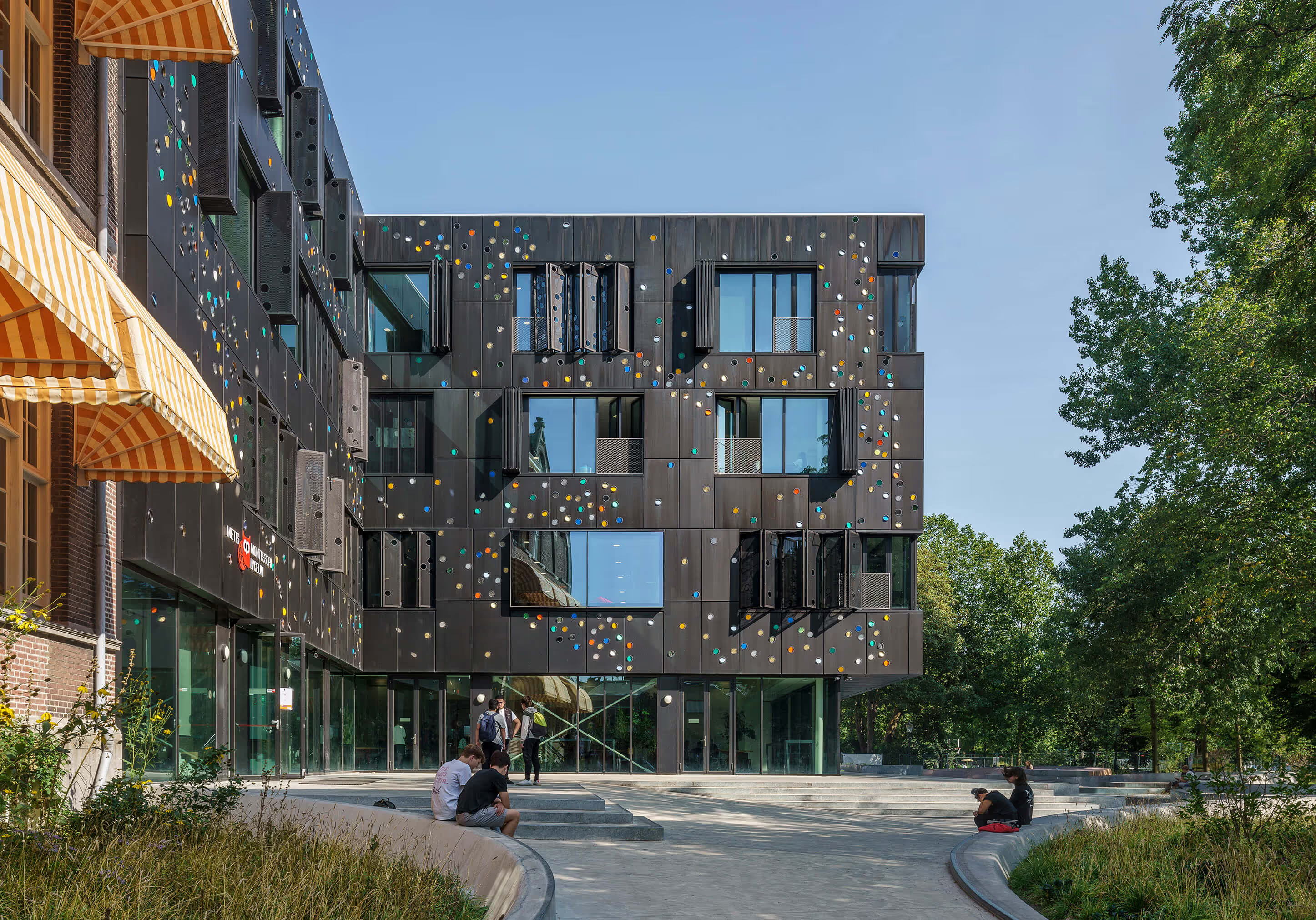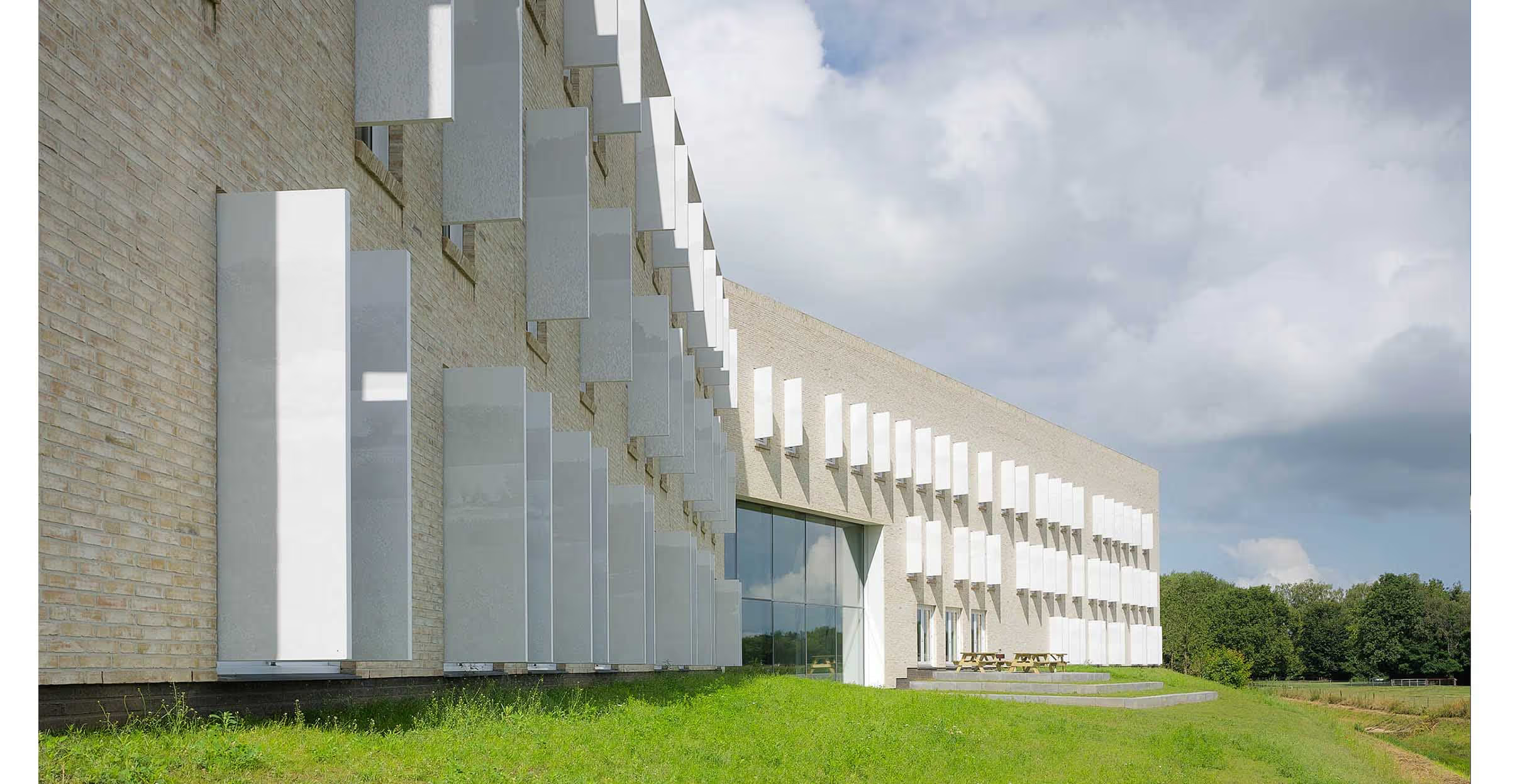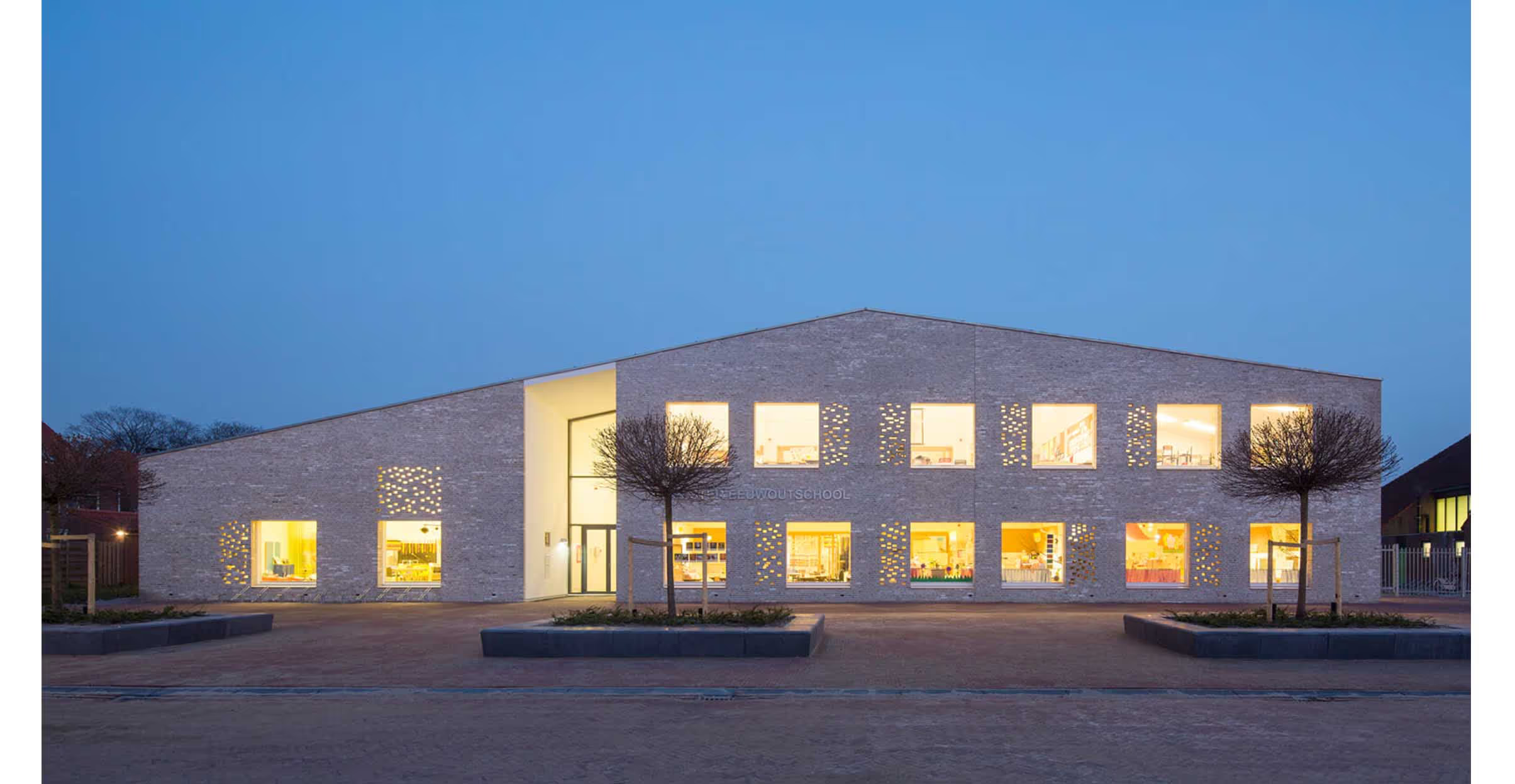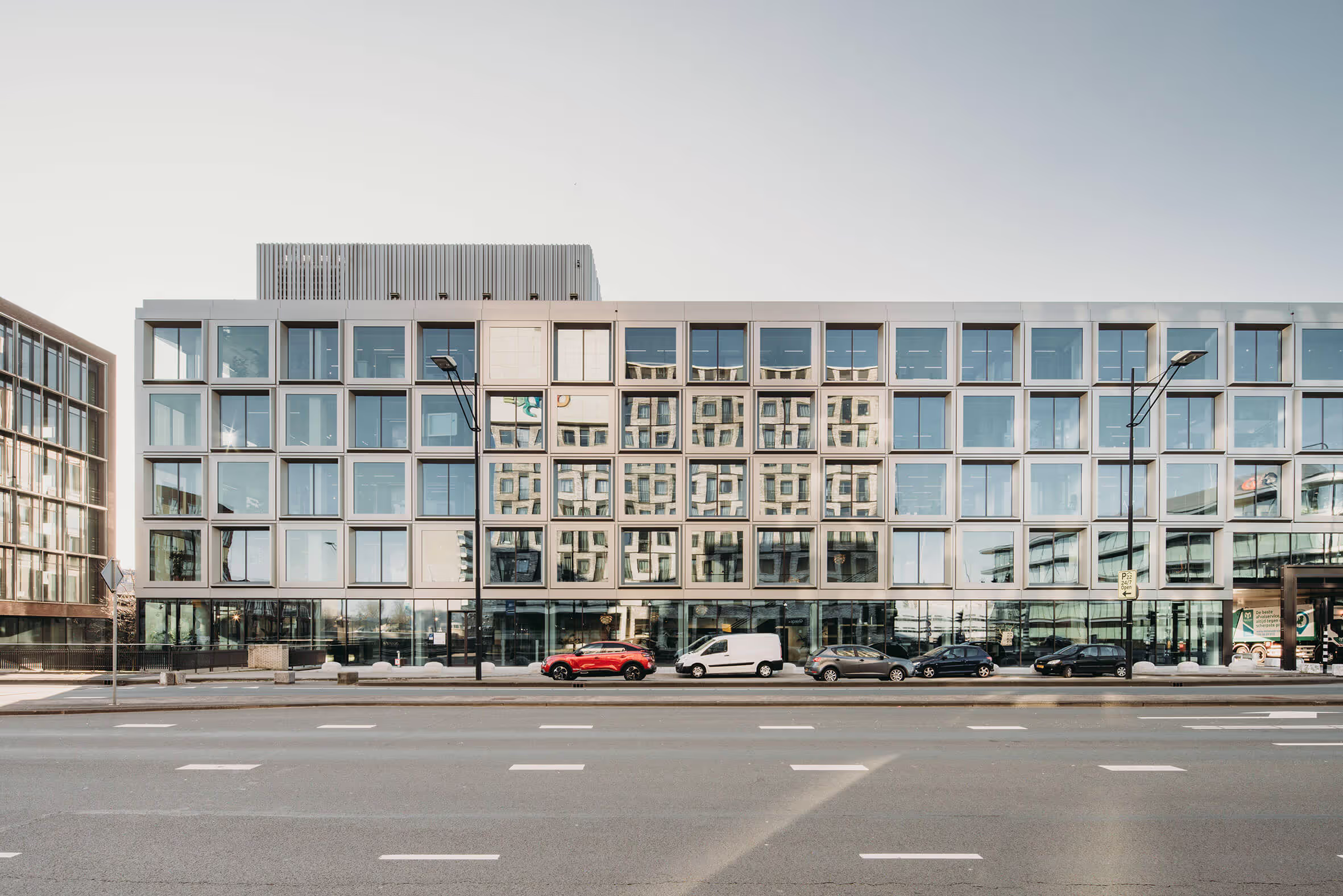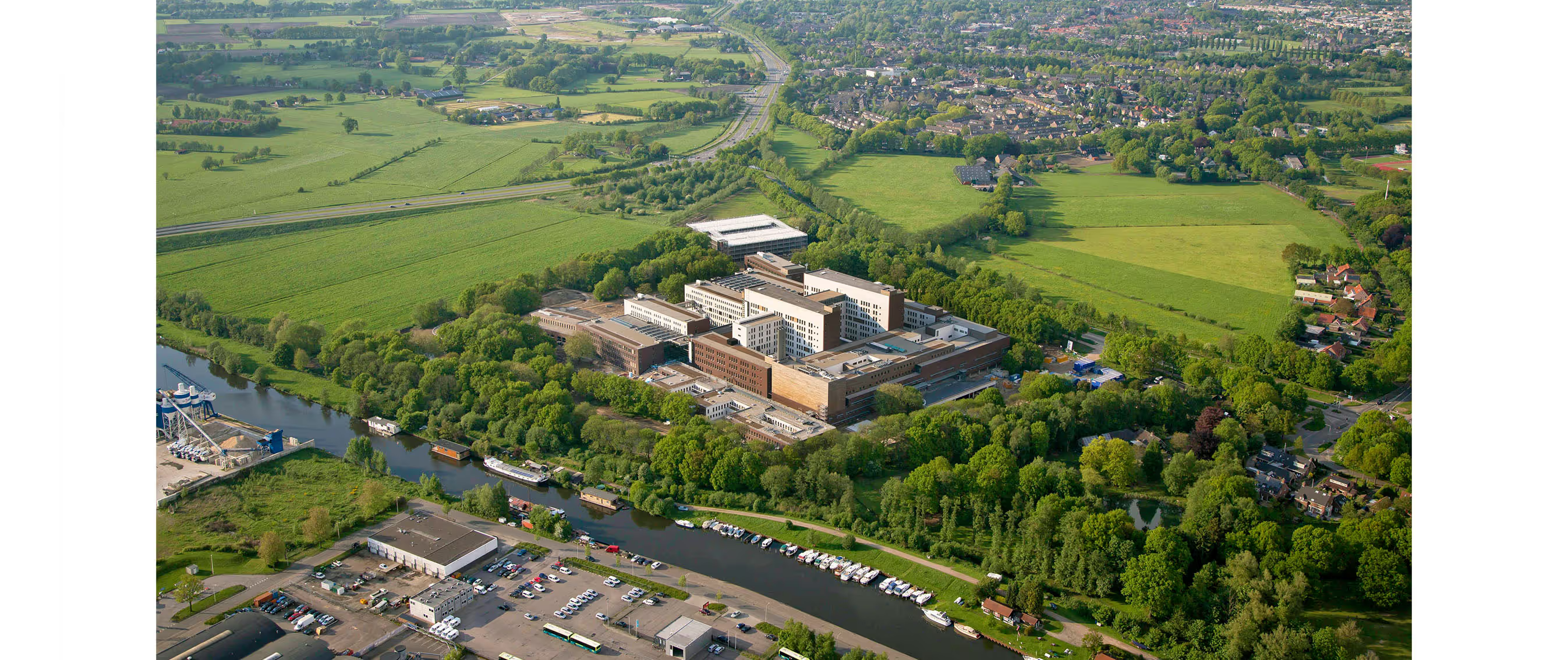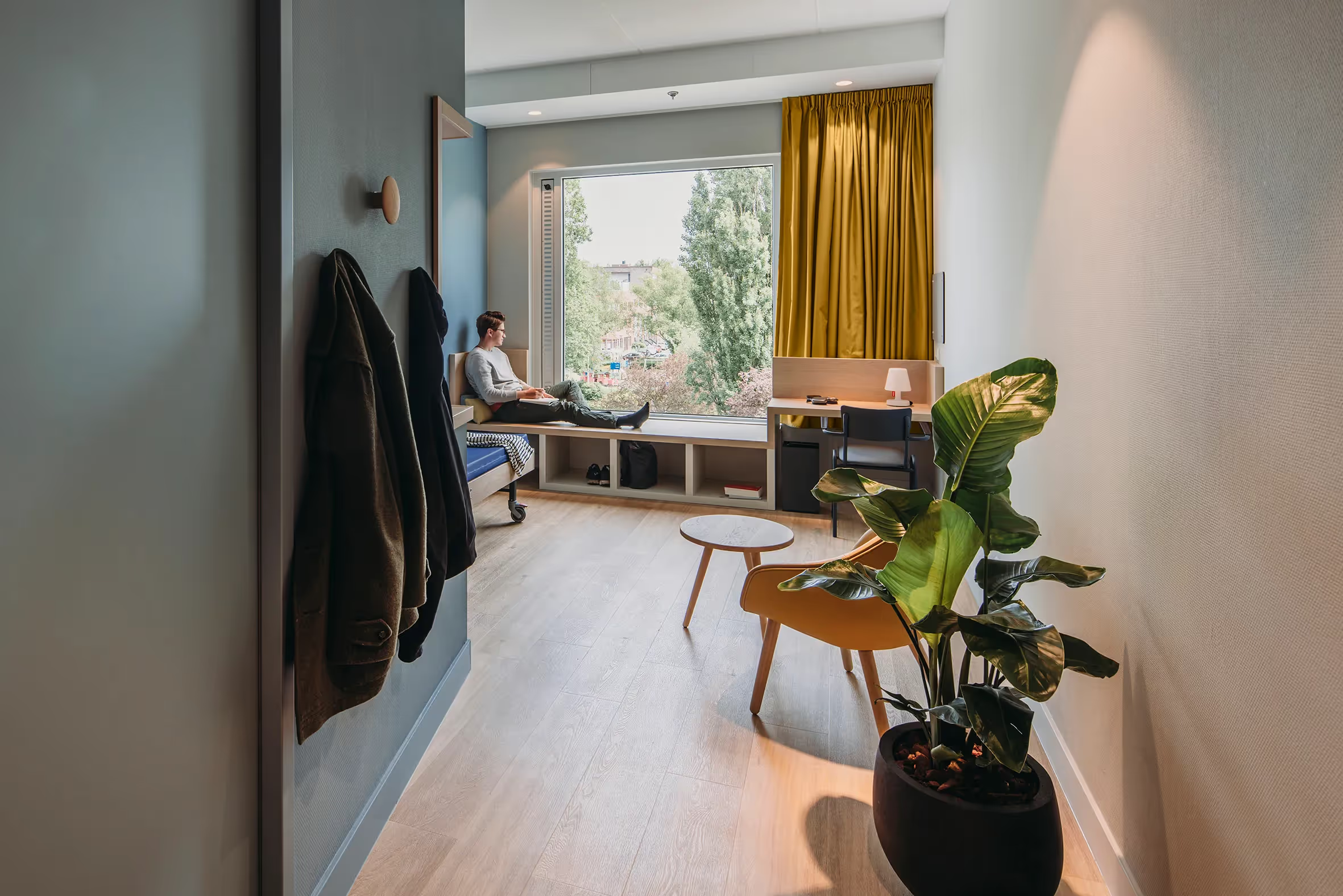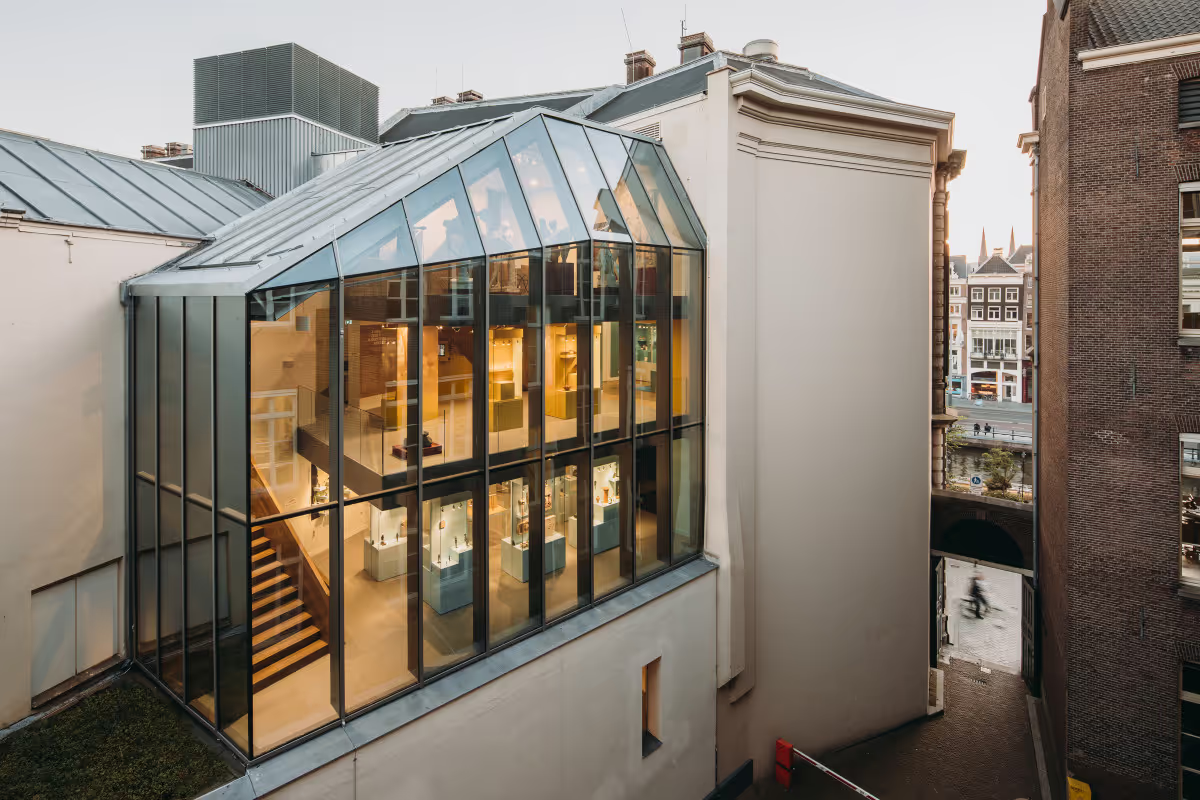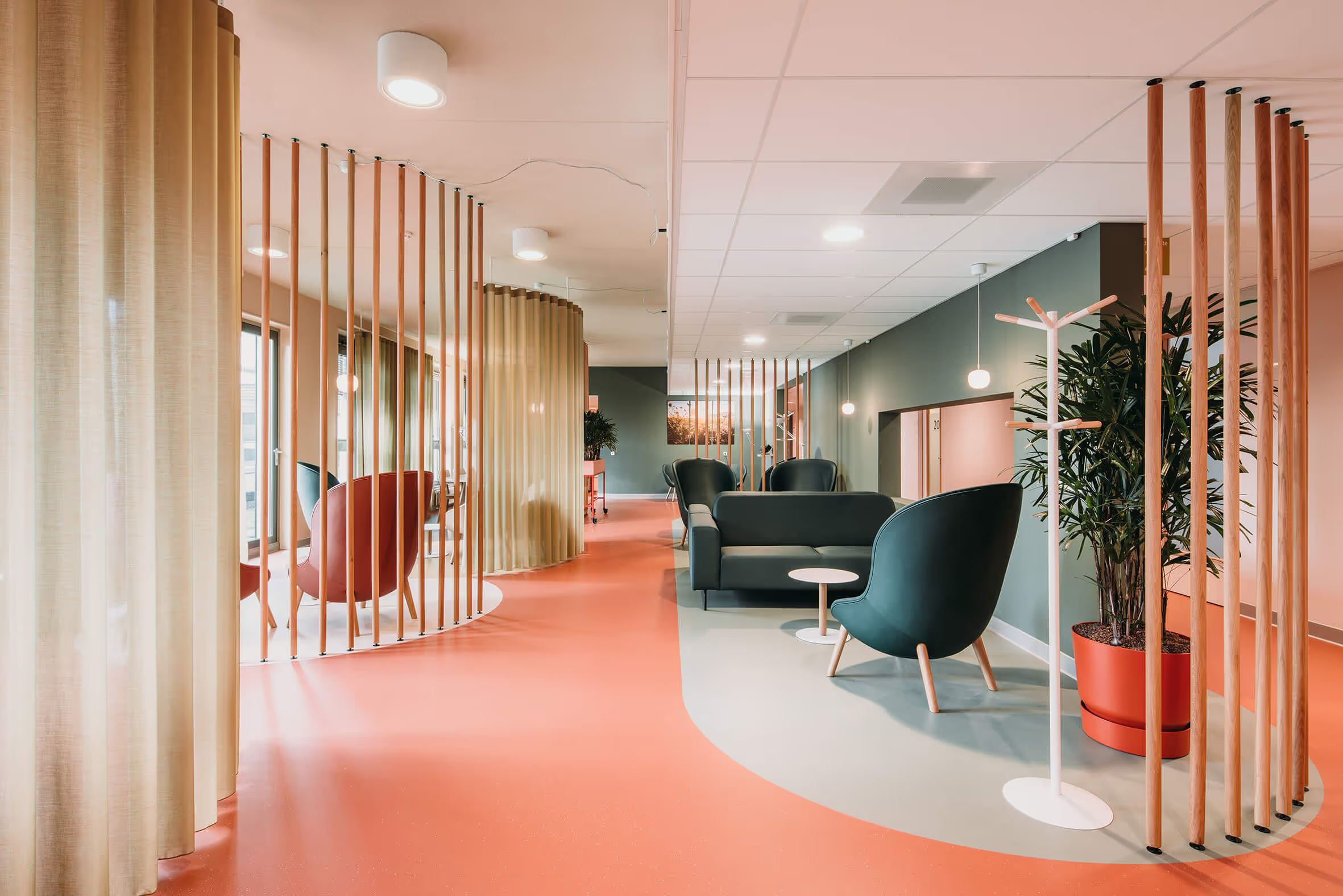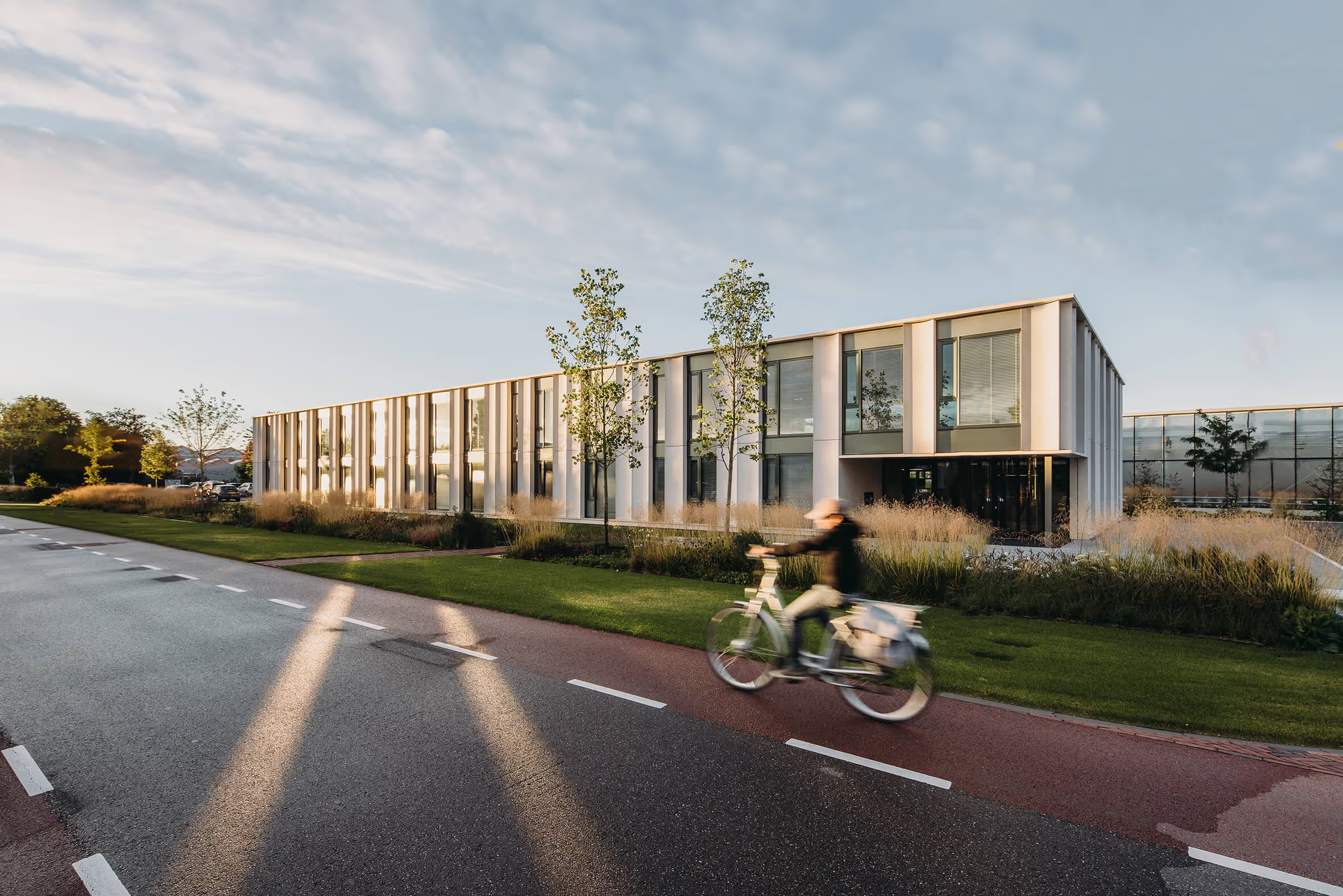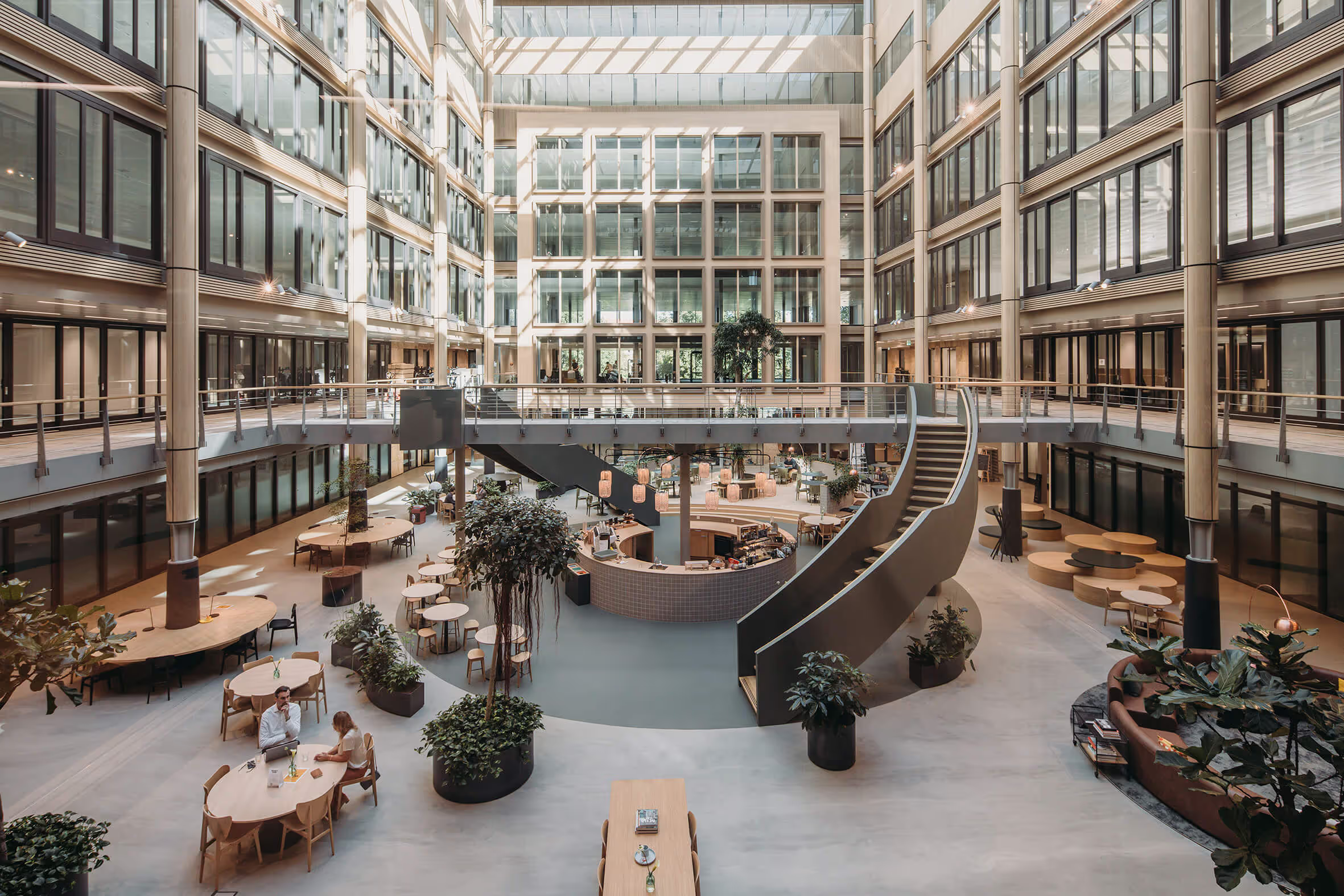De Klinker House of Culture
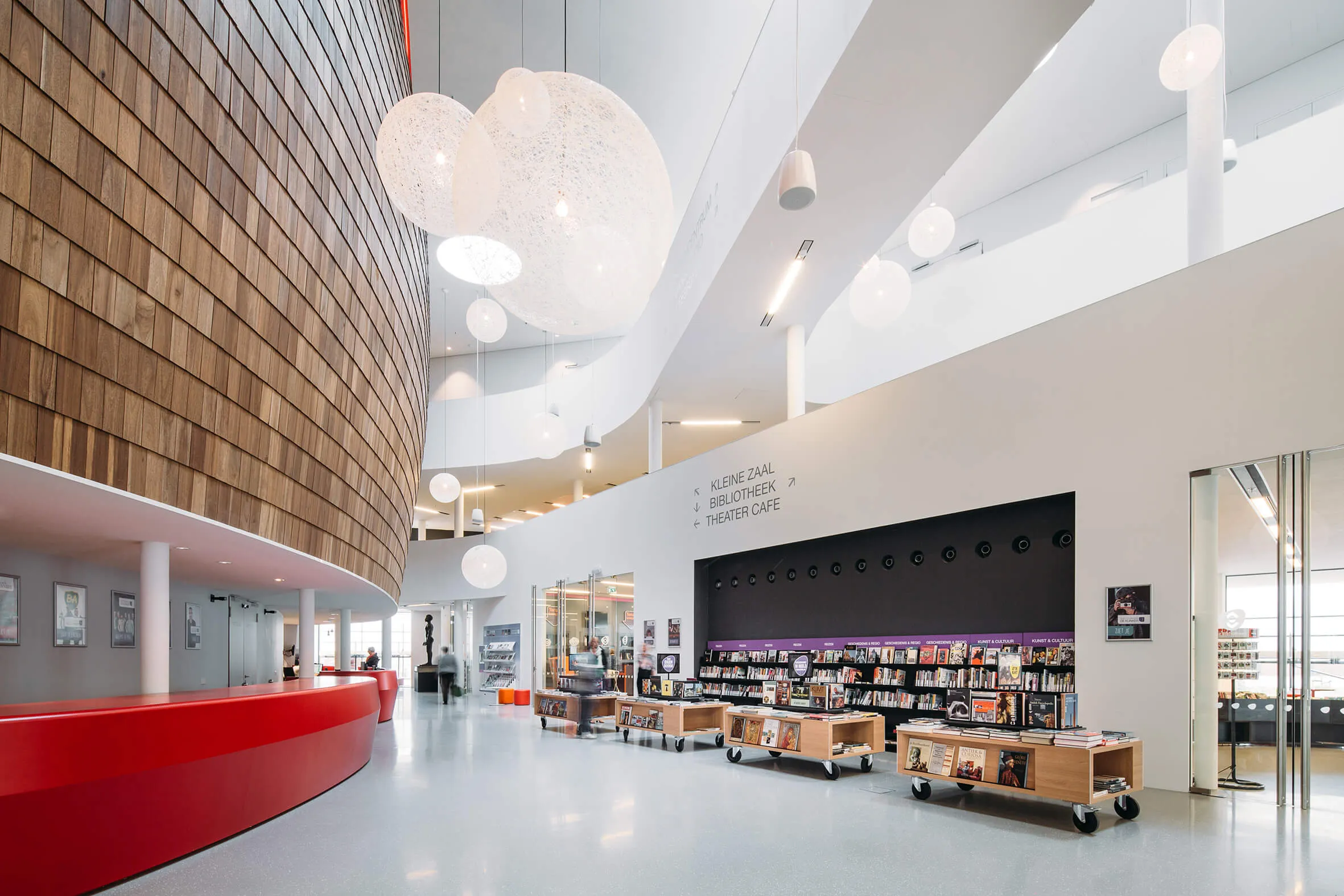
De Klinker House of Culture
De Klinker House of Culture

Theatre, cinema, library and arts center in one

A cultural icon for Winschoten
The design of the Culture House fits in Winschoten: the rounded, all-sided building with its sculptural brick façade provides a connection between the small-scale buildings of the historic city center and the wider layout of the post-war expansion districts. The characteristic shape of the building ensures that the available space is fully used, but also reinforces the prominence of De Klinker: the slightly curved facades play with the laws of perspective, visually shortening distances and making the building more visible.
An expressive brick façade
The buildings in the city center are characterized by two-story brick houses. We let this fine scale come back to the Culture House through the horizontal floor-to-ceiling brick bands, which sometimes come together and then recede. The sections, roundings and overhangs remind us of Groningen Expressionism. In addition, the façade is characterized by the rich detailing of the brickwork; several bricks have been specially developed for the Culture House in traditional orange Groningen clay. The technical zones in the plinth also reflect the relationship with the environment: the rough brown-orange façade panels made of perforated corten steel show the contours of the Groningen landscape.

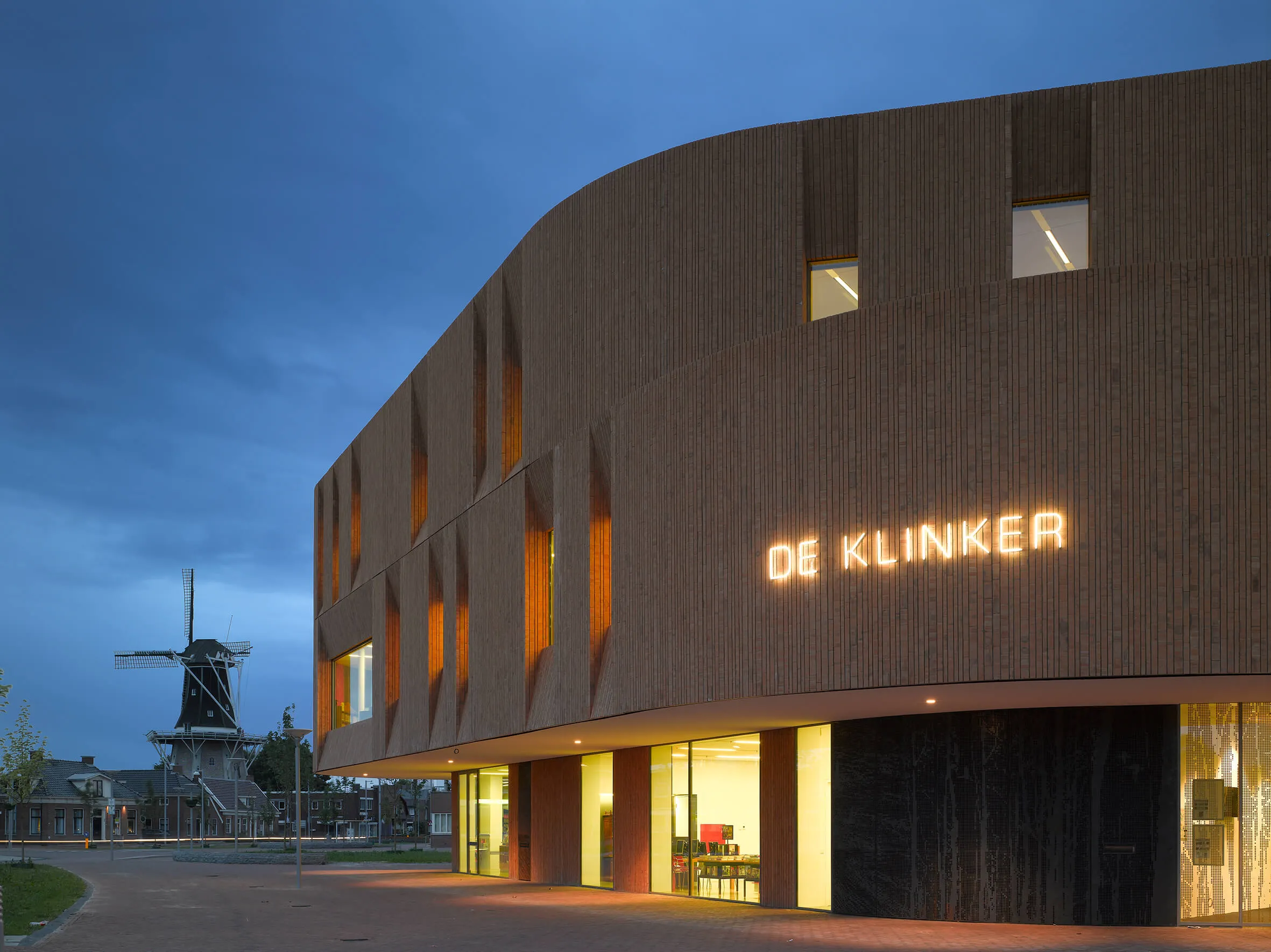

The public heart of the building: the foyer
The foyer is the heart of the building. First of all, it is the place where visitors meet and discuss the performance, but also where all functions in the building are accessed. Upon entering the foyer, you immediately notice the spherical Theatre Hall, covered with wooden shingles made of sawn old bollards. The hall stands as a separate element in the room, something that is emphasized by the high voids with skylights. During the day, natural light penetrates the room through these skylights; daylight reflects off the scaly wooden wall and provides a warm glow.
A space like a chameleon — multifunctional and flexible
In the evening, the atmosphere in the foyer is determined by the intensity and color of the artificial lighting. We used RGB LEDs that can be programmed in many ways to create different “atmospheres” depending on the type of performance - from classical performances to pop concerts. In addition to the 'usual' role as a theater foyer, the space also connects all functions within De Klinker. The foyer responds like a chameleon: during the day, the library uses the space to display books and becomes a reading room that extends into the theater café; in the evening, the foyer is fully taken back by the theater audience.
A theatre close to the audience
Nowhere do people play as close to the audience as in De Klinker's Theatre Hall. By closing the orchestra pit, the stage can be enlarged towards the hall, which consists of a total of 650 seats spread over the ground floor and the balcony with lodges. The room has a classic yet dynamic atmosphere. The seats and the front canvas are dark red, creating the typical intimate theater feel, while the walls are dark grey and covered with acoustic panels. The acoustic panels are partly covered with perforated plates, with patterns that refer to Groningen — the sea, reeds, wood, birds; via these panels, the light color can be adjusted to the desired atmosphere. Due to sound catchers above the front stage, theater performances can be easily heard throughout the auditorium even without sound reinforcement; when the sound characters are not needed, they can be pulled up to the draw field, making it possible to play even closer to the audience.
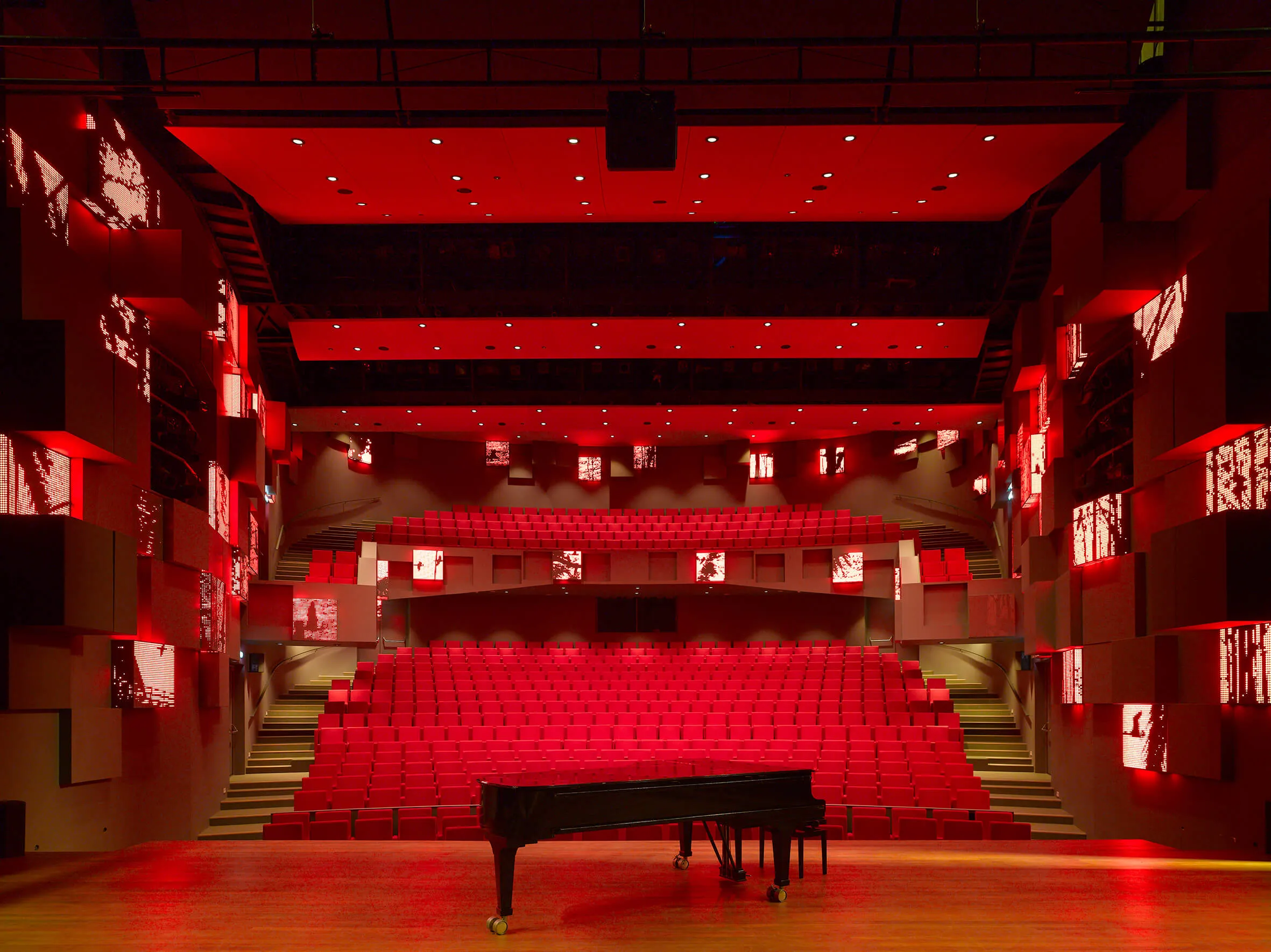


A Flat Floor Room for music, theater and film
The Theatre Hall is characterized by a classic theater appearance. The Flat Floor Room, on the other hand, has a rougher, more contemporary atmosphere, through the walls of clean concrete with contrasting green-blue acoustic elements; the acoustics can be further regulated with the circular curtain. The Flat Floor Room is suitable for various types of shows - from chamber music to cabaret - but is also used, for example, as a cinema and as a hall for conferences or receptions. A special feature of this room is the gigantic window with a panoramic view of Winschoten, through which daylight shines during music recitals and lectures. At the same time, it is also possible to completely darken the auditorium for theater and film screenings.
Connection and multiple use of space
The stairs to the floors are strategically placed and designed in various ways, in order to separate traffic flows between the public - for visitors - and private - for employees and artists; the public staircase is spacious and located in the room, the private staircase is hidden in the building. And because of its central location, the Theatre Hall also forms a natural link between public and private. The backstage is located around the stage houses of the two halls, and is linked to the office spaces. The loading and unloading zone is integrated into the building in such a way that the privacy of artists and technicians is guaranteed with a simple screening procedure. The freight elevator is accessible from the outside and from the loading and unloading area.
Innovative acoustics
Acoustically, the Winschoten Culture House is an innovative building. The two theater halls, the multifunctional Radio and TV Studio, the music school and the dance studio can be used simultaneously without experiencing discomfort from each other. Atelier PRO was advised on this by building physics consultancy Peutz, which developed the sound insulation measures. For example, dilatations have been installed around the auditoriums to ensure that there is no audible interference between these two spaces; this allows a blockbuster from The Avengers to be shown in the flat floor room, while a Bach chamber concert takes place in the main auditorium at the same time. In addition, the music rooms on the second floor are designed as a “box in a box”. For example, pop groups, music ensembles and percussion groups can rehearse simultaneously in these classrooms without being bothered by each other and without disturbing the silence in the library.
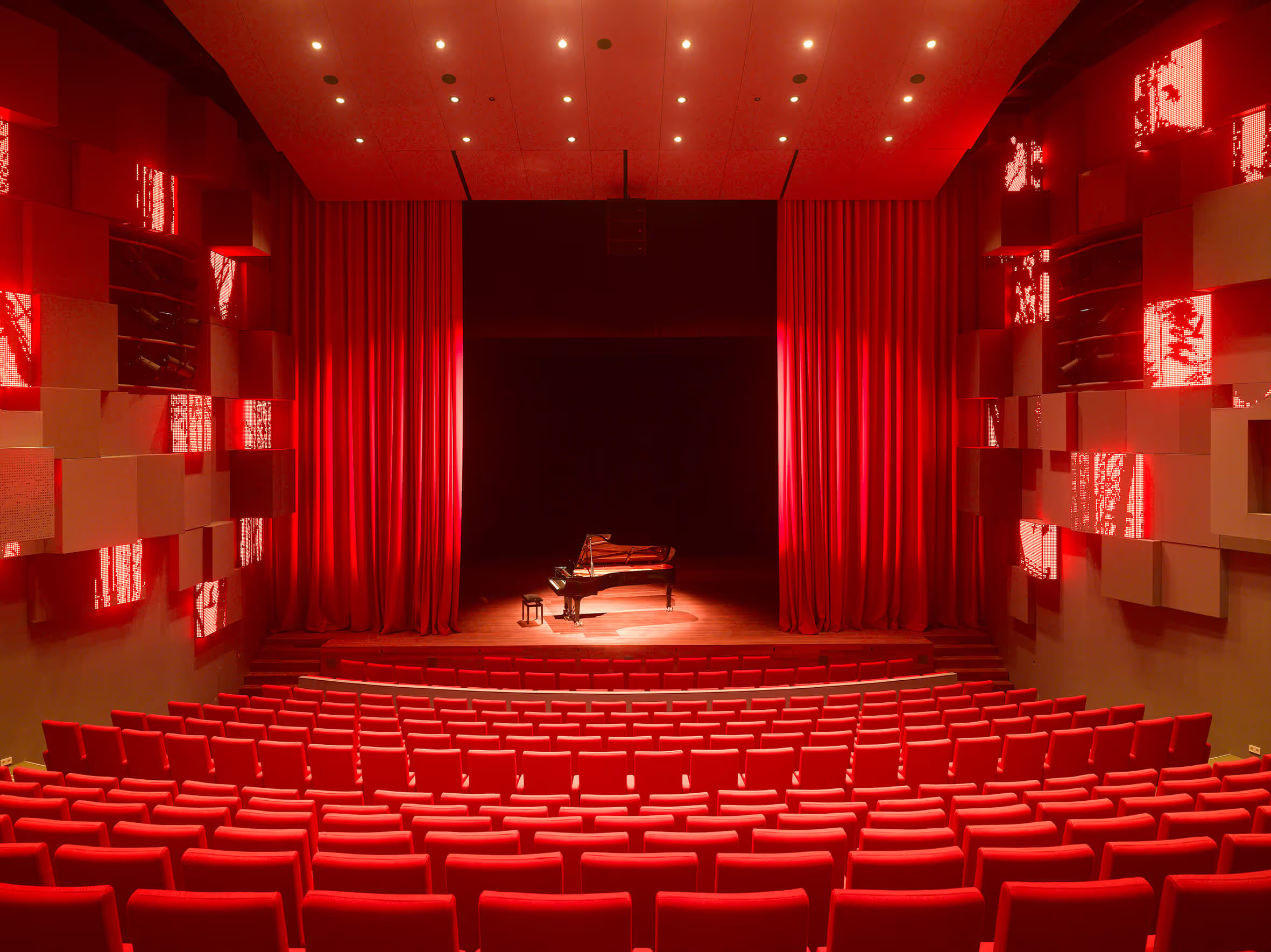


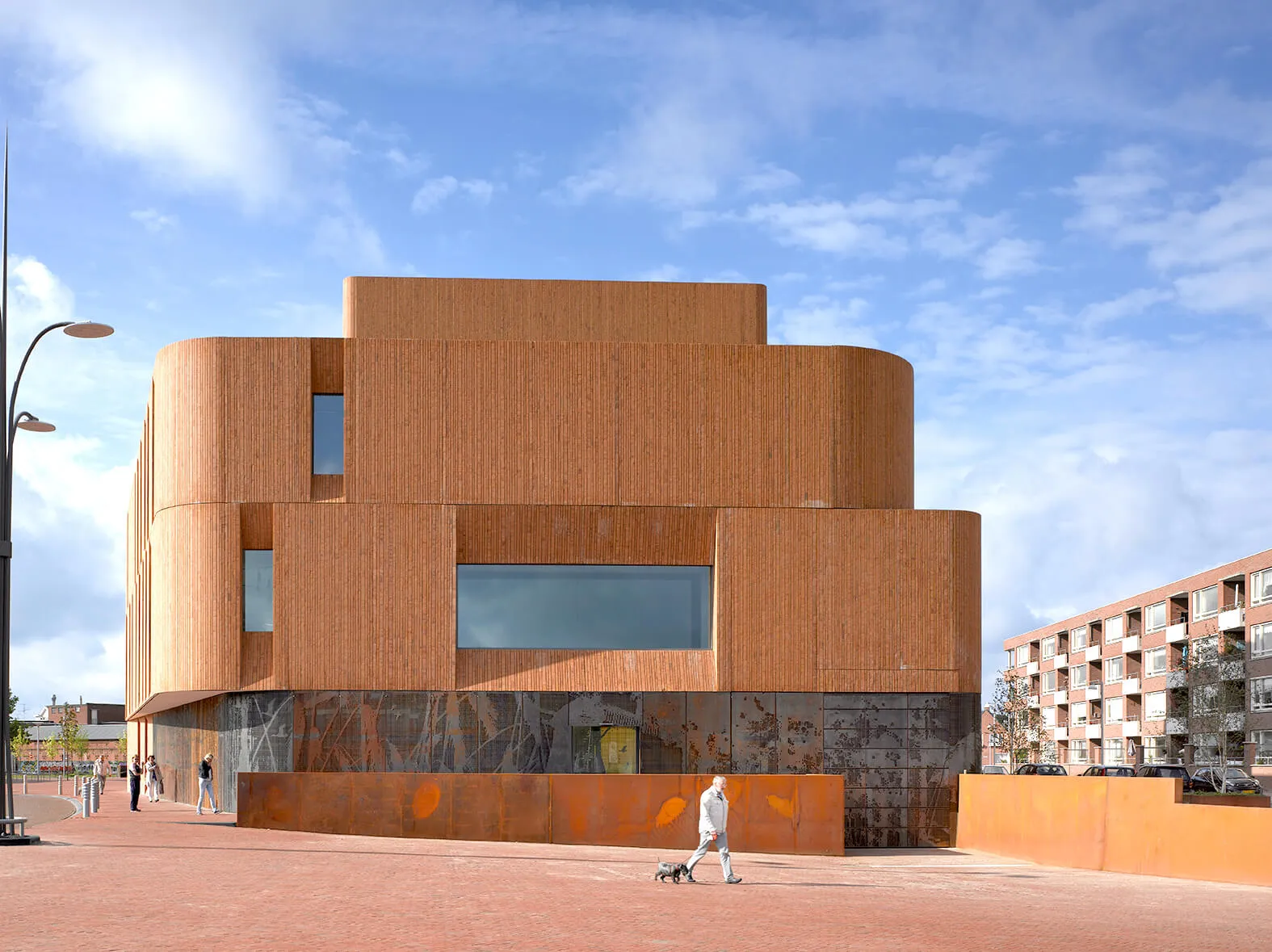
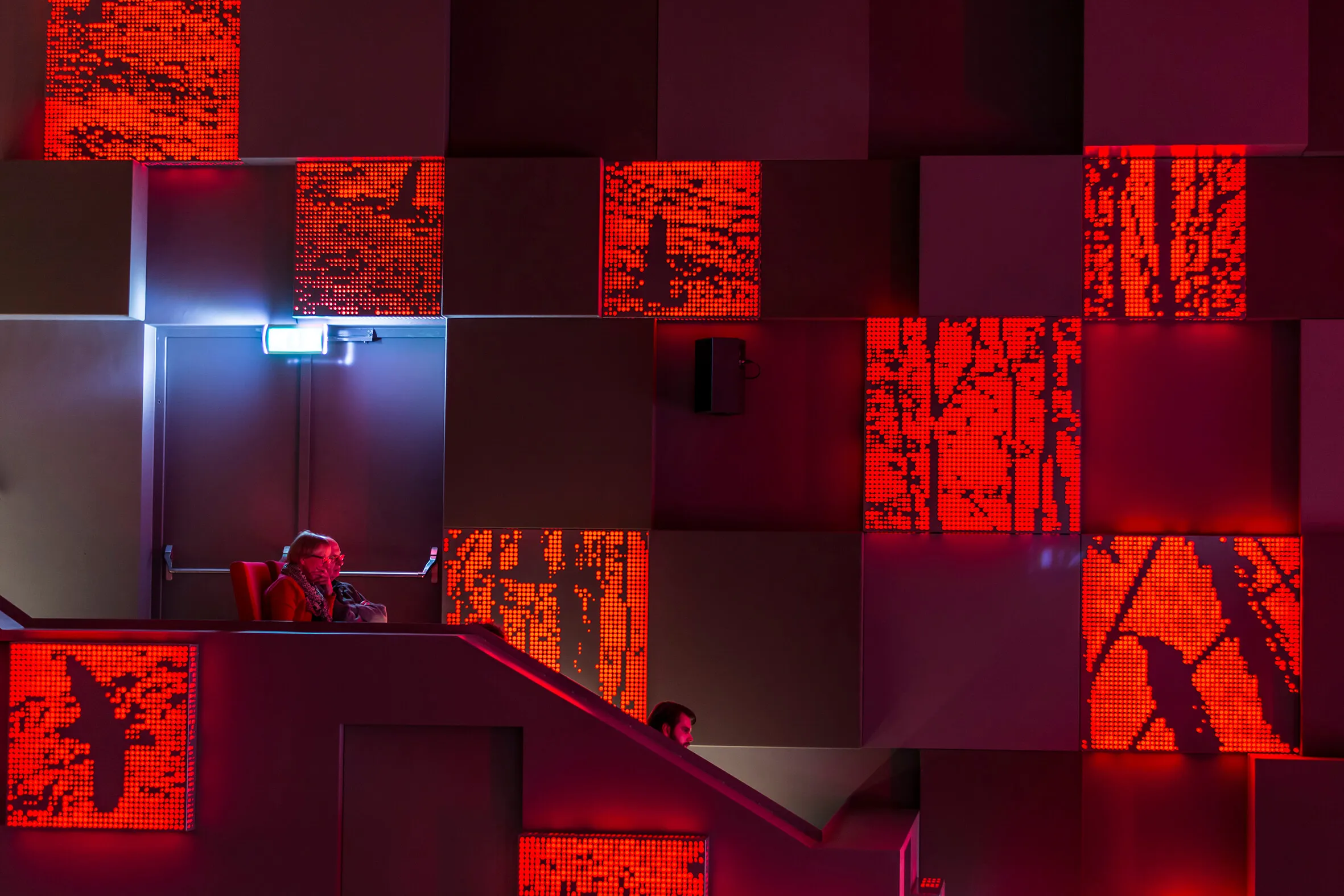
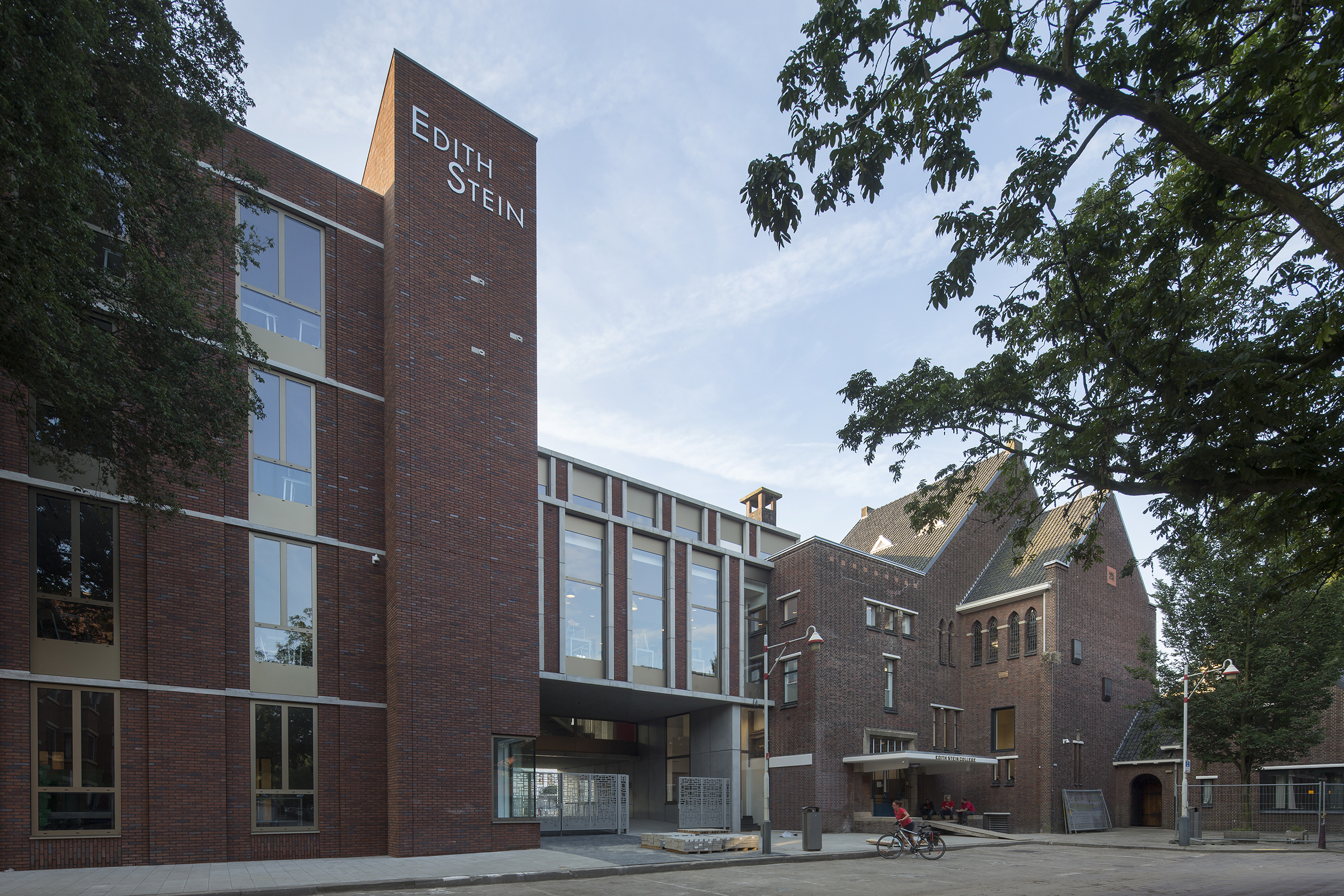




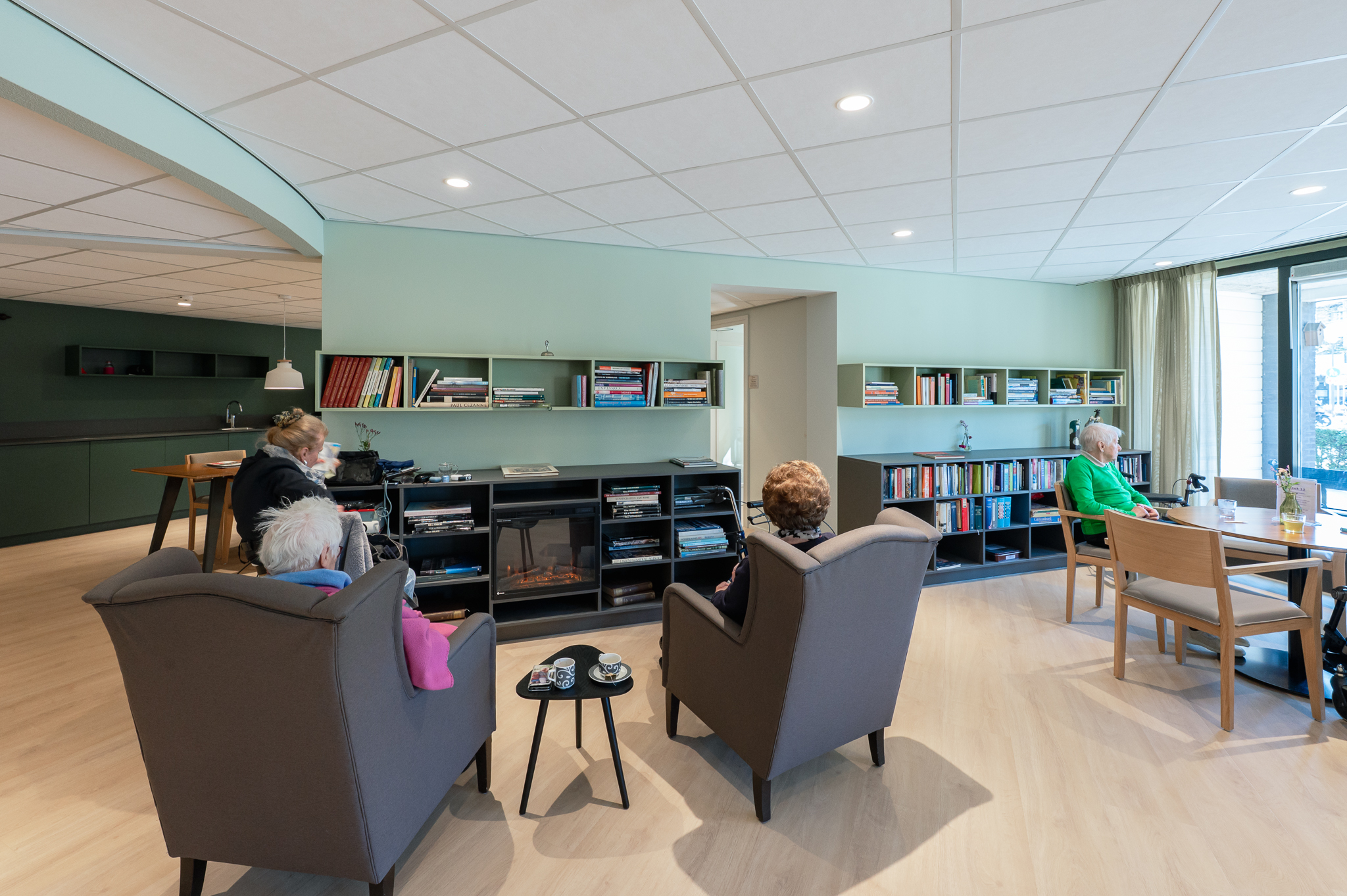
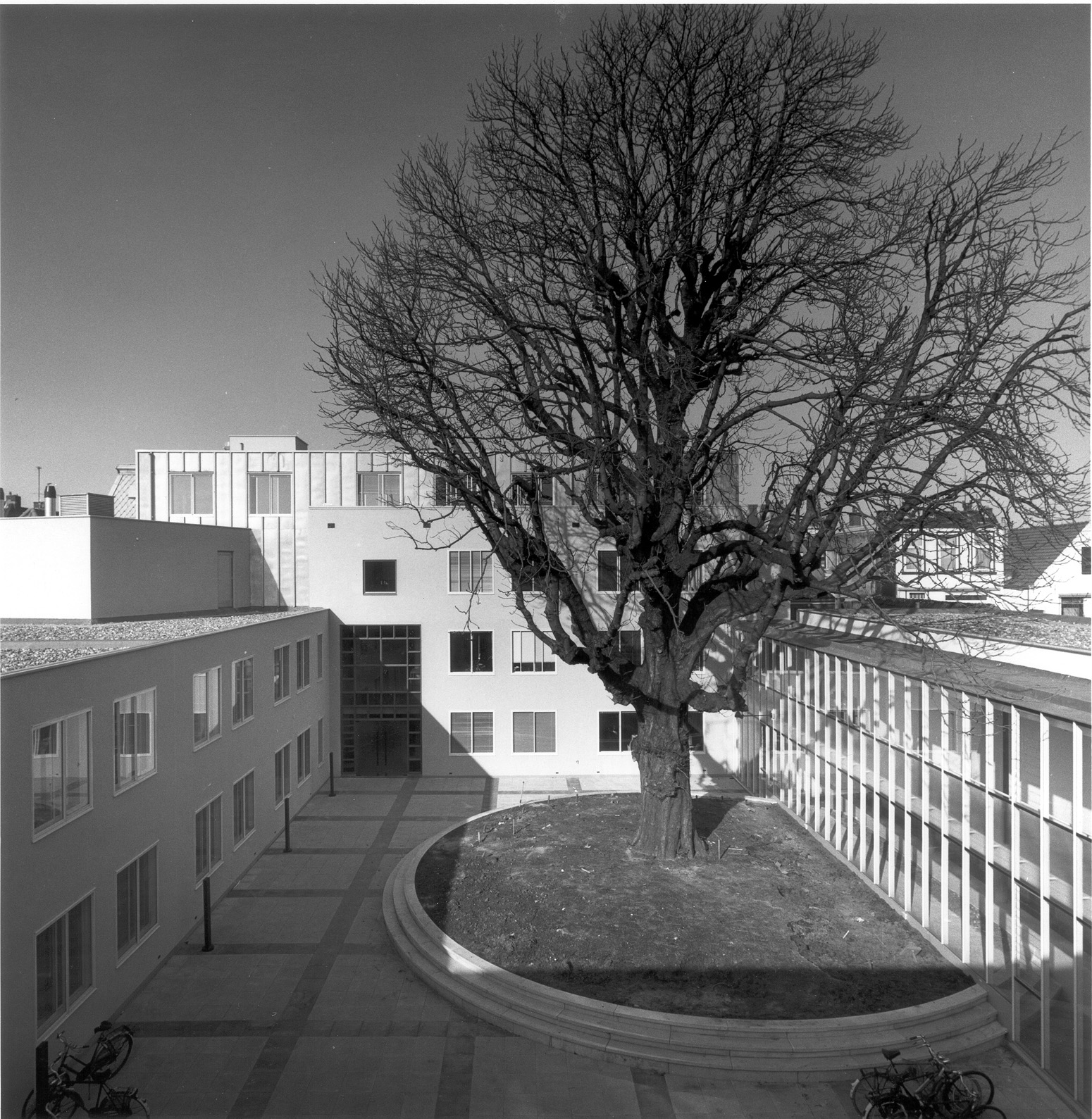

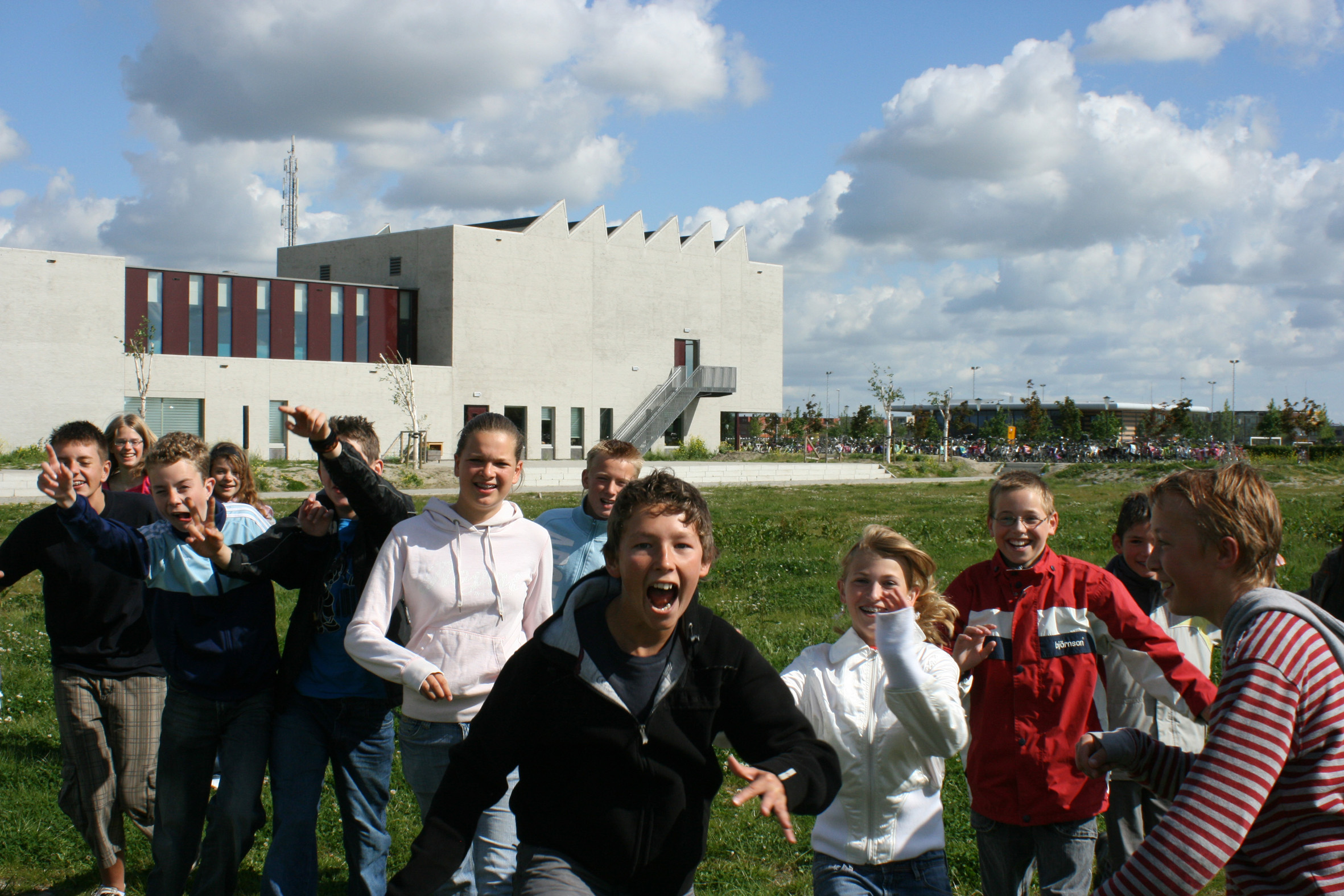

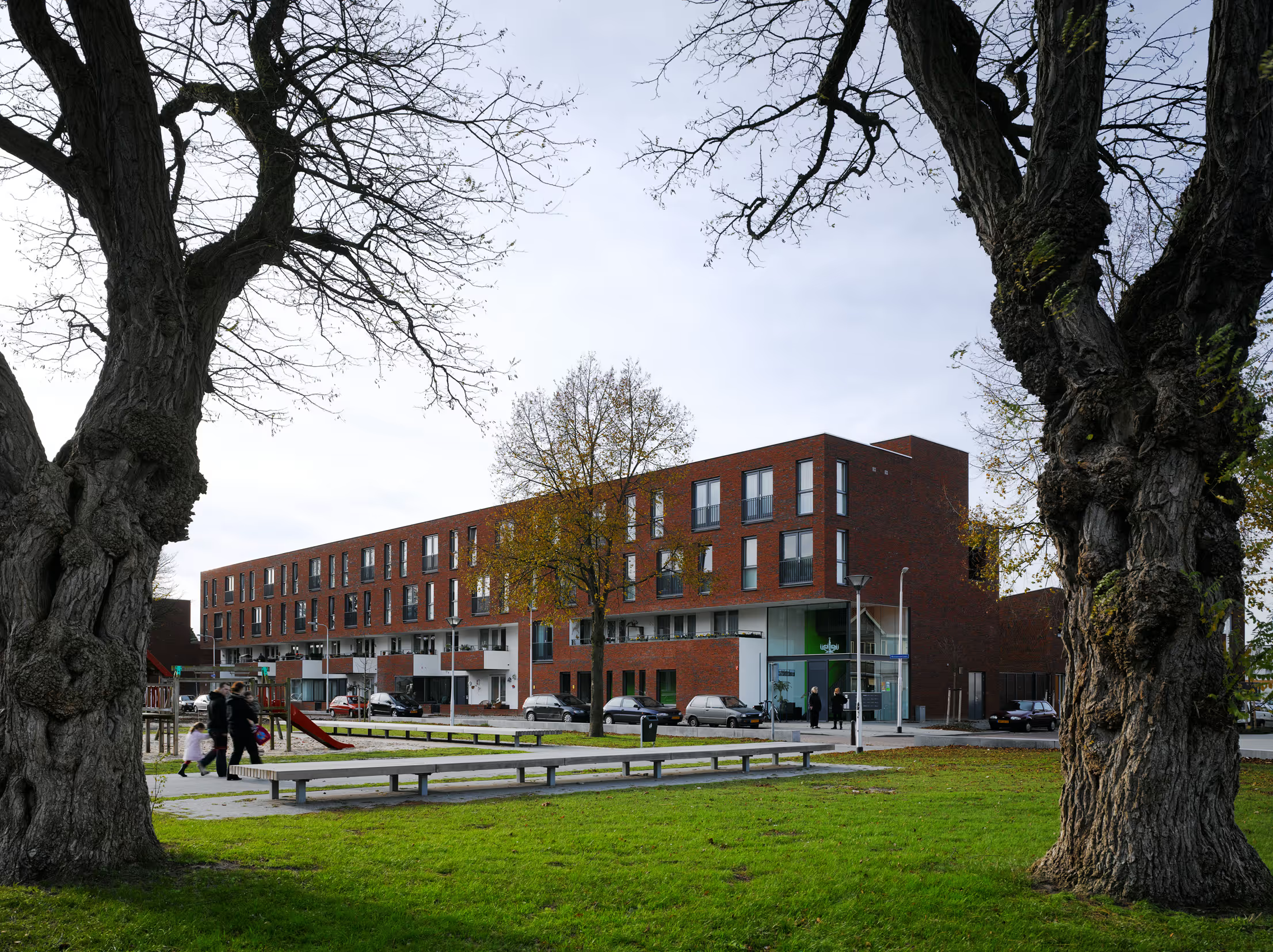
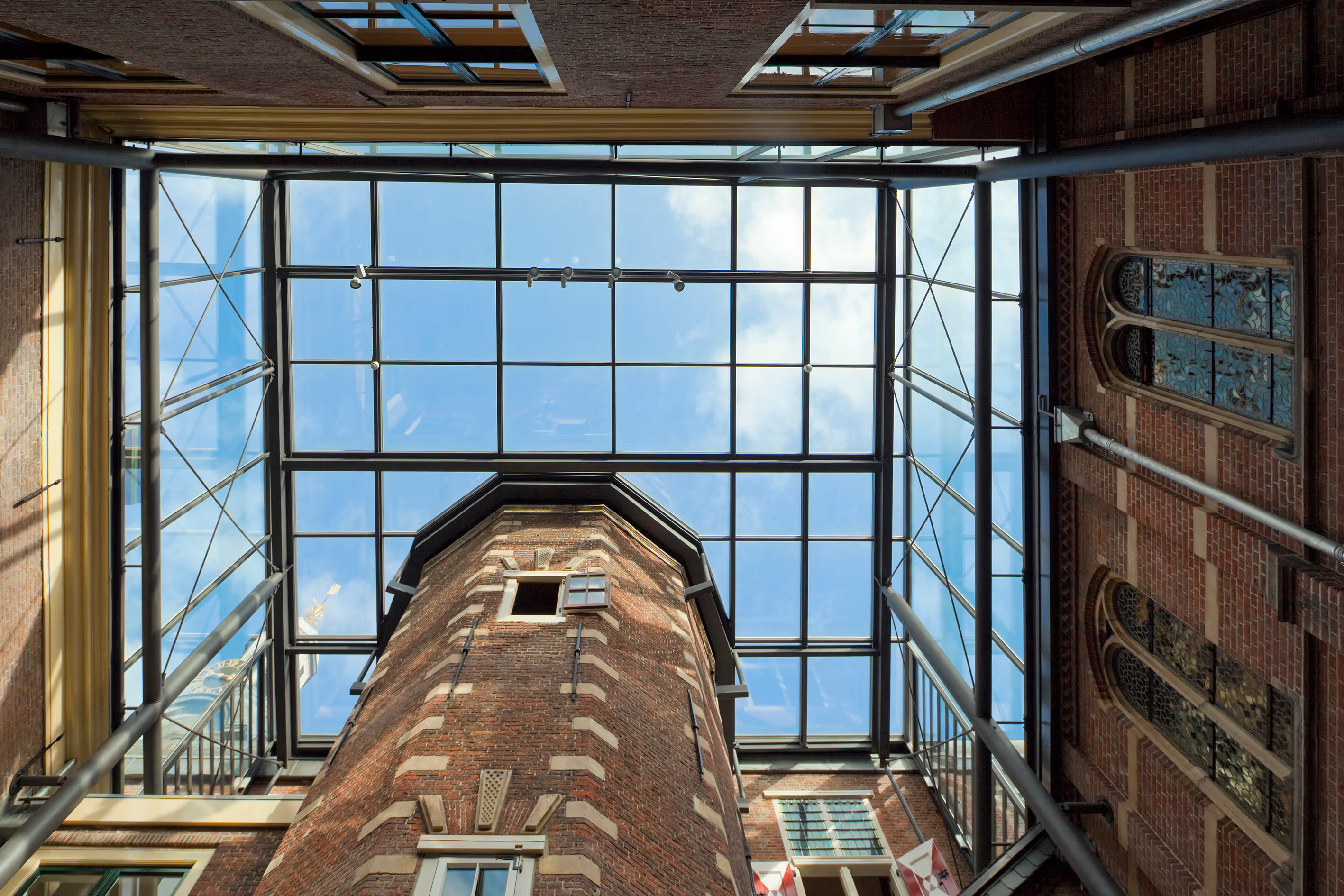

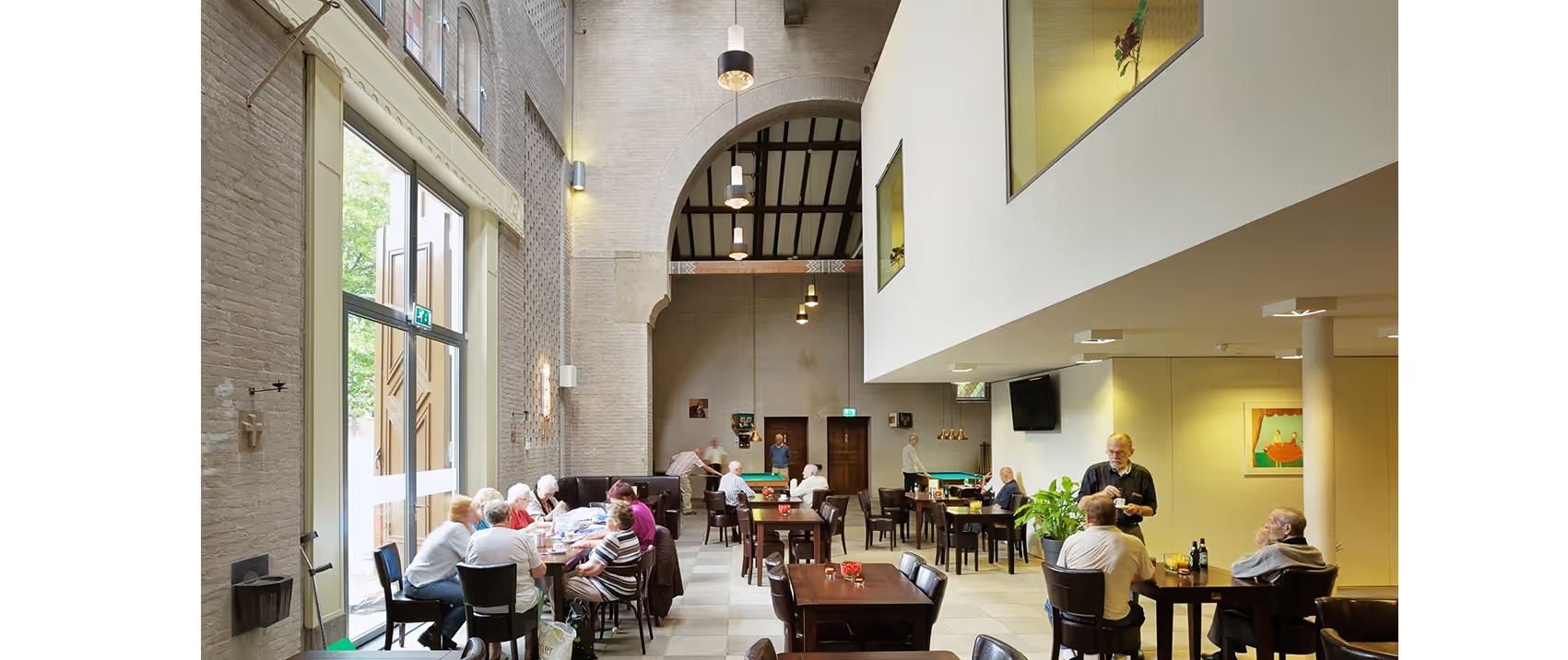

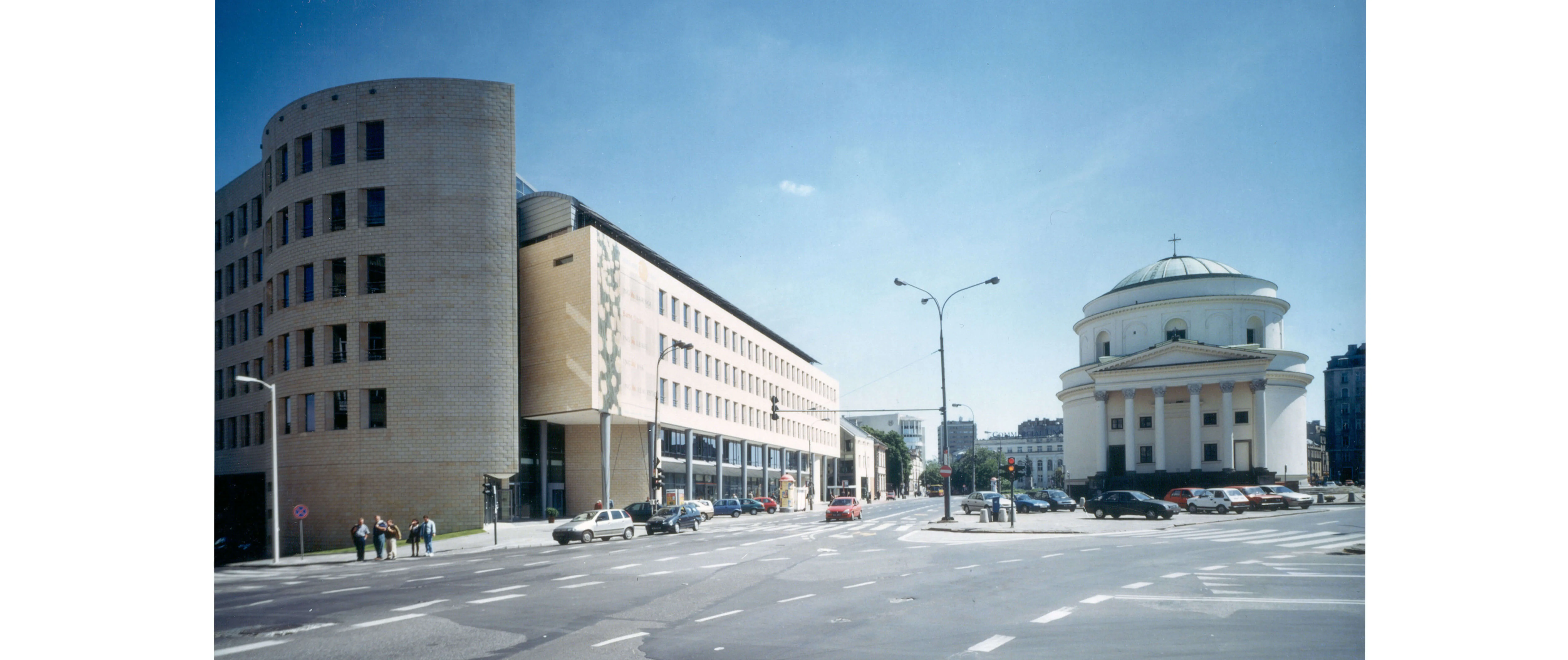

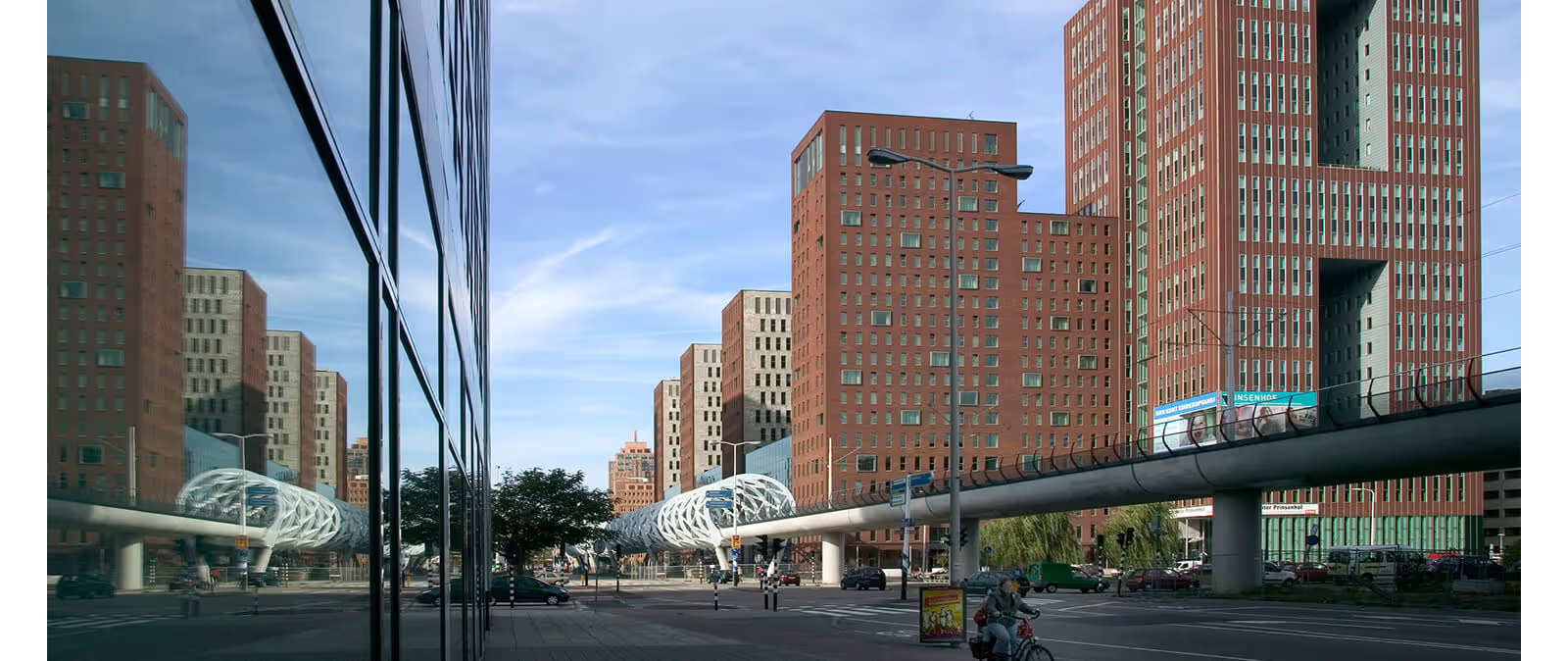
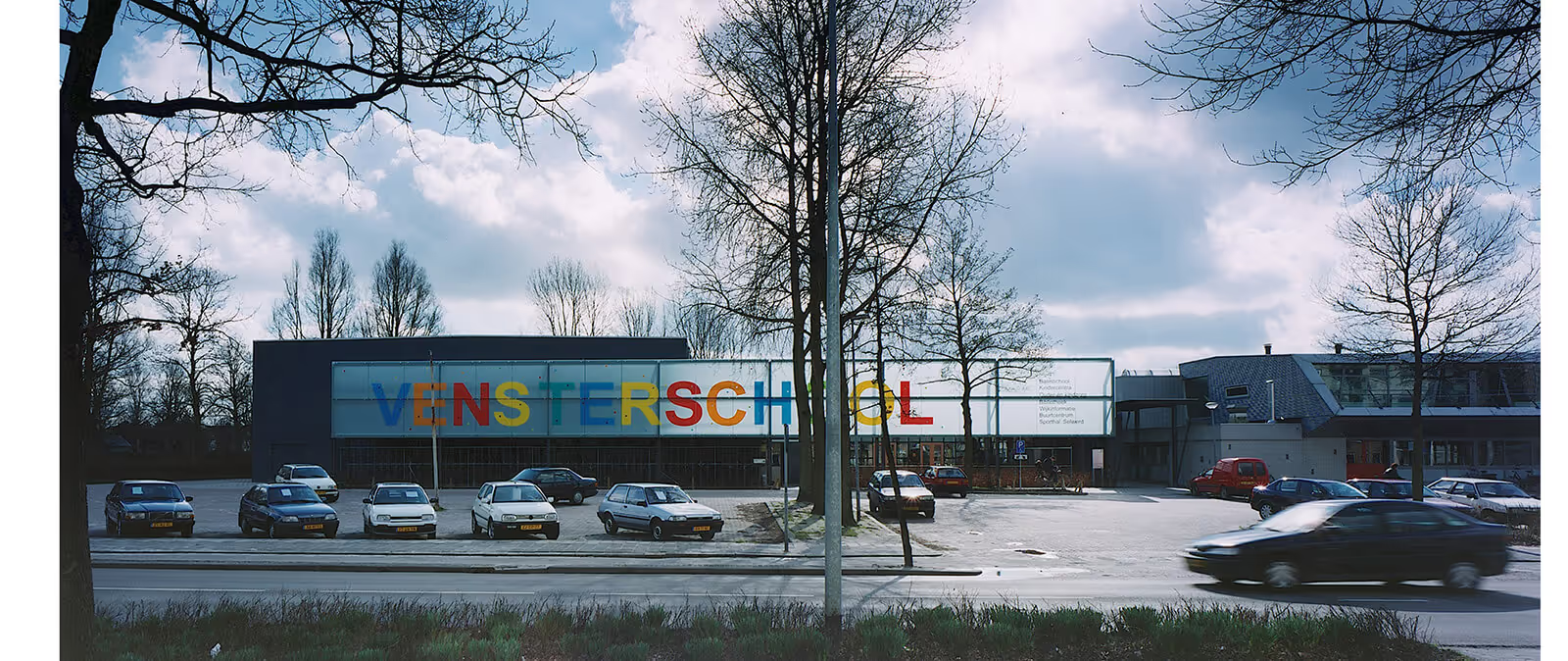

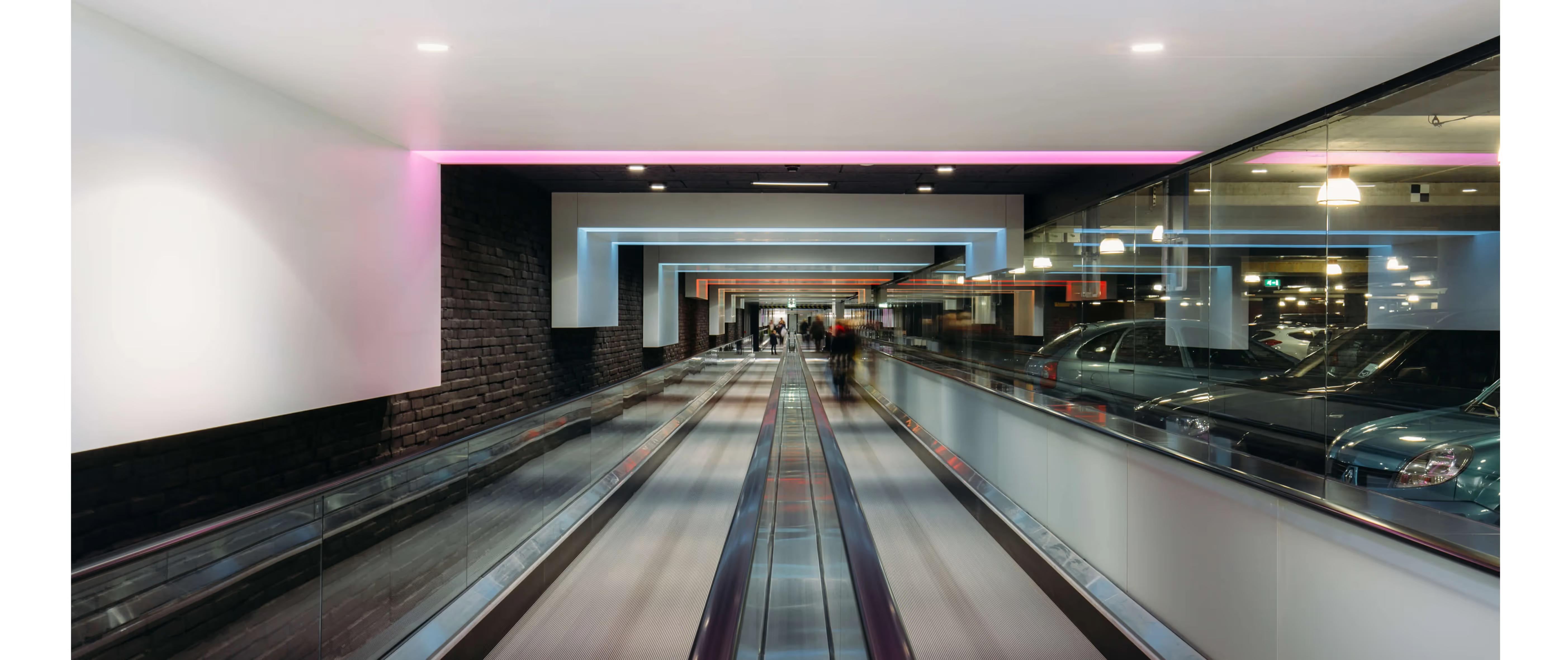

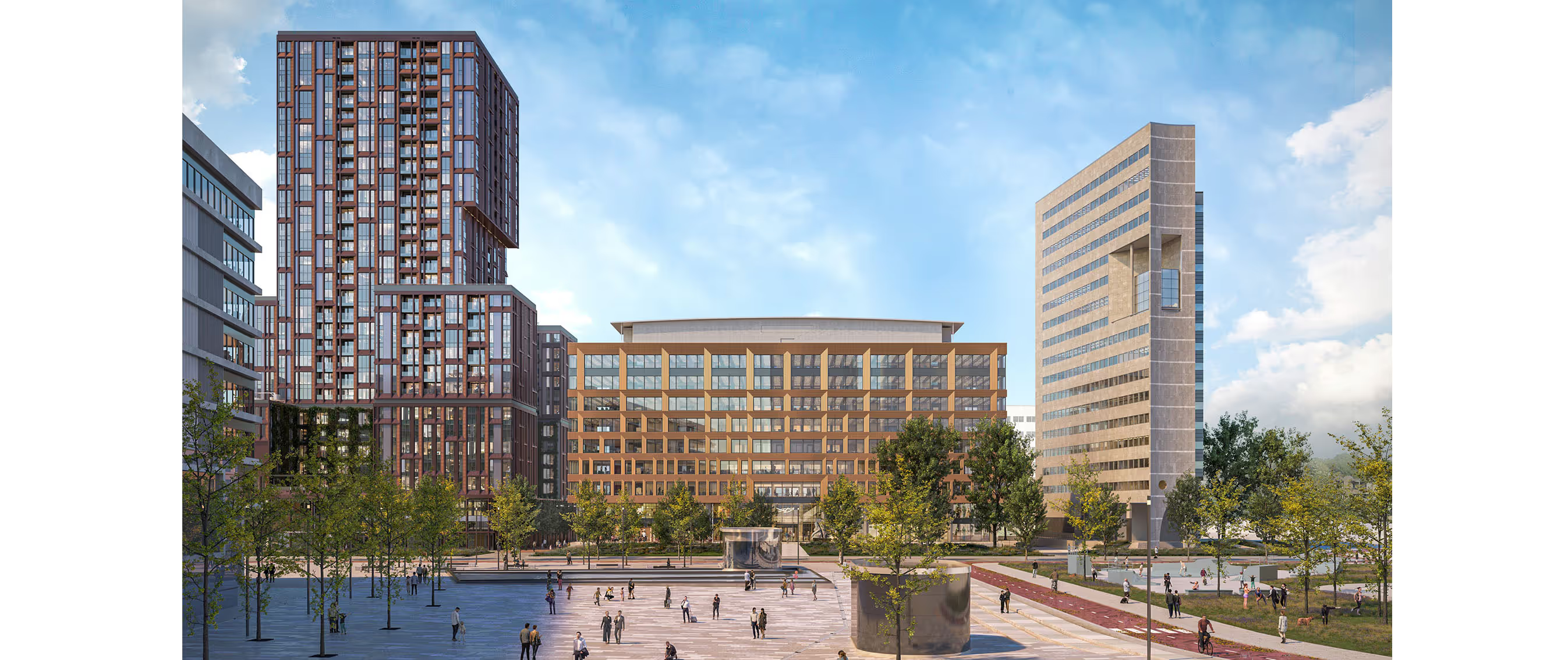

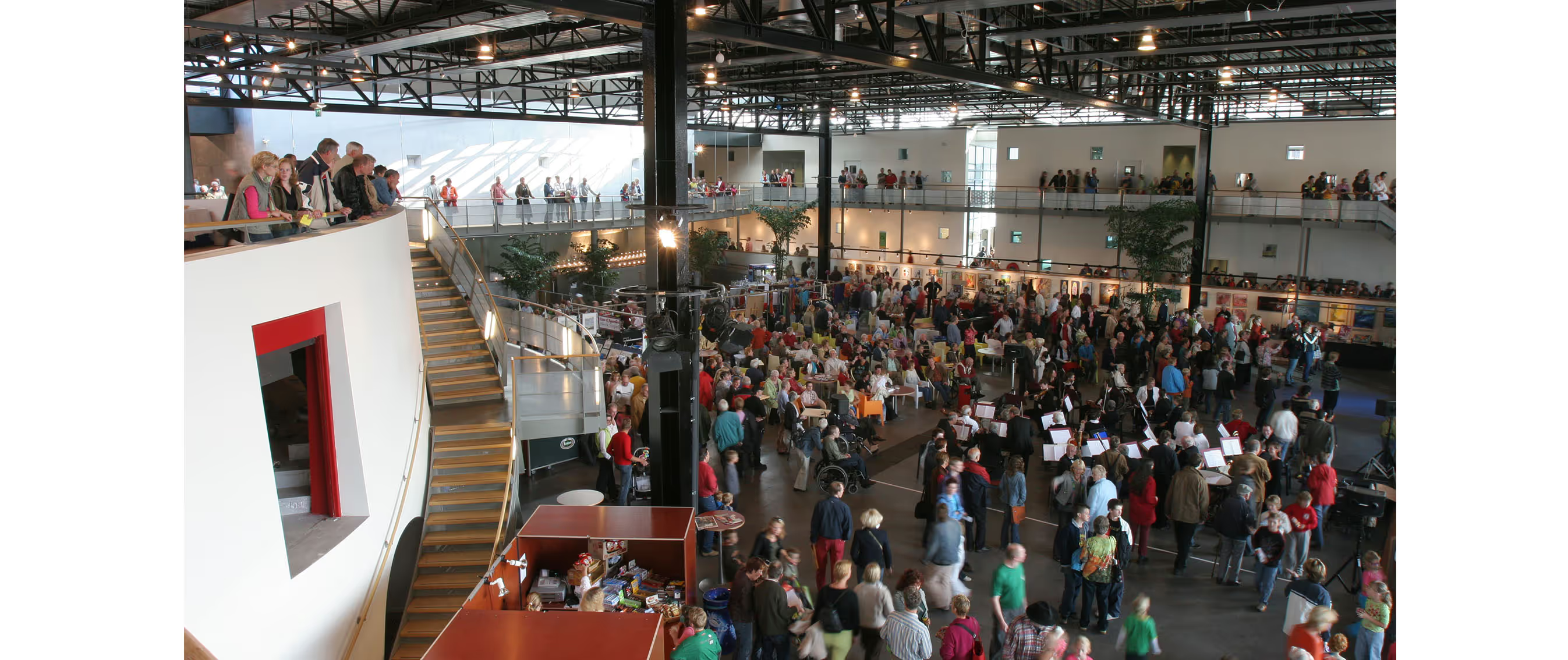
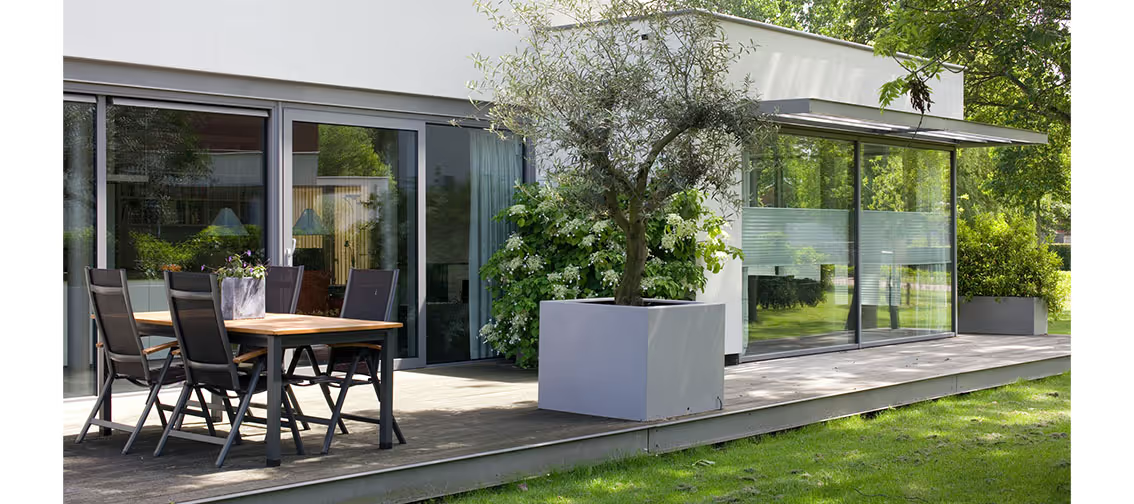
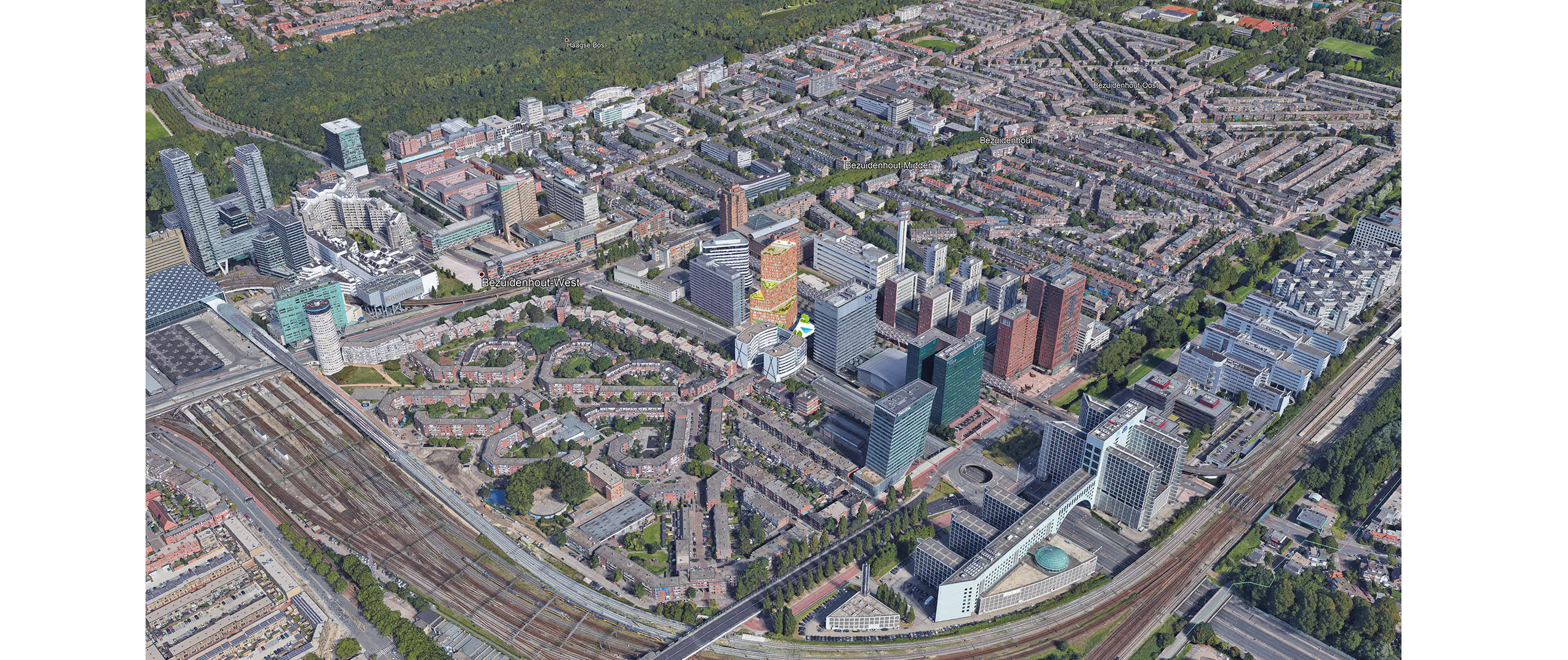


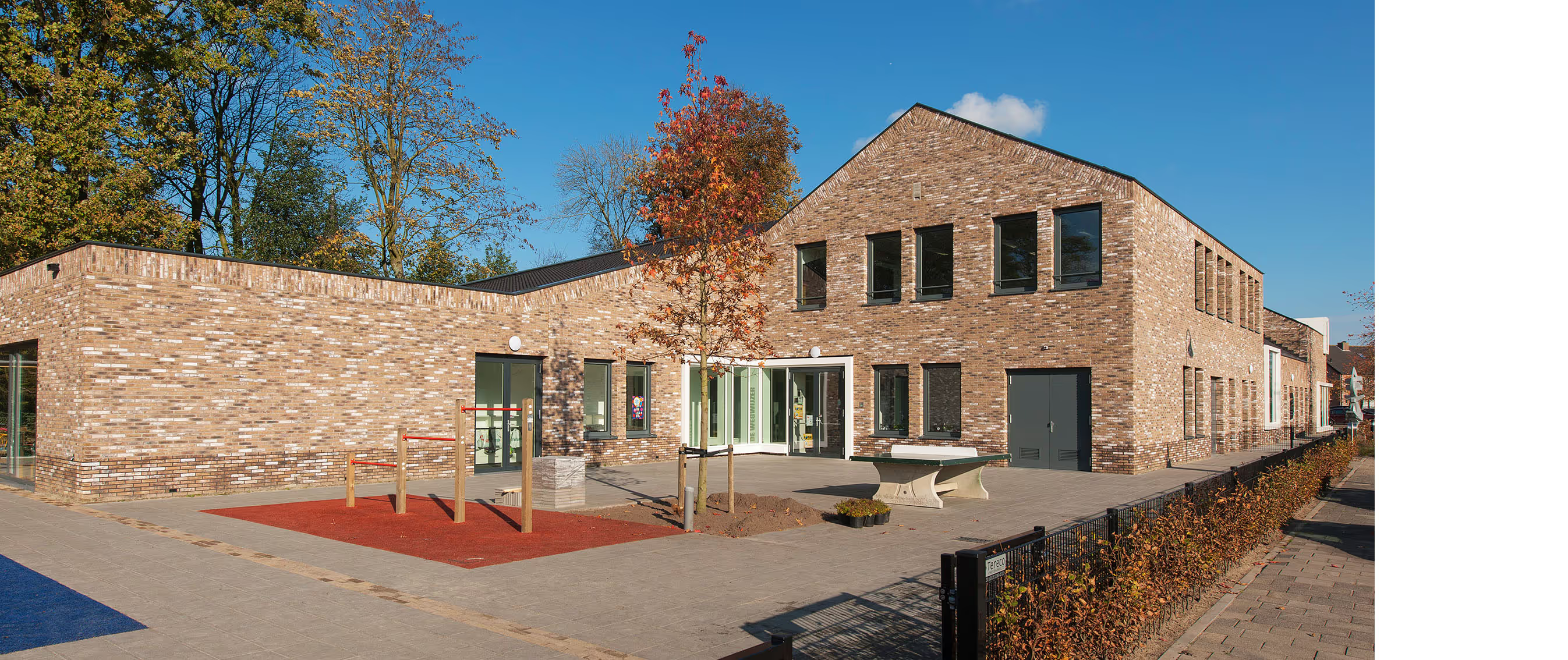

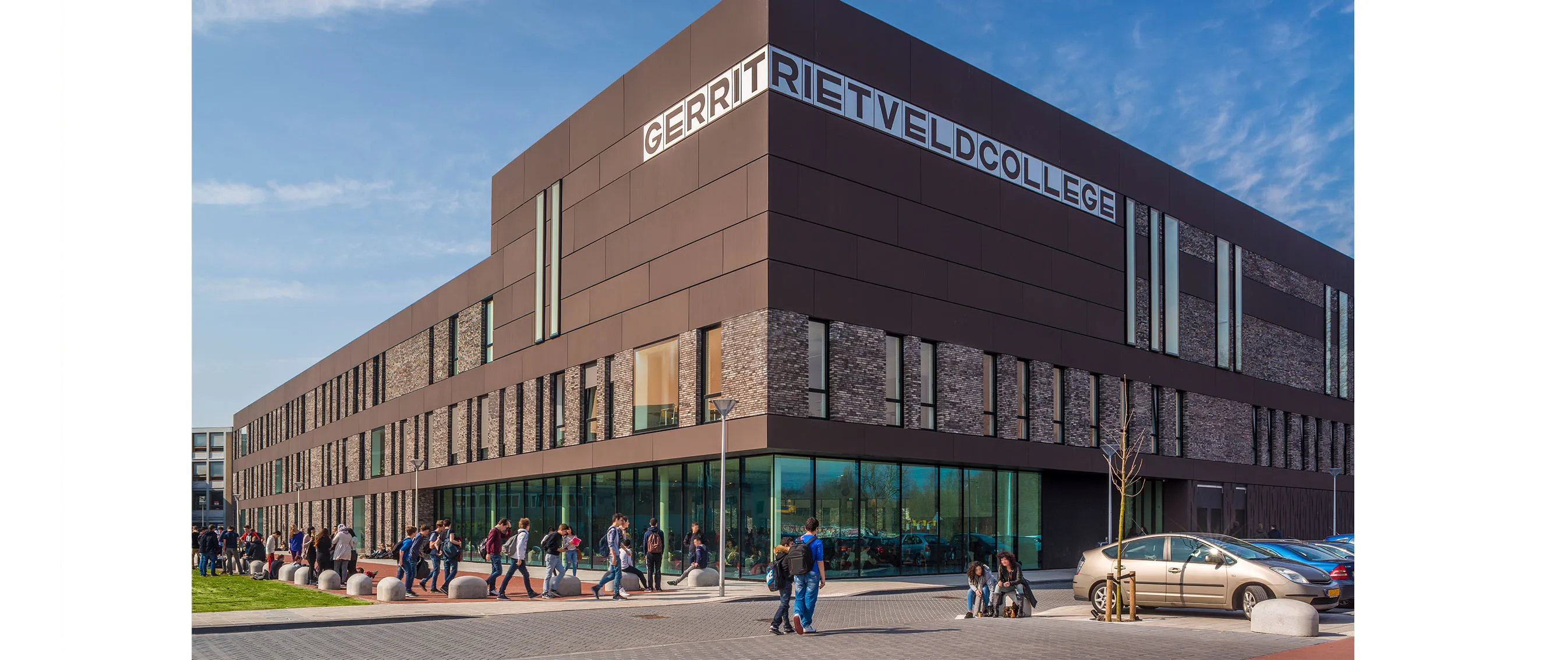

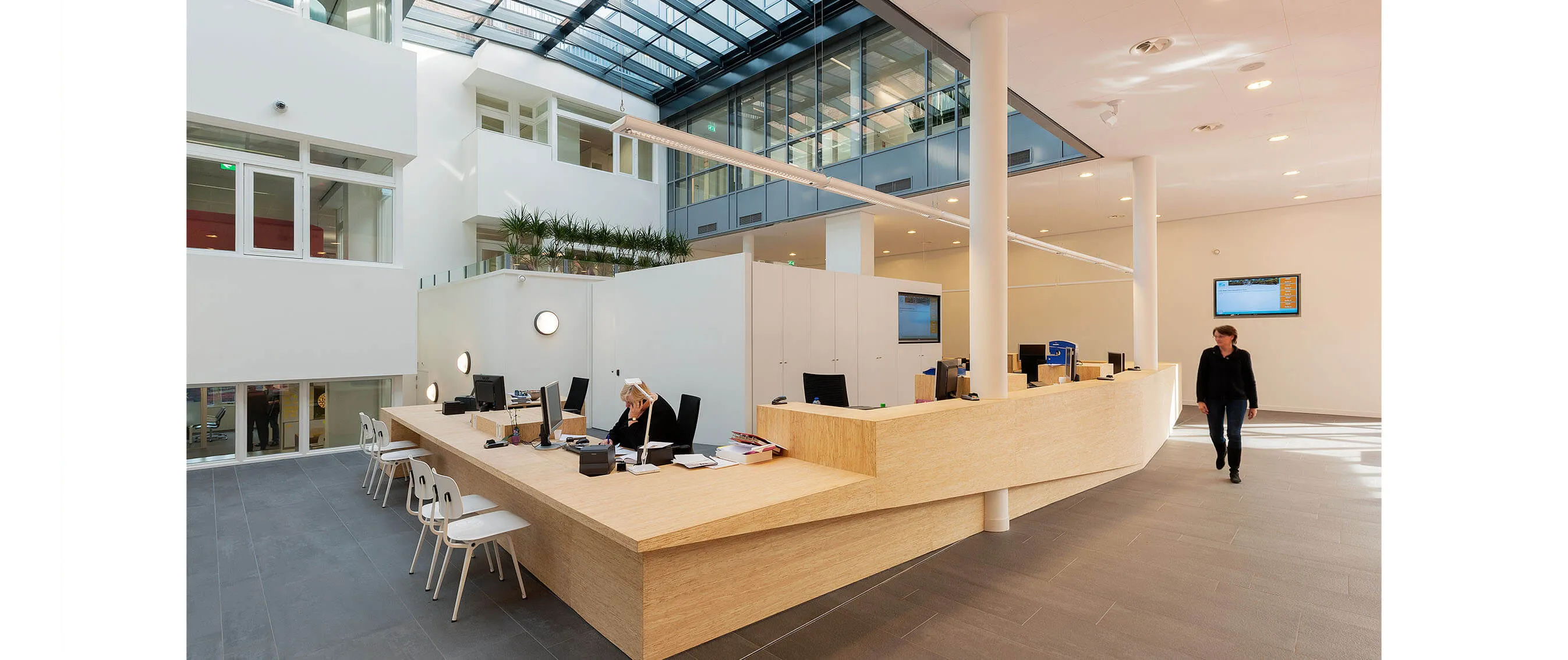
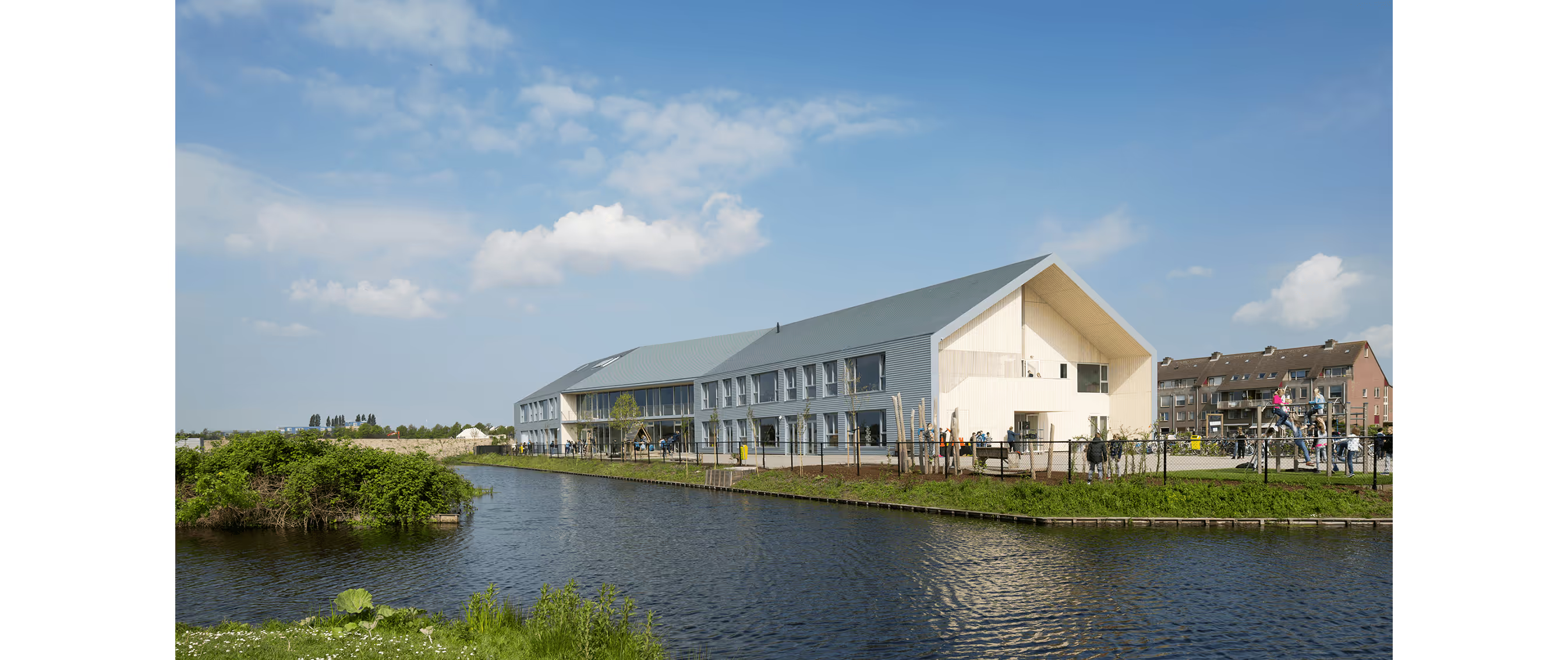

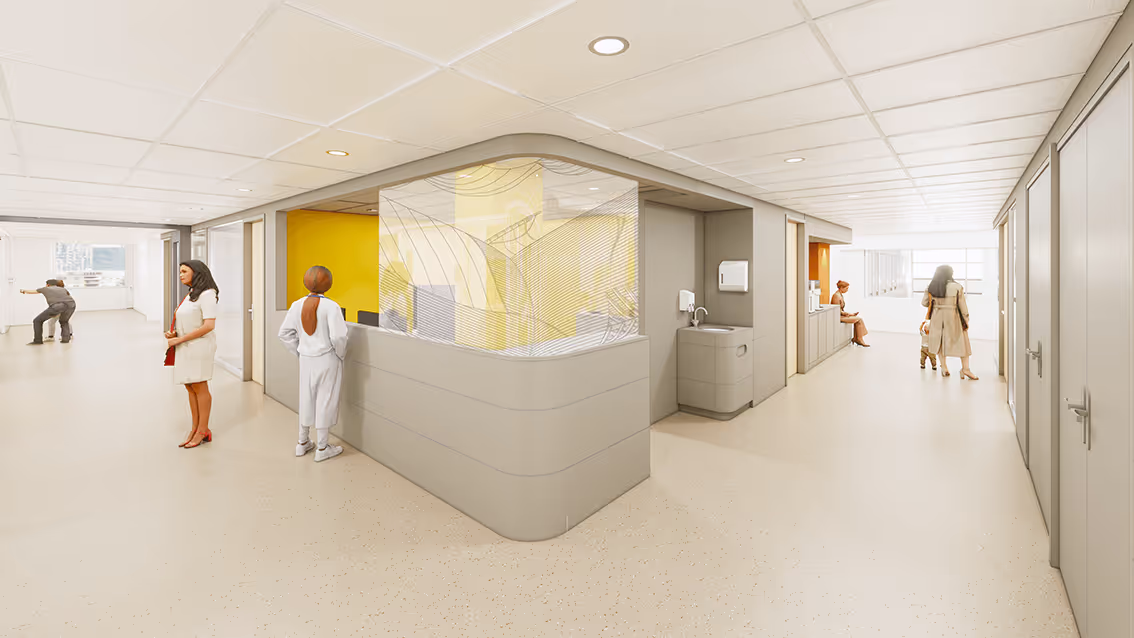
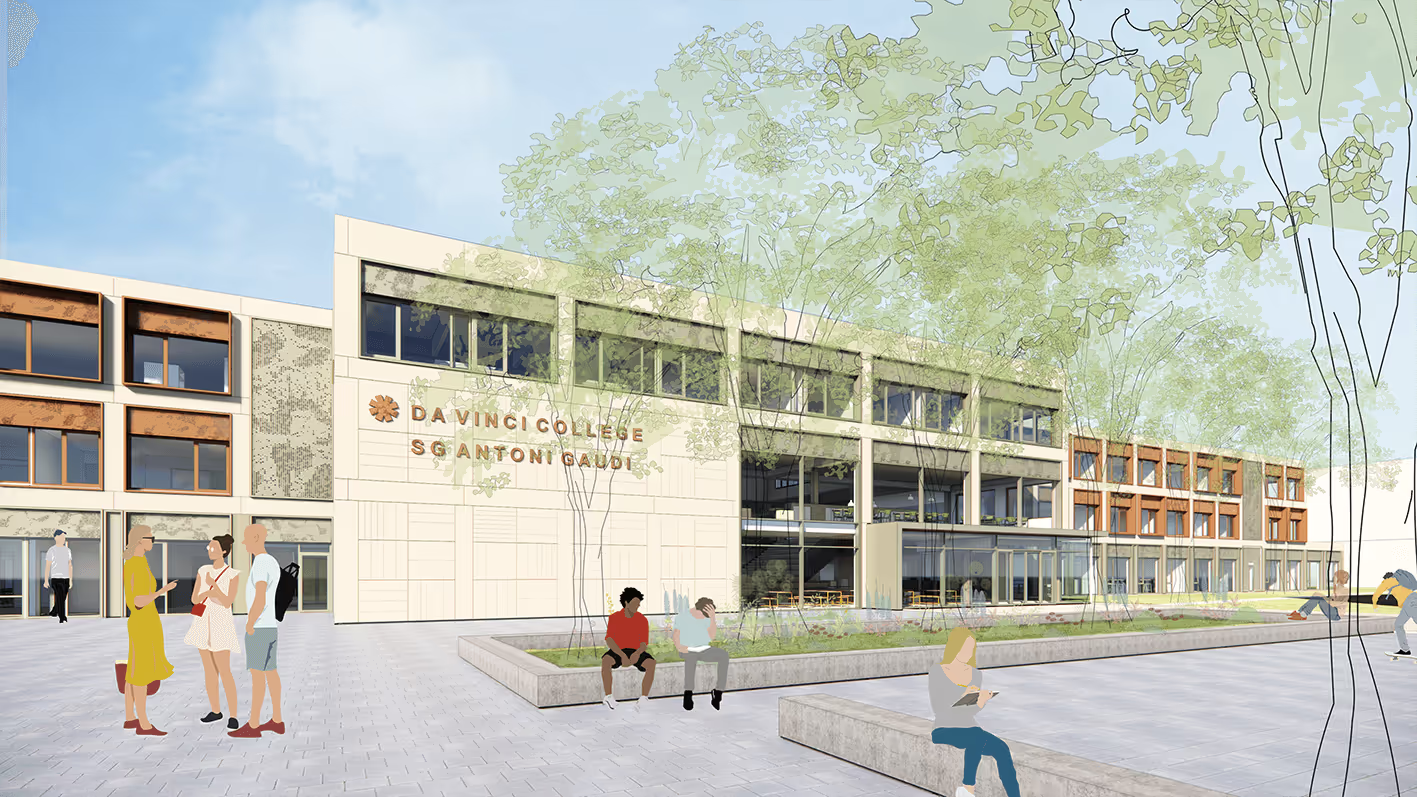
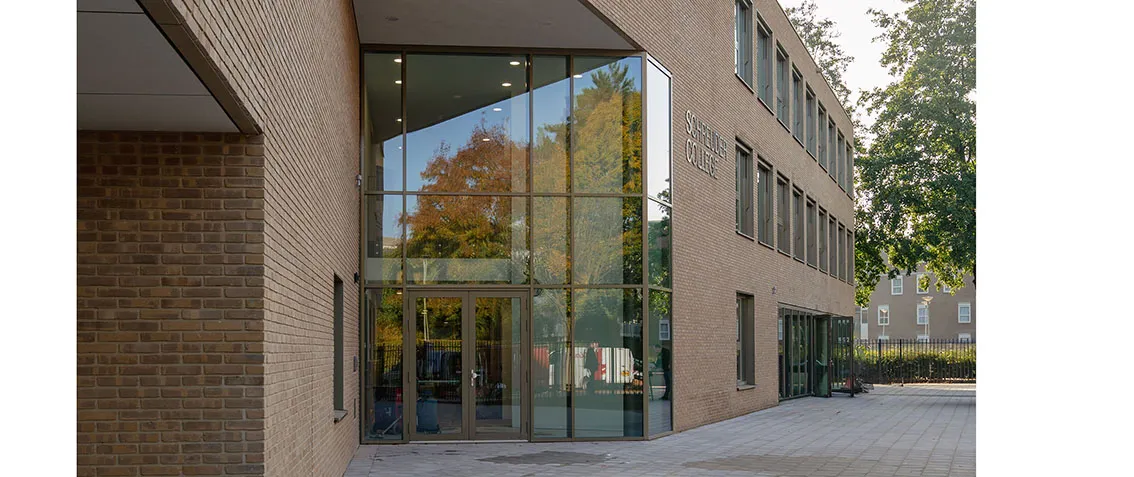
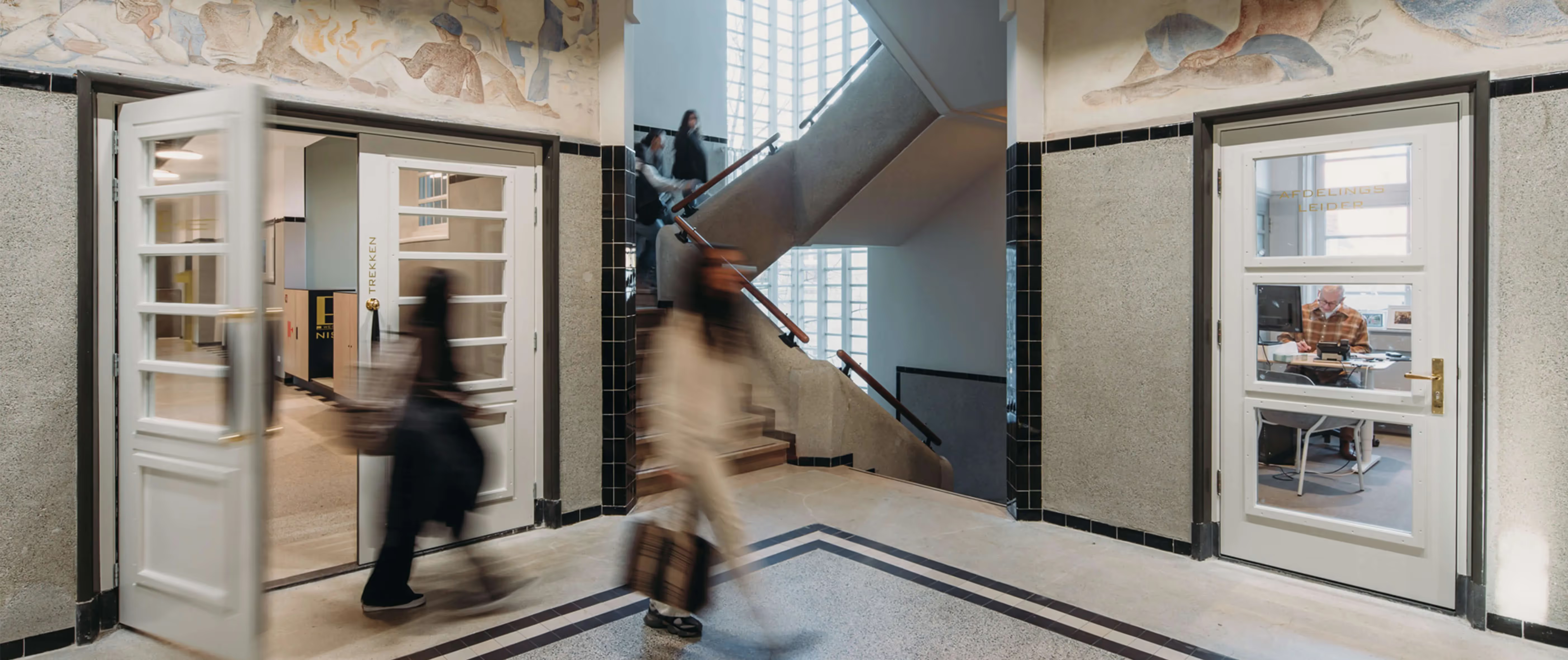
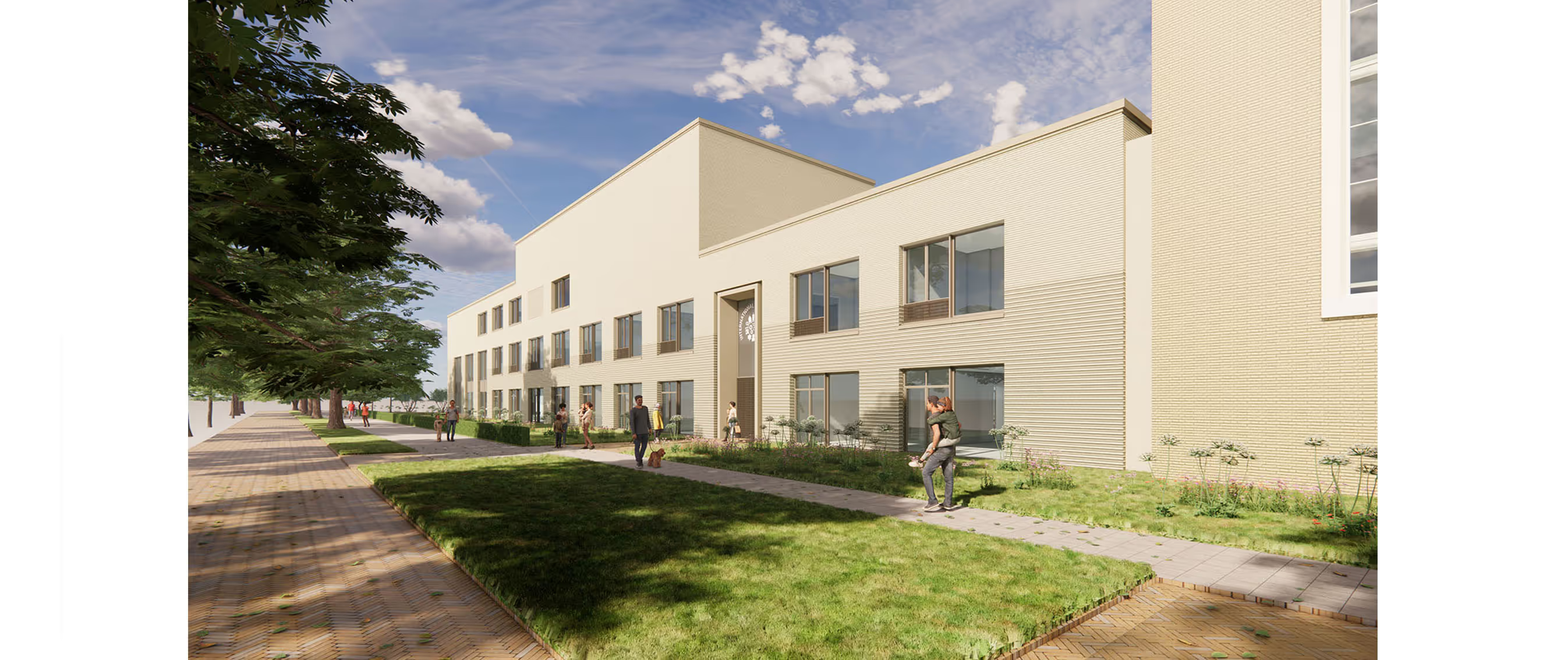

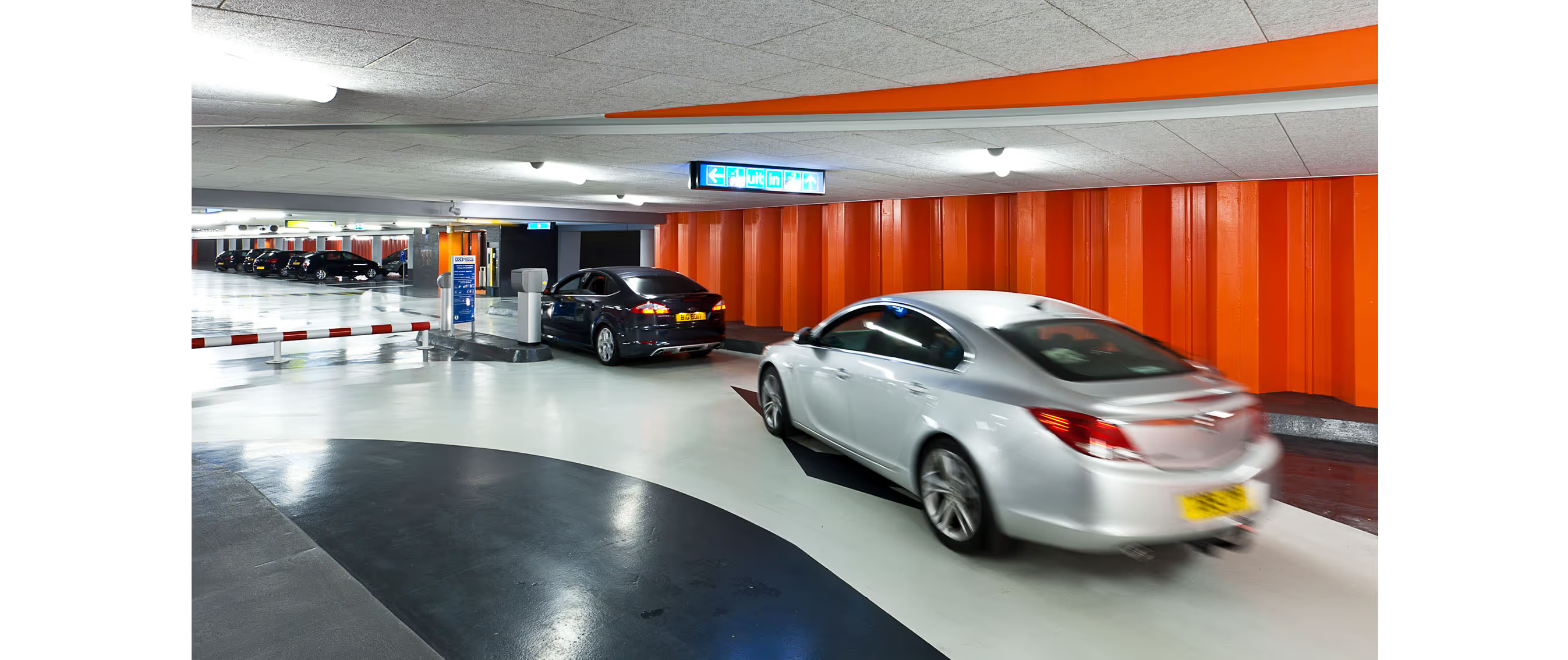
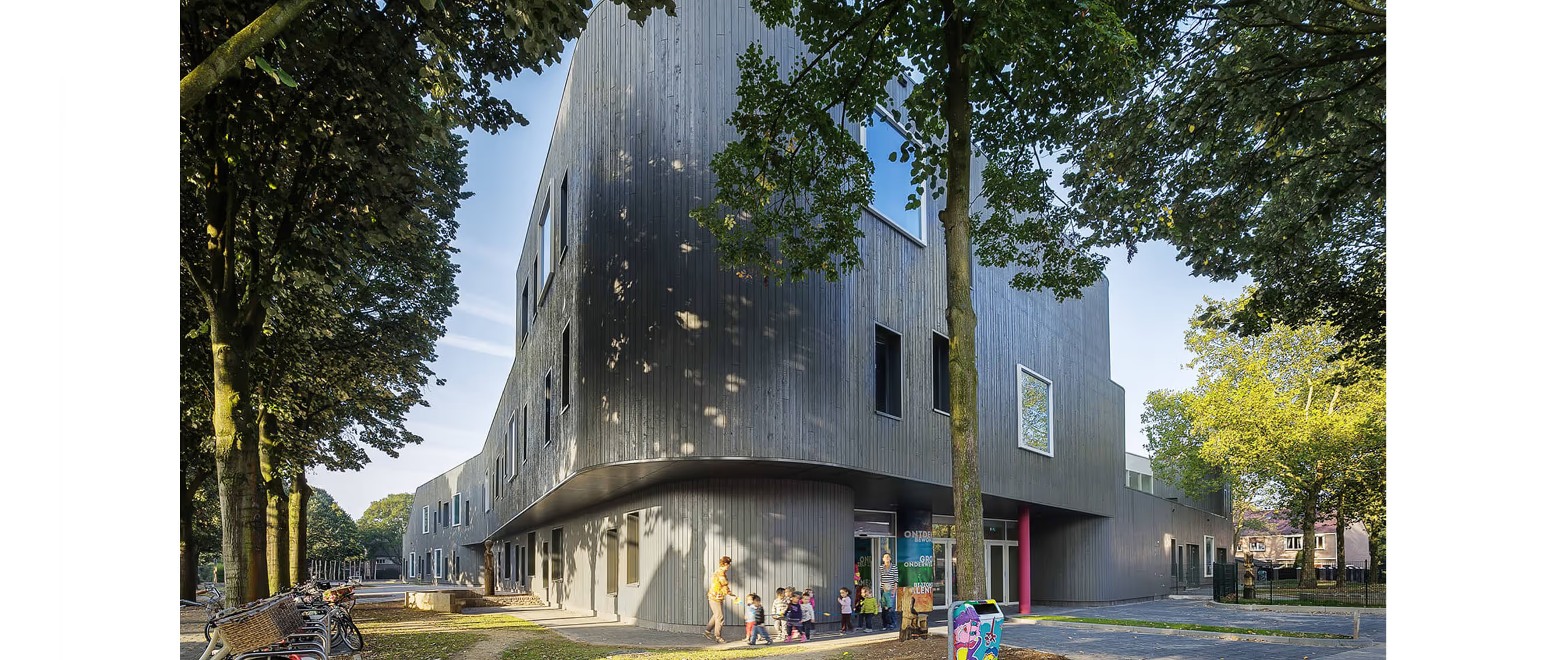
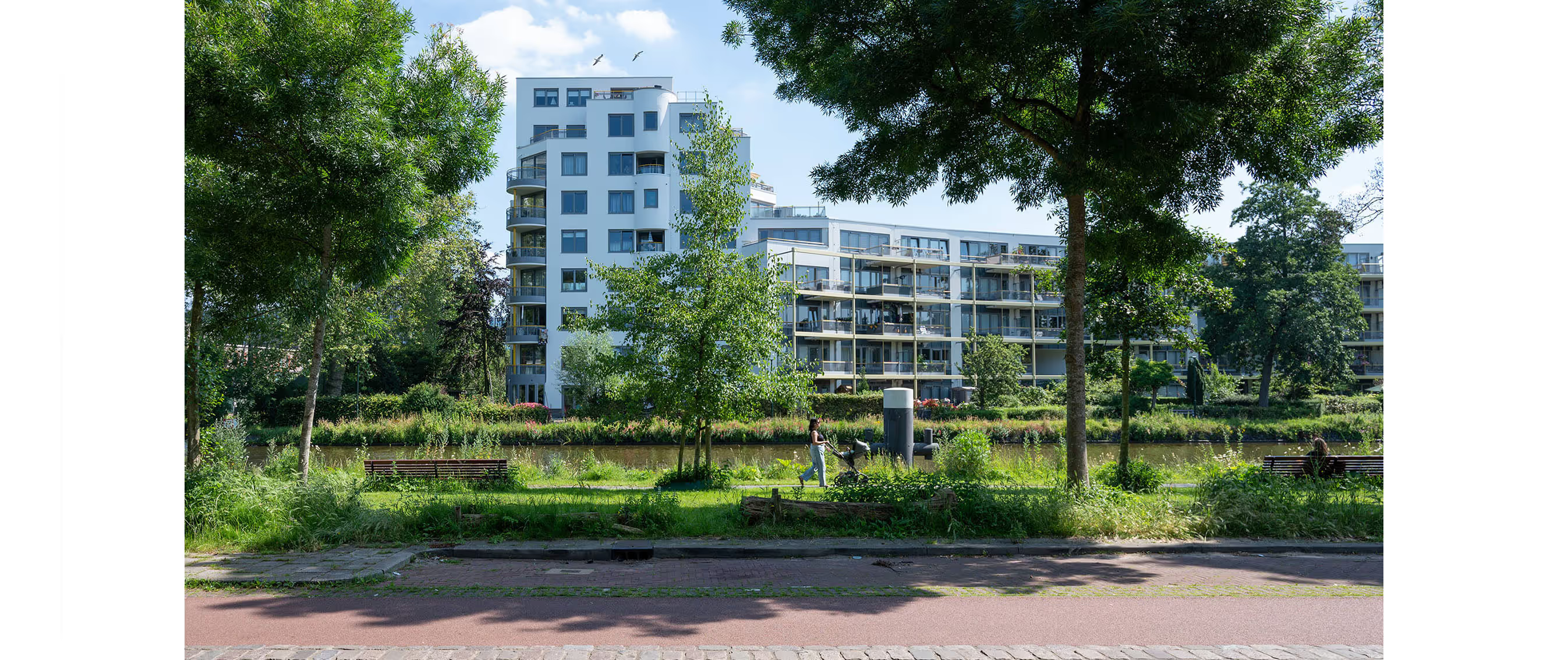
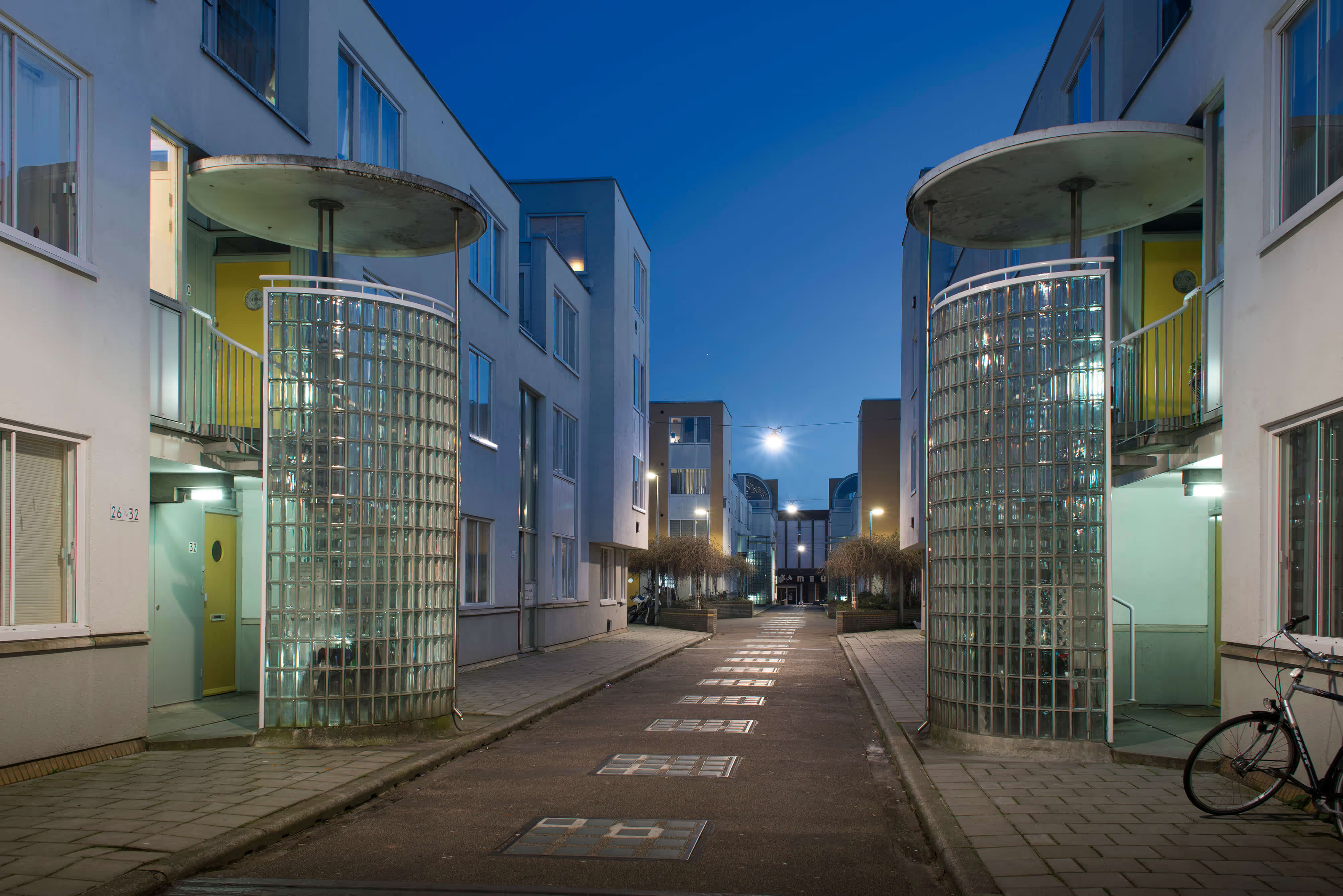
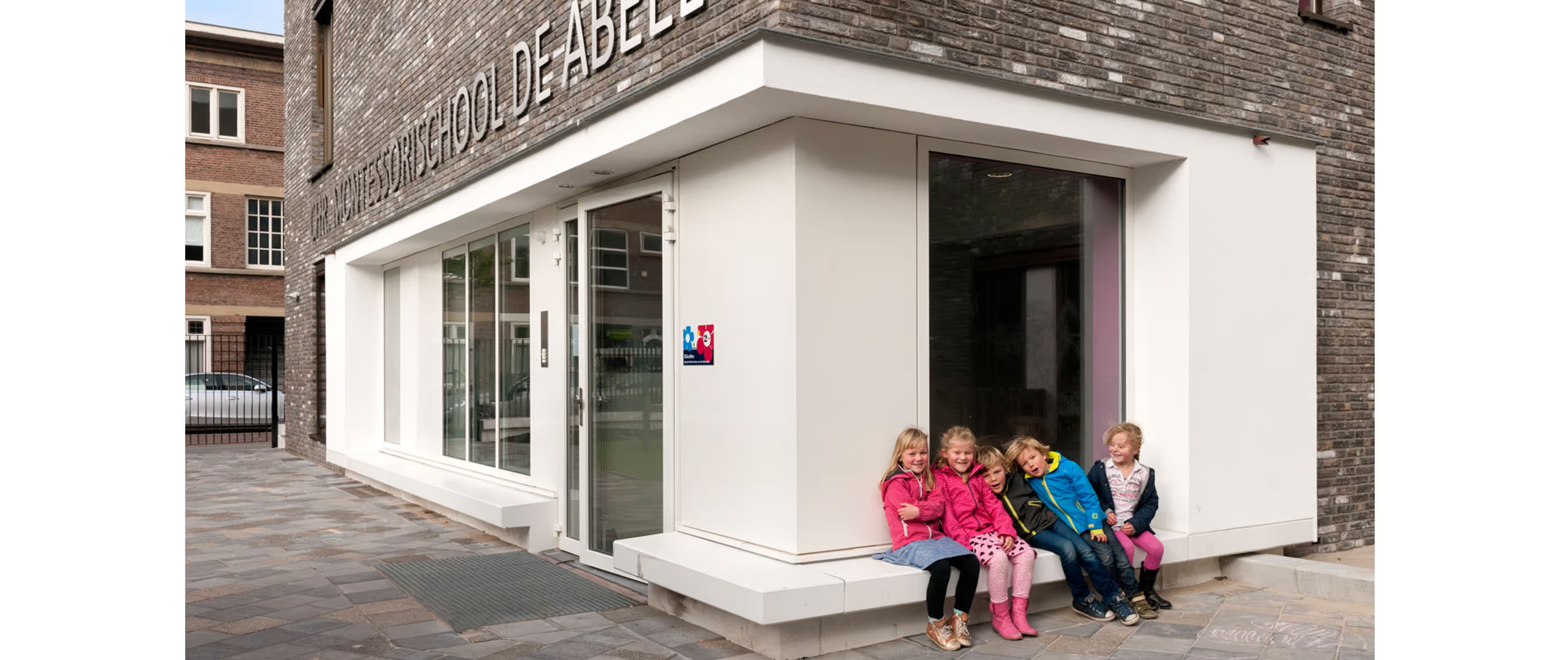
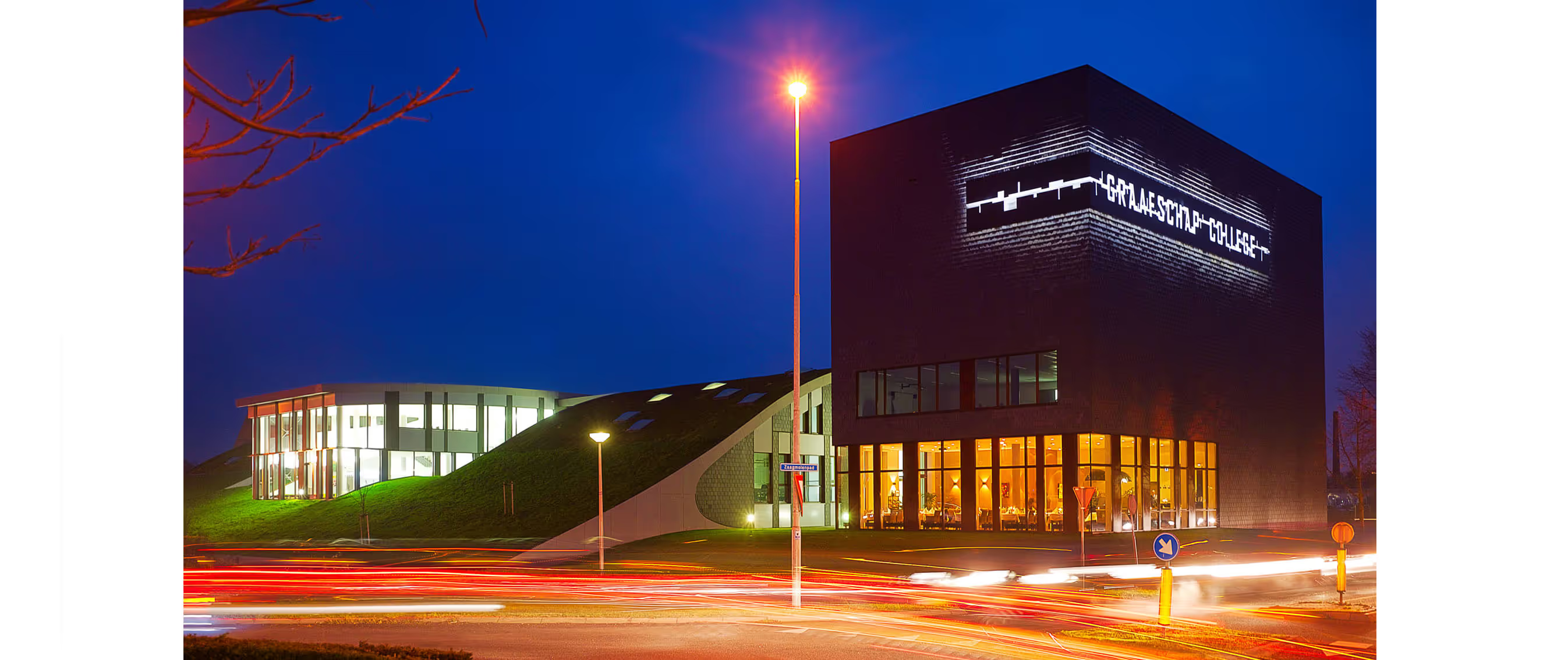
.jpg)

